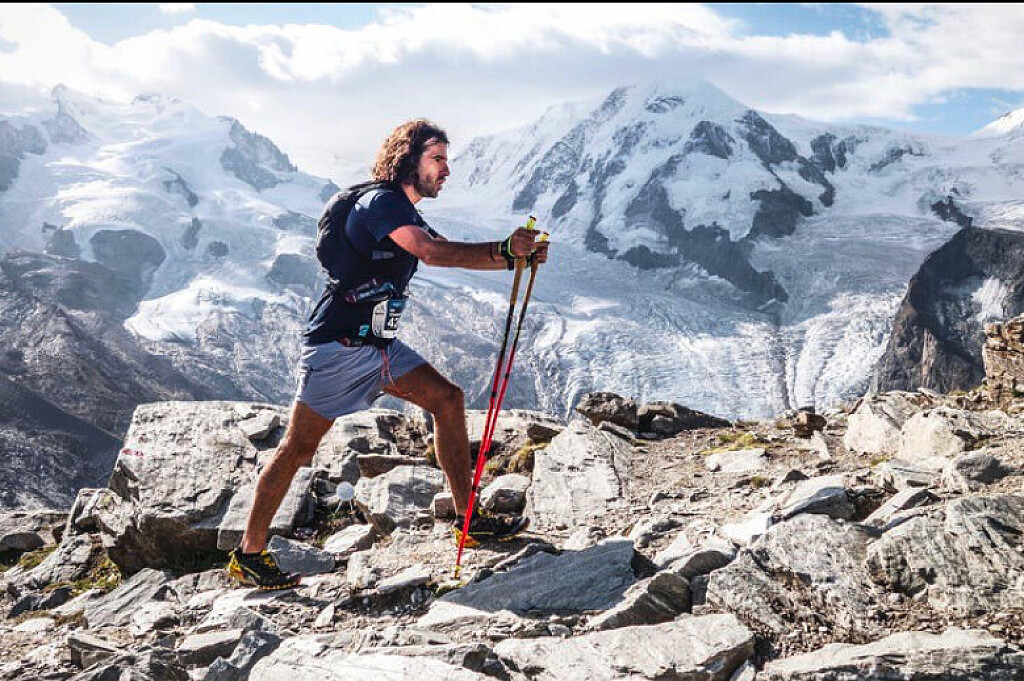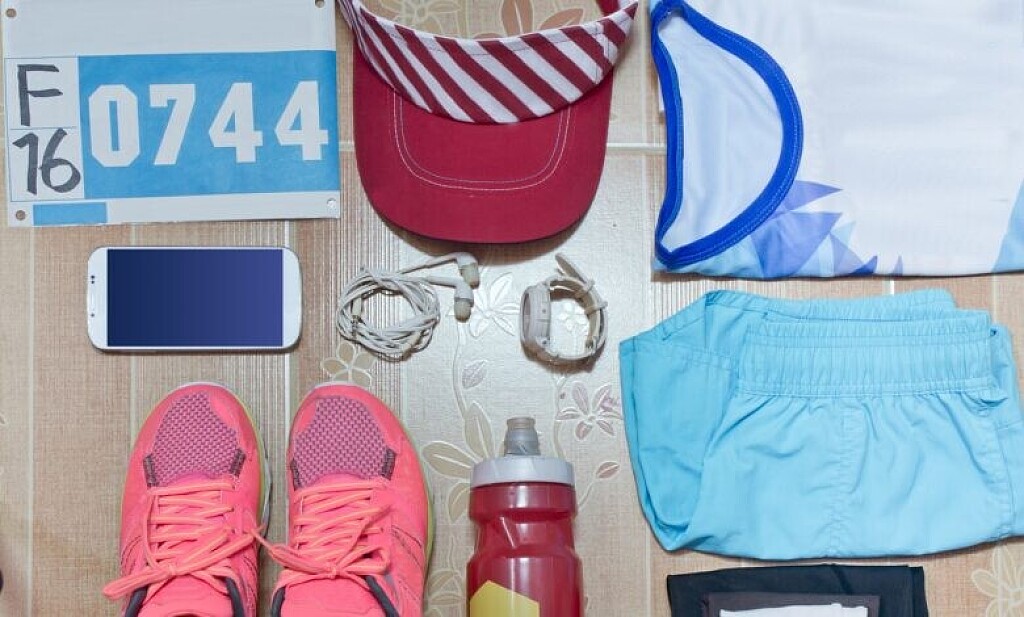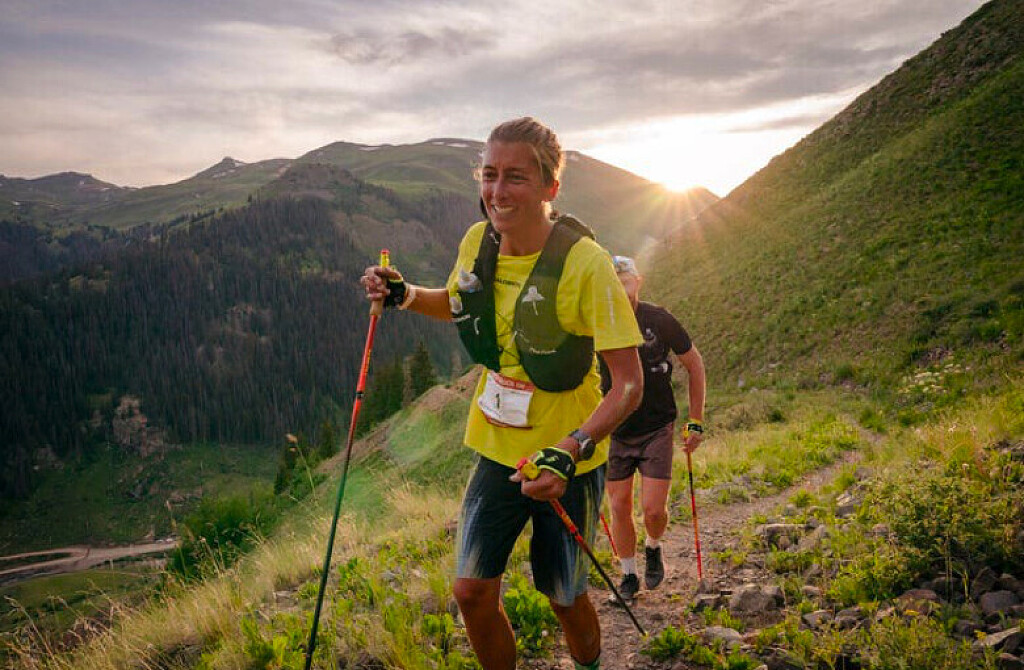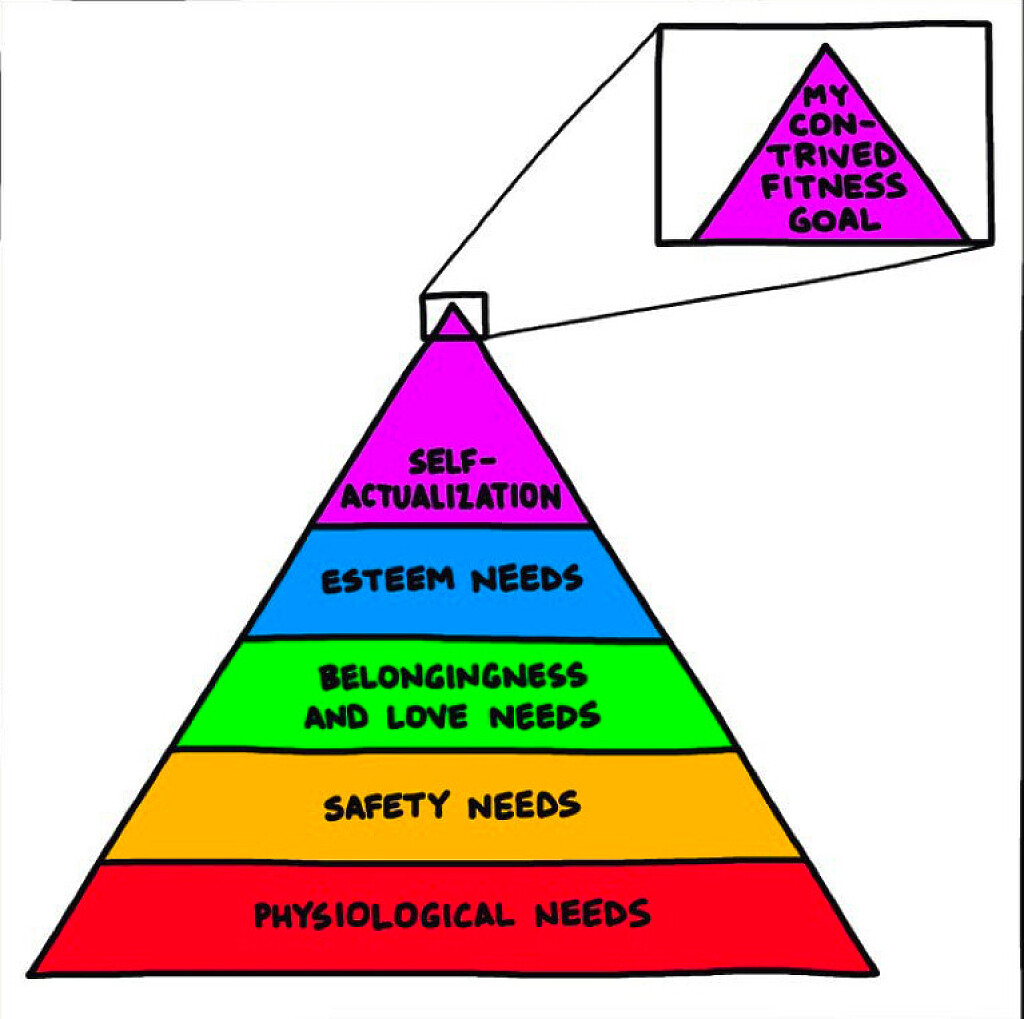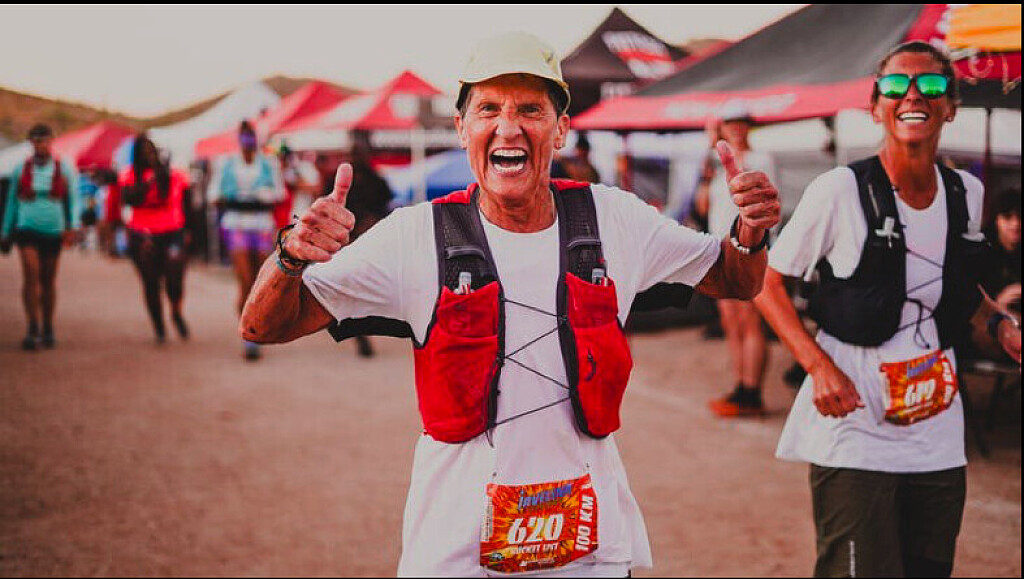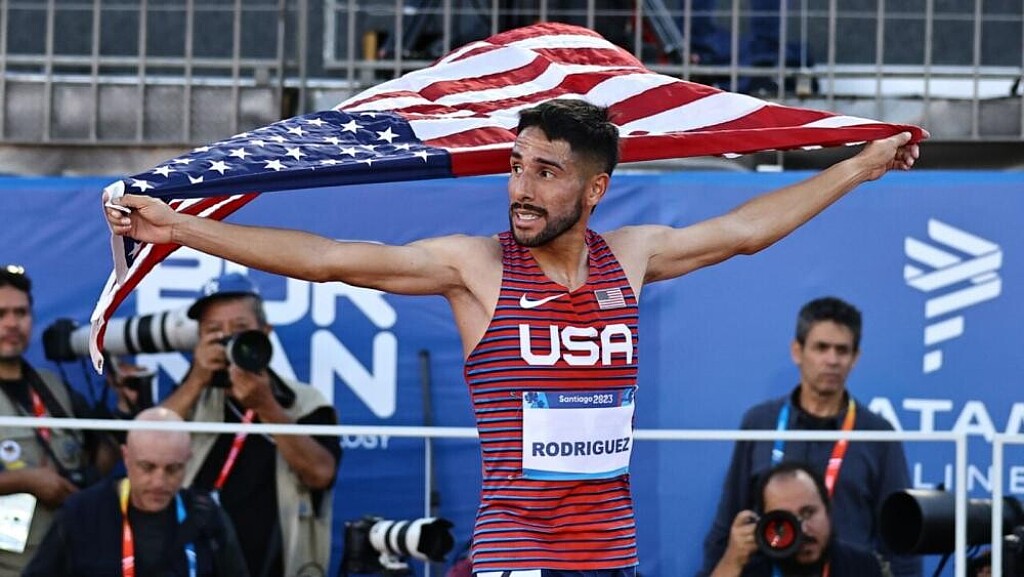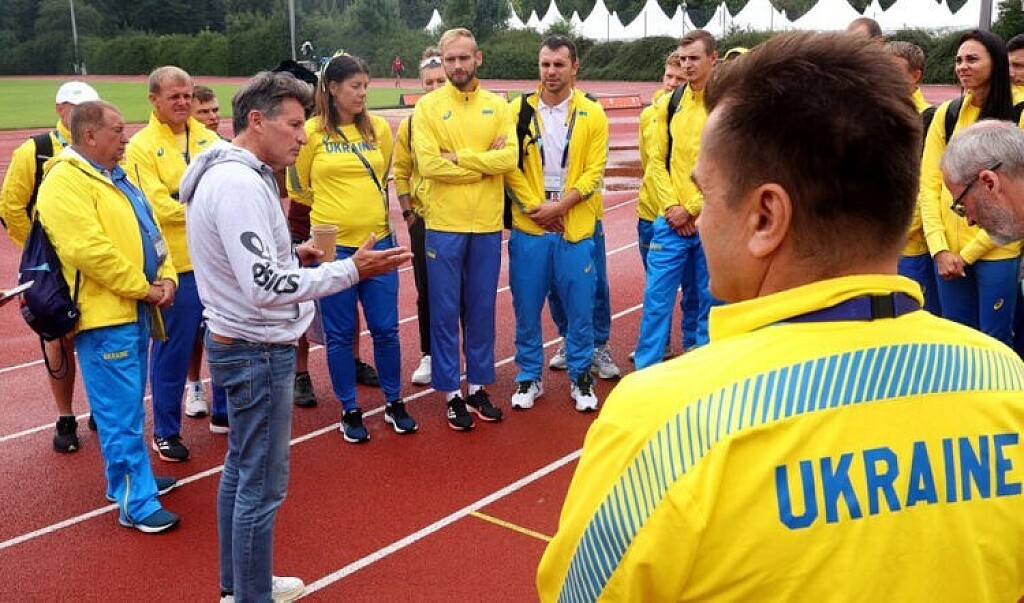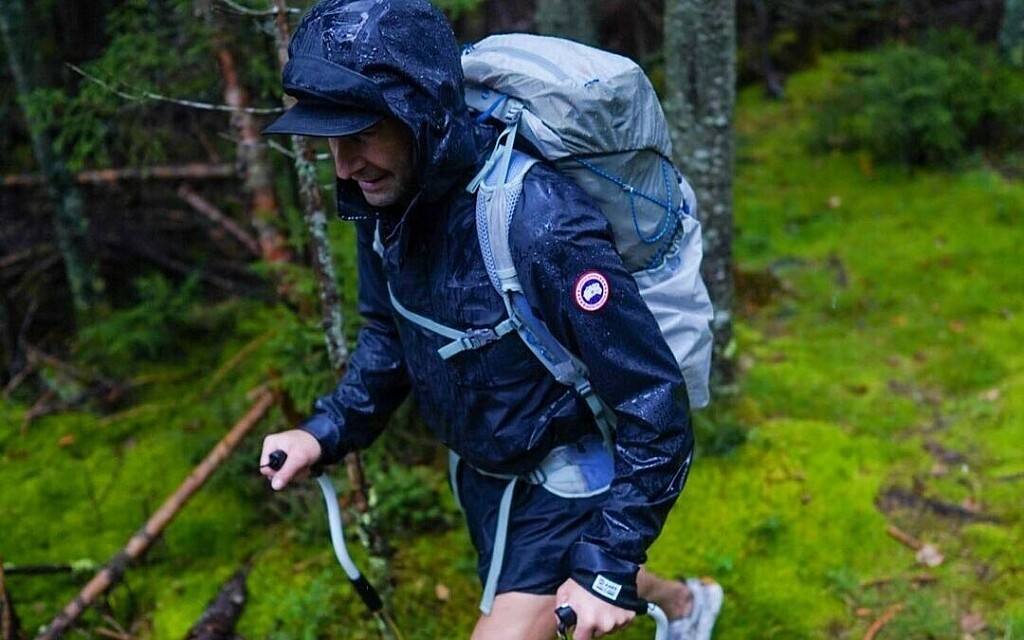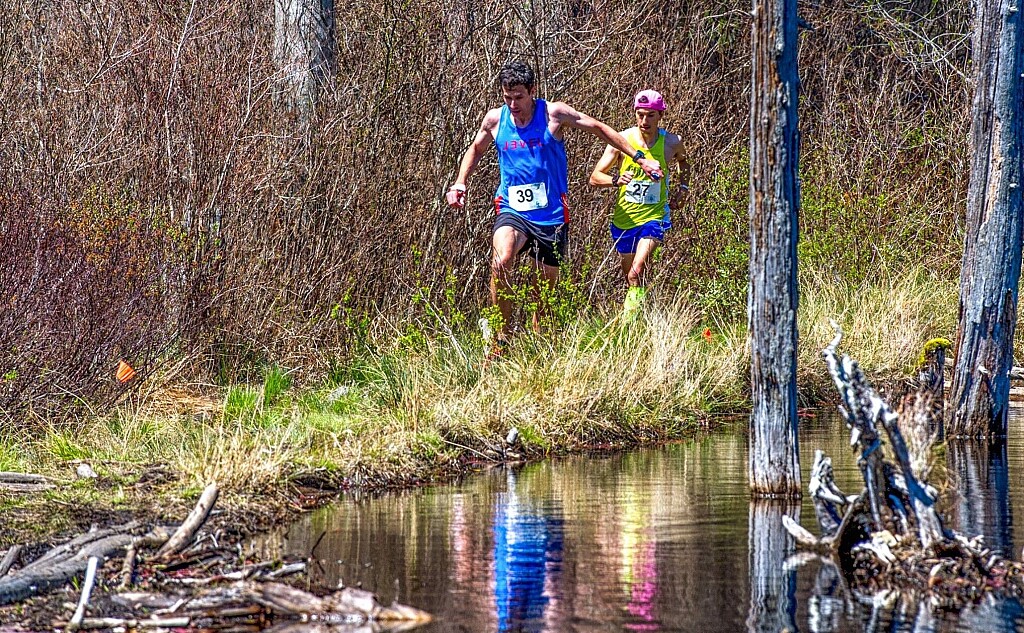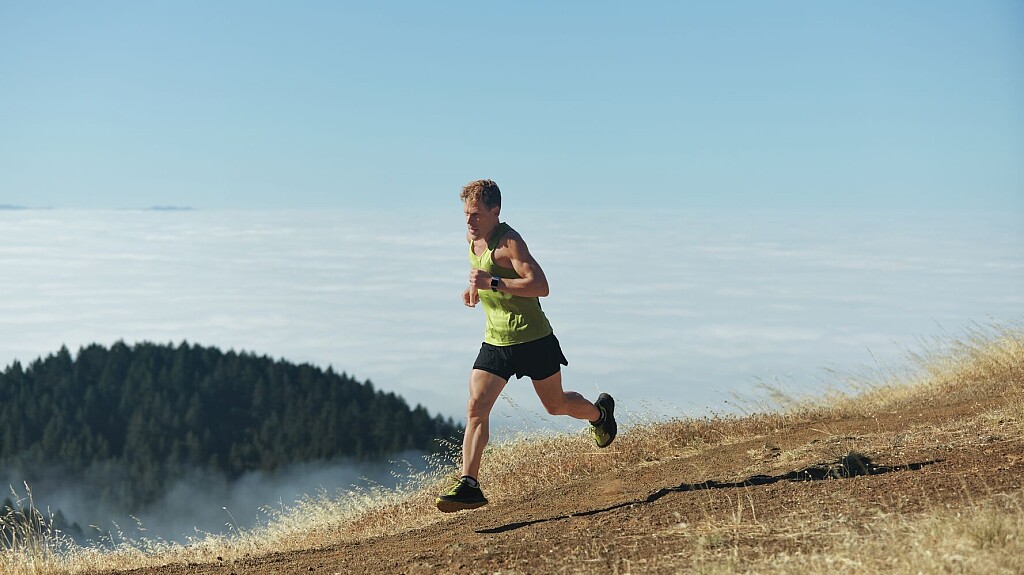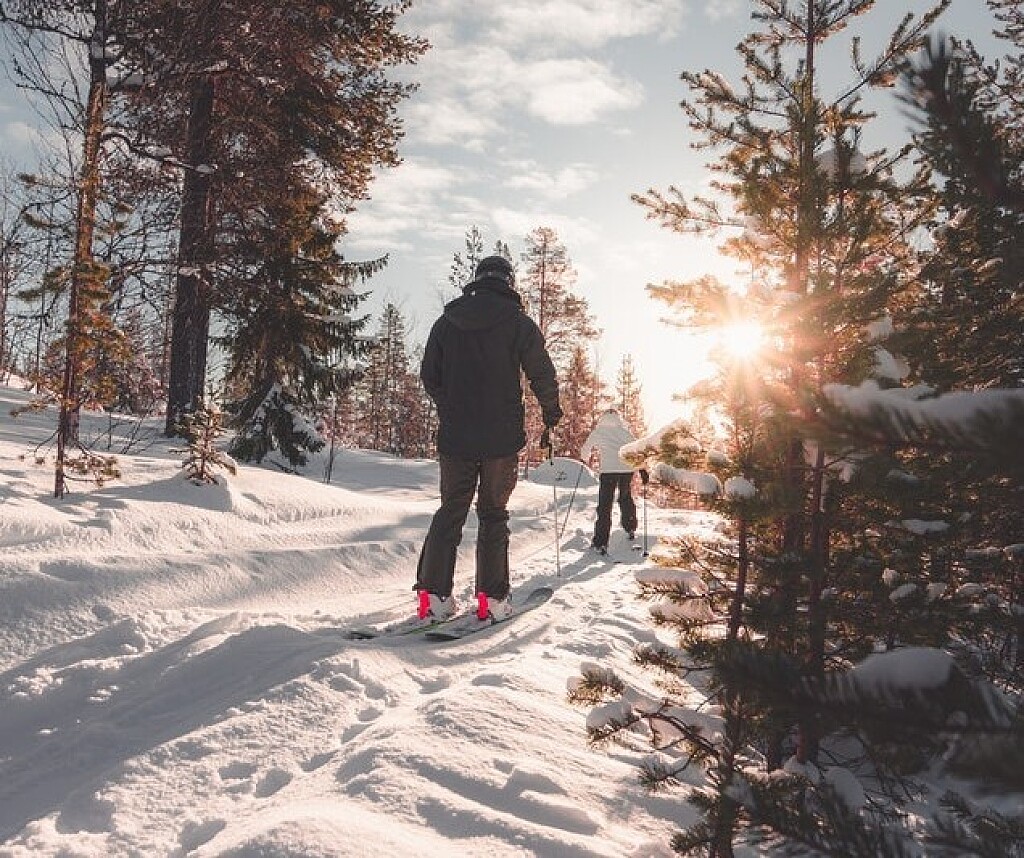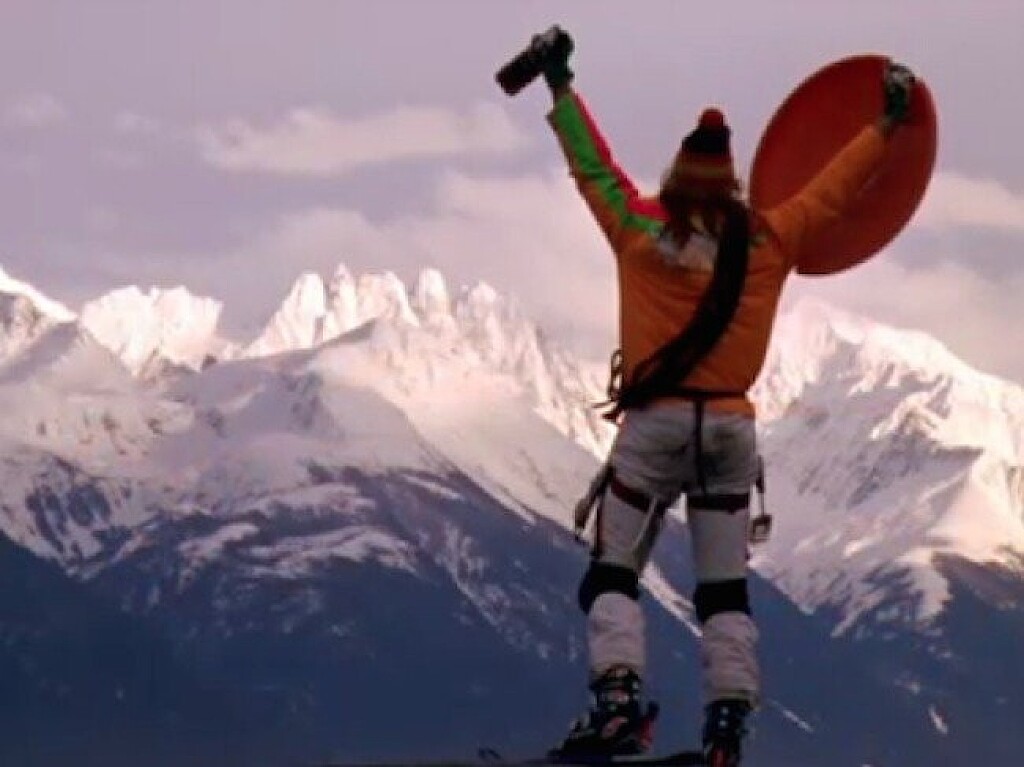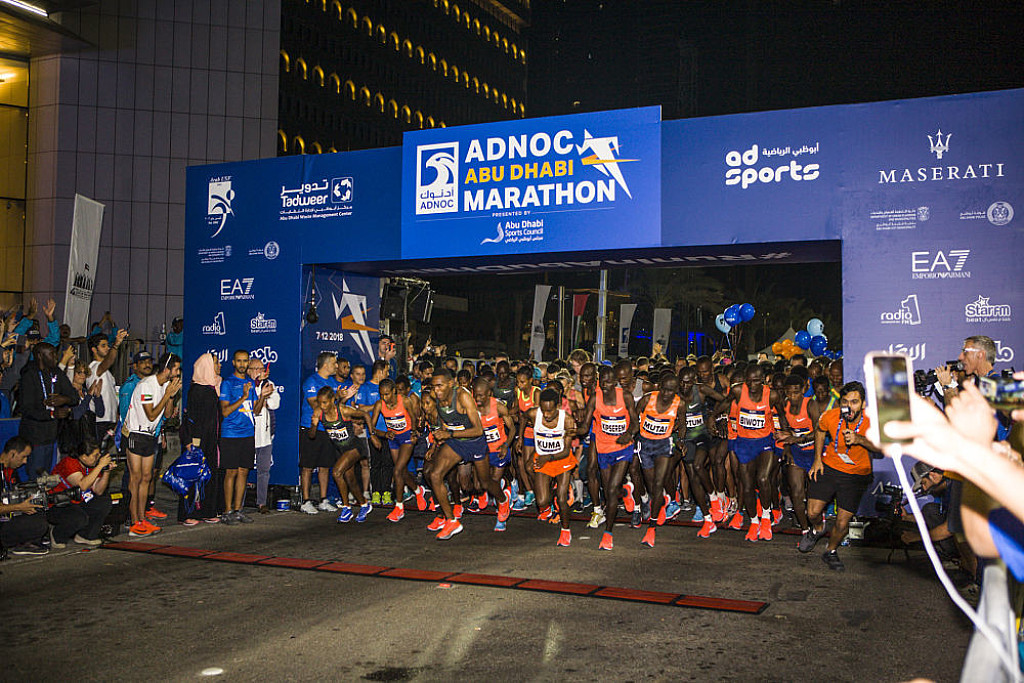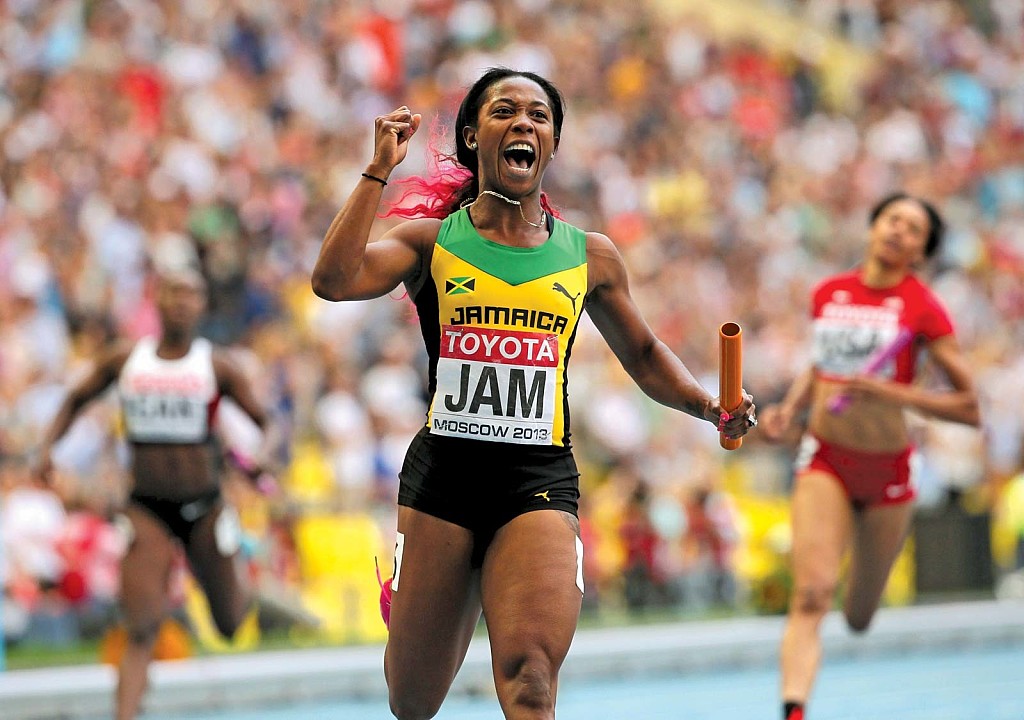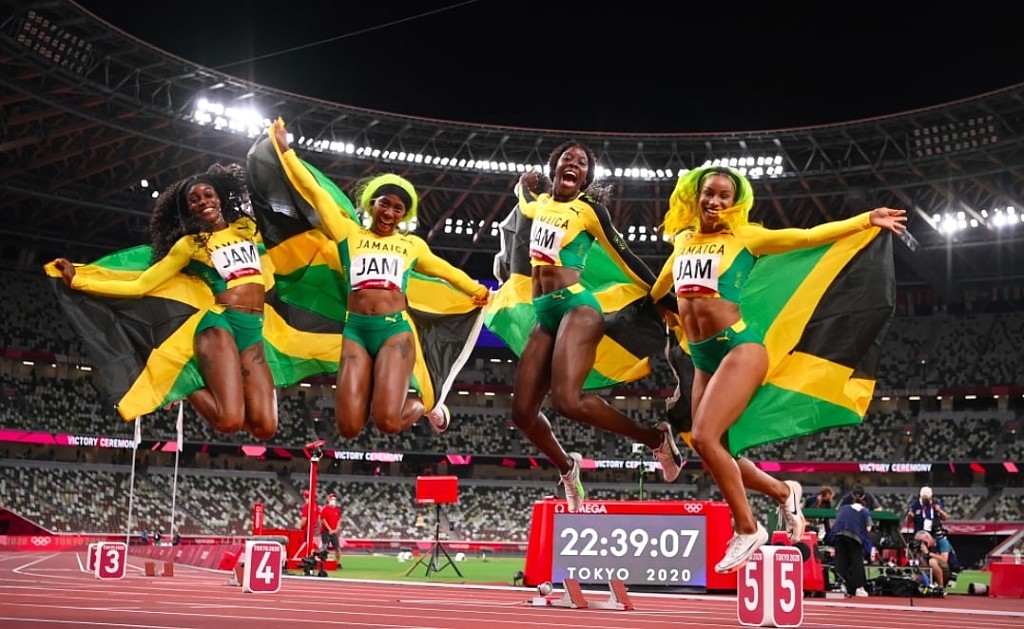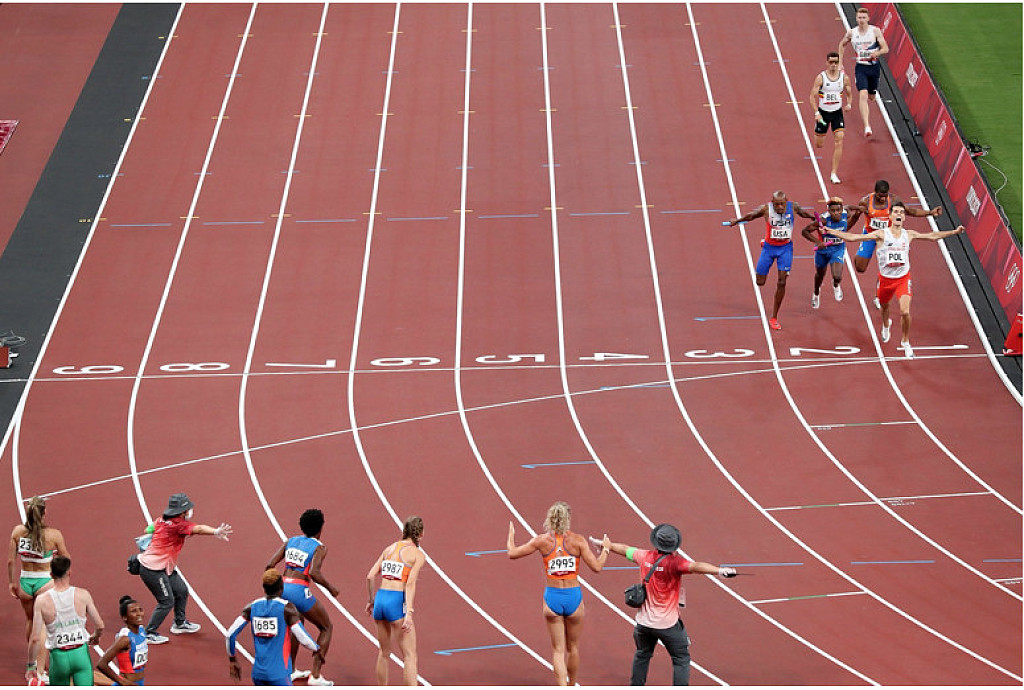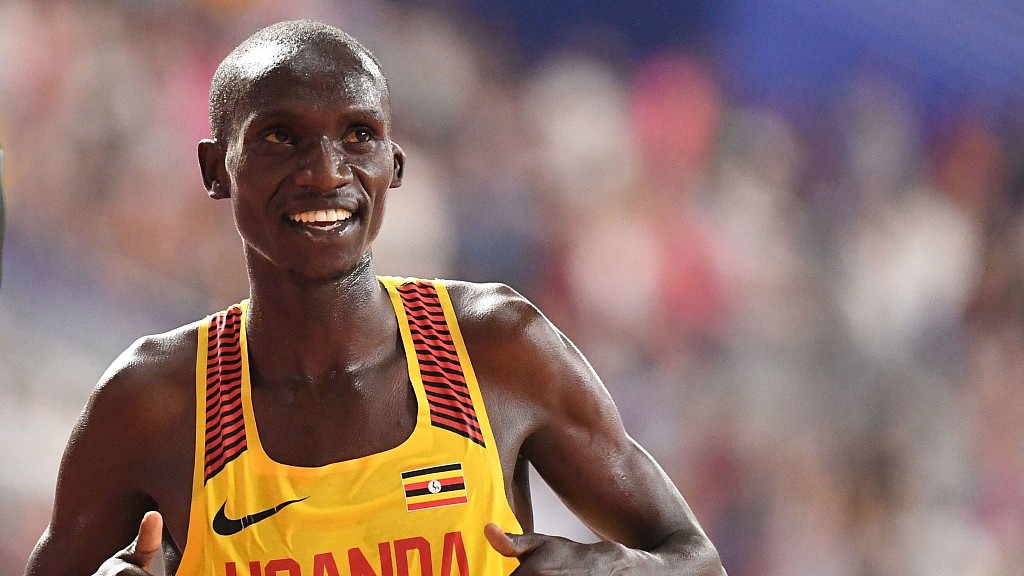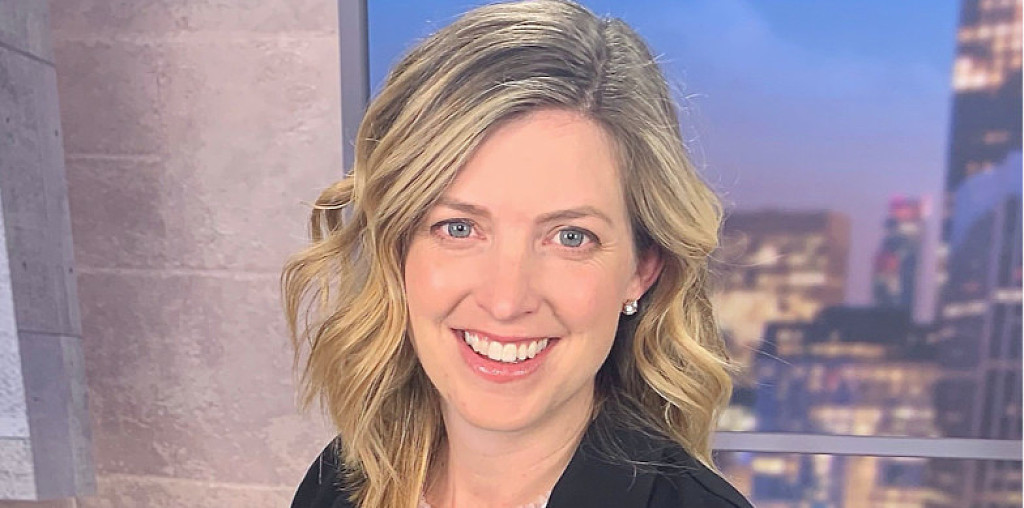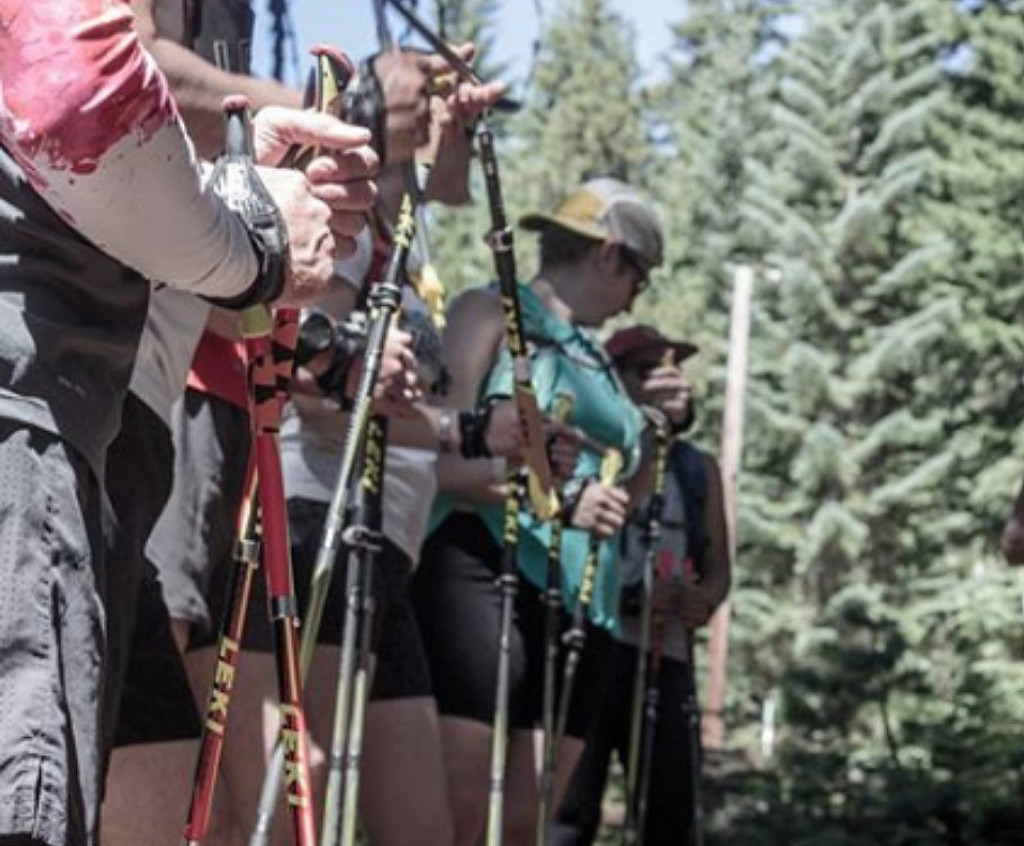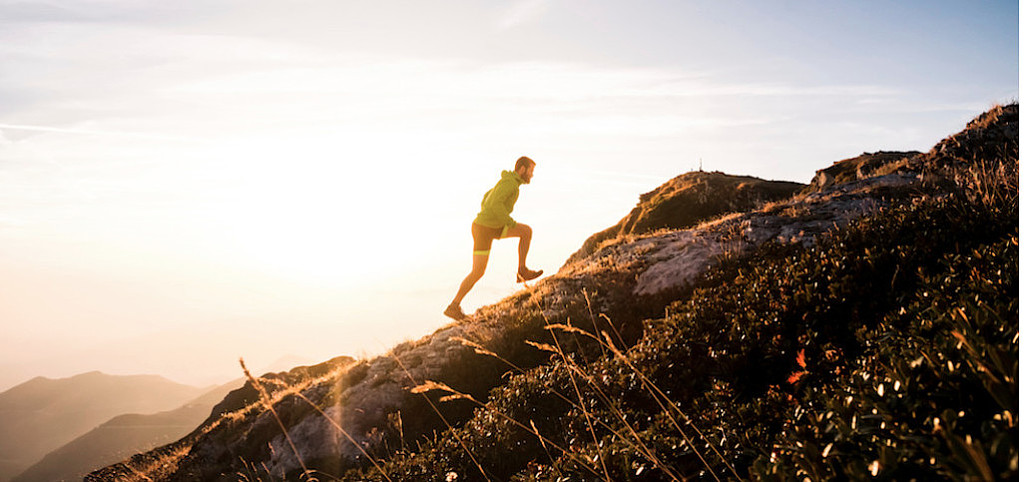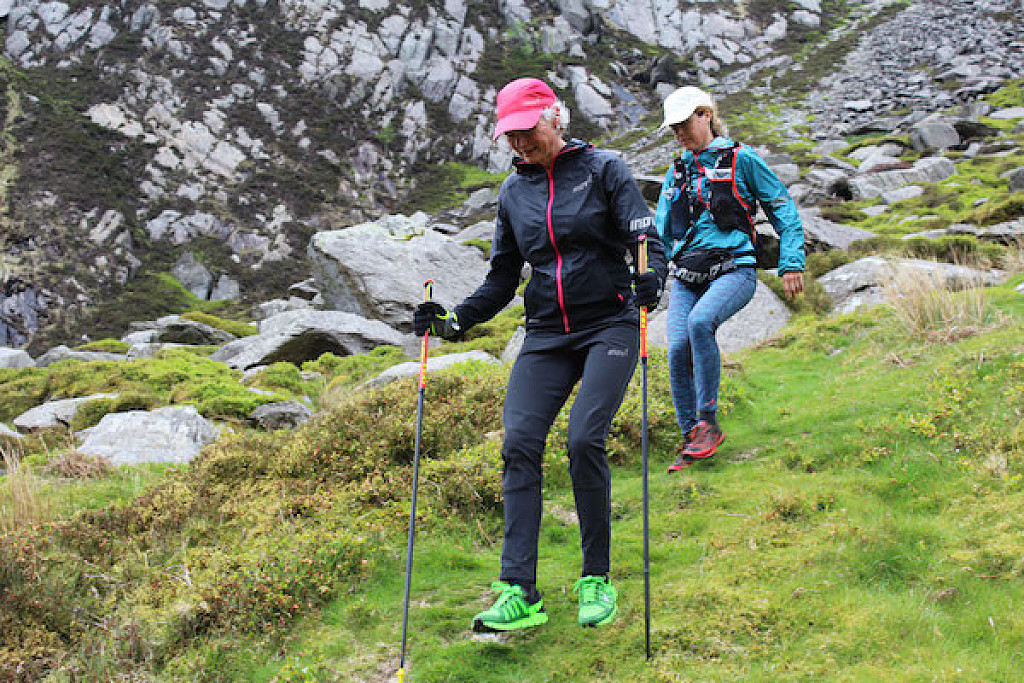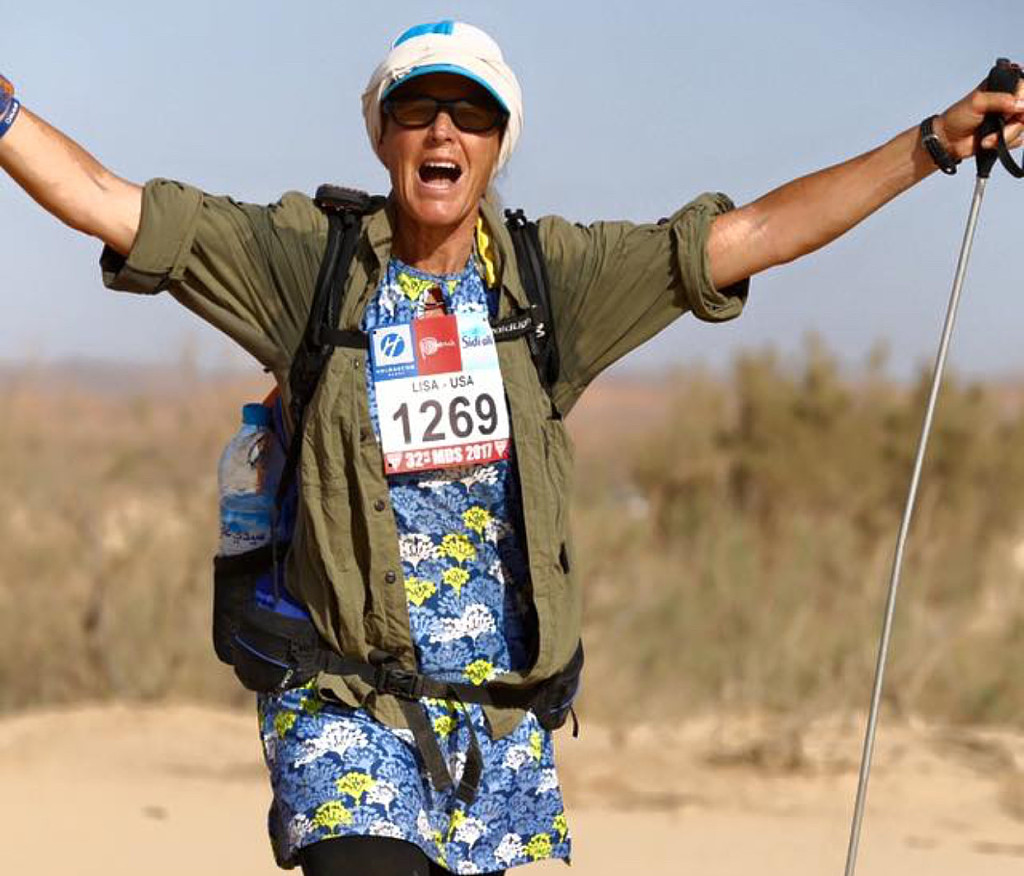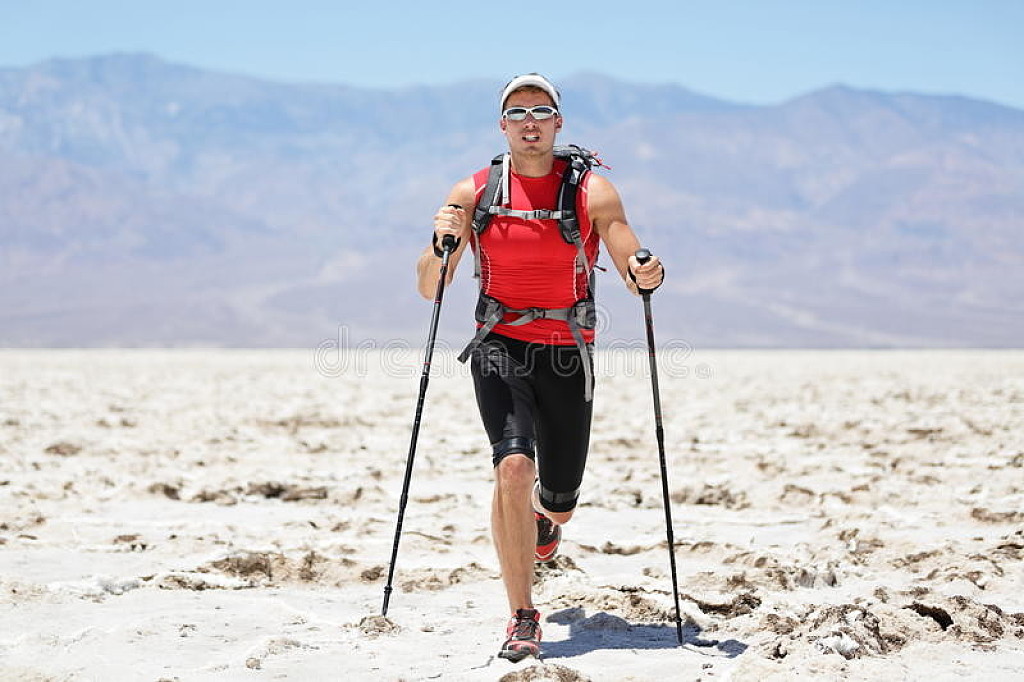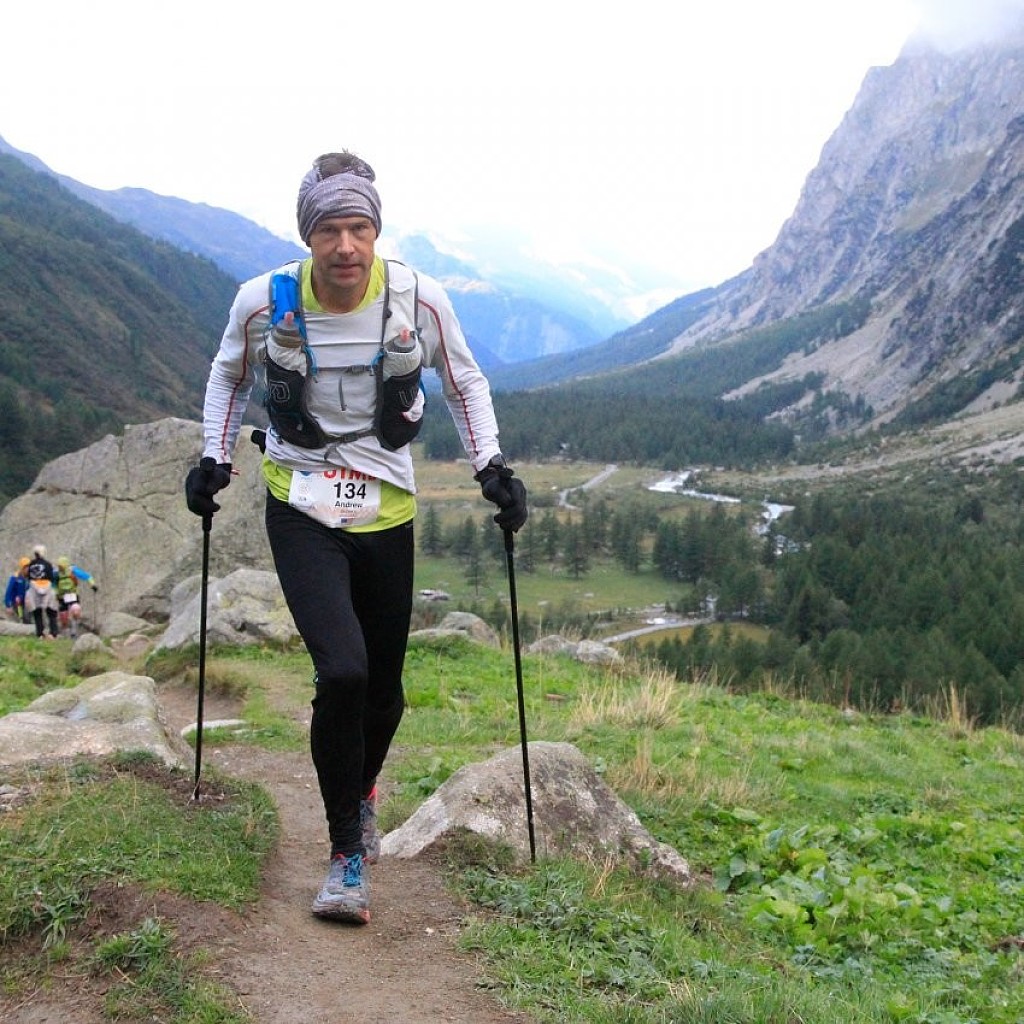Running News Daily
Running News Daily is edited by Bob Anderson. Send your news items to bob@mybestruns.com Advertising opportunities available. Train the Kenyan Way at KATA Kenya and Portugal owned and operated by Bob Anderson. Be sure to catch our movie A Long Run the movie KATA Running Camps and KATA Potato Farms - 31 now open in Kenya! https://kata.ke/
Index to Daily Posts · Sign Up For Updates · Run The World Feed
Articles tagged #Poles
Today's Running News
Singer Charles Costa Needed a Reset, So He Ran the Entire Pacific Crest Trail
Charles Costa spent three months running along the Pacific Crest Trail this summer and fall as an act of holistic rejuvenation.
The 39-year-old from London, England, set out with a bold goal of averaging 90 marathons in 90 days as a means to help reset his life-both to revive his stalled music career and to find a more balanced state of mind-but the multi-genre electronic British folk artist with 1 million streams and more than 120,000 monthly Spotify listeners says it turned out to be so much more than that.
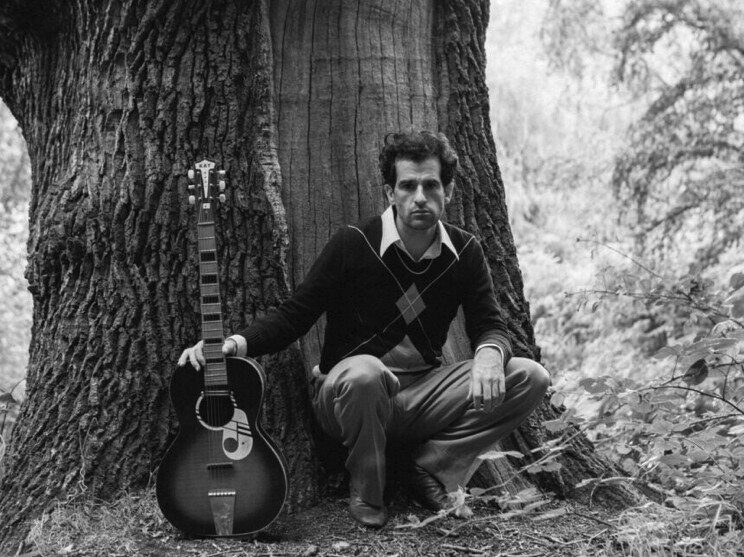
Because of lingering physical and psychological challenges from a brain injury suffered in a catastrophic skiing accident in Austria in 2010, Costa found himself in a delicate position that forced him at times to pause his music career while managing his mental health. Until he found trail running, he routinely battled a variety of mental, emotional and logistical ailments, ranging from uncontrollable anxiety to comprehensive darkness.
After averaging close to 30 challenging miles of running on the PCT per day starting on July 20, Costa admitted he was ready to finish the route, get off the trail, and get back to living a more stabilized
Recovering a Sense of Charles Costa
After the ski accident, Costa had been through numerous types of therapy and was taking what he characterized as "mind-monitoring, mind-maintaining drugs" that wound up consuming his life. In his long rehabilitative process, he eventually discovered that running-and specifically ultra-distance trail running-offered more of a physical, mental, and emotional panacea from lingering pain and mental discontinuity than anything else, and it also gave him a space to process what was going on in his life. It allowed him to get away from it all while being more connected to himself.
Costa said the more he immersed himself in running, the more he wanted to do something special to reinvigorate his life, relaunch his music career while also giving back. He's run numerous trail races in Europe in recent years, including the Montreux Trail Festival 70K last summer and the Swiss Canyon Trail 81K in Switzerland in June. (He placed 54th out of 225 runners in 11 hours, 23 minutes and 7 seconds.) He's also run the 813-mile length of Great Britain from the northern tip of Scotland down to the southwestern tip of England.
Seeking to challenge himself on a long and very difficult task that he hoped would be a transformative life experience, he settled on running the length of the PCT- a three-month, 2,650-mile trail running journey with 489,000 feet of elevation change. But he hasn't been doing it just for himself. Along the way, he's been raising money (about $170,000 so far) and stirring up attention for The Jed Foundation, a nonprofit that protects emotional health and prevents suicide for our nation's teens and young adults, and James' Place, a UK-based charity that provides free therapy and is dedicated to suicide prevention for men.
At the completion of the route, which has taken him from the U.S.-Canadian border and through parts of Washington, Oregon, and California, the British singer-songwriter officially released his first new song in several years and the first under his own name. (He originally performed and recorded under the moniker of "King Charles," a false front of a stage persona that he never really liked and that also contributed to his inability to fully express himself the way he wanted.)
The song is called "Nothing at the Most" and will be included on
Costa, who plays piano, guitar, and cello, has found his run to be a curing activity that has helped untangle his heart and mind and put him back in position to work as a professional musician.
"One thing I love about running is the rhythm of it," he said. "It's the effect that rhythm has on your mind. Days like I'm doing at the moment, it's dawn to dusk. It's up to 12 hours of just pounding the ground. And there are so many different rhythms that you get into. And I think once you're in a rhythm, your mind gets into a different place. You start thinking less. You let more in, especially when you're in beautiful places. You let more in in terms of inspiration. So, I find running very inspiring, especially in the wilderness and in some of these incredibly beautiful places."
The song "Nothing at the Most" is part of a collection of songs filled with the sounds and lyrics he says are meant to represent his journey between longing and lament. It's an intimate, cello-infused chamber-pop ballad with his soulful voice. Costa recorded several songs in the spring with producer Jesse Quin at
Enduring the Trail
As he was nearing the end of the route last week, Costa said his body was tired and a bit broken down but his soul felt re-energized. While he's remained injury-free, he's battled fatigue, blisters, muscle strains, all sorts of weather conditions, and insomnia-all common maladies to multi-day running adventures. He's worn through several pairs of On and La Sportiva trail running shoes and has relied heavily on his lightweight trekking poles, as well as his small but diligent crew that's managed his meals, gear, logistics and more.
Costa says he's listened to a lot of music out on the trail and has occasionally sang out loud to help the miles go by, but he's also made it a point to soak in the peaceful aura of the wilderness. He says it's been a devilishly hard endeavor and is amazed how "there isn't a single flat section" in the entire route.
"I'm holding it together. My muscles and limbs are all still working as they should, but I guess what starts falling apart is the mind," Costa said. "Even though I've been looking forward to the last 20 days and the last 10
Login to leave a comment
How to Prepare For Your First Running Event
Are you signed up for your first running race this year? If so, you might be wondering what to do next. Many of us register for a 10k or half marathon in the hopes that doing so will simply motivate (or pressure) us to get to the finish line, and sometimes, it does. But let’s face it, Forrest Gump was just a movie. In real life, without proper preparation, you could wind up injured, unable to finish, or not even make it to the starting blocks, all of which would be really disappointing, to say the least.
Preparing for your first race requires careful planning, from training and getting the right kit to goal-setting and pre-race fuelling. Proper preparation ensures you’re physically ready for the race, have the energy to keep going and can overcome race day nerves, all of which will mean you have a more enjoyable race, and are likely to make it the first of many.
1. Set a goal
Once you’ve chosen a race and signed up, it can be smart to set an achievable goal. This can give you something to focus on during both your training and your race, and that can help you stay motivated, while achieving your goal can also give you a greater sense of satisfaction (for this reason, it’s a good idea to set a secondary goal in case you don’t make your primary goal.
Your goal could be something ambitious, like running a sub three-hour marathon, but it can easily be as simple as just finishing the race. When I did my first triathlon in 2012, I simply wanted to finish and I wanted to do so without walking during any of the running section. I didn’t finish anywhere near the podium, but I managed to achieve my goals and I was really happy with myself.

2. Make a training plan
For injury prevention, it’s obviously vital to make a smart training plan, and to leave yourself enough time before race day to actually execute it. There is no one way to train, and your plan will depend on where you’re starting and where you want to get to, but just as a rough idea, in our first marathon training plan we recommend 12 weeks for seasoned runners, but a full year for novices.
The most important aspect of training to remember is to build up gradually to give your body time to adapt to each increase in load, make ample room for rest and recovery and if possible, work with a coach and train in conditions similar to those you’ll be racing in.
3. Gear up
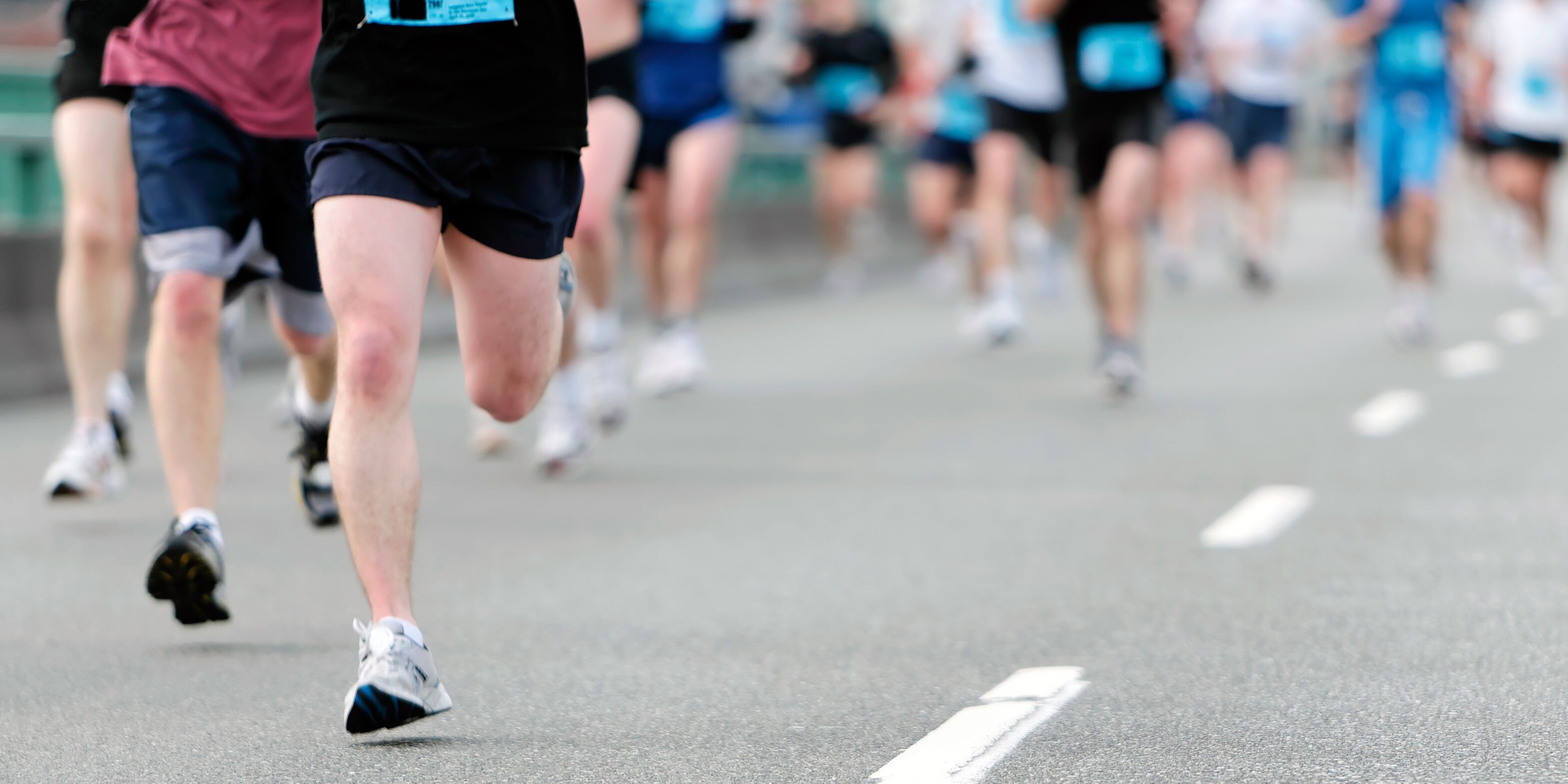
As you get closer to the big day, you’ll need to start to consider your gear. You’ll need to choose trail running shoes or road running shoes and have trained in them for a while to be sure they’re right for you. If you’ve already put in a ton of miles of them, you may need to replace them with an identical pair a few weeks before the race, and break them in. Once you’ve found the perfect pair of running socks, have a new or nearly new pair set aside for race day.
Use your training months to figure out what clothing you’re most comfortable in, taking into account the expected climate and conditions. Are you happiest in a pair of running shorts or do you prefer running tights? You’ll need a well-fitting running top that’s breathable and doesn’t chafe, and consider whether you want to run with a headband or running hat if you're expecting sunny conditions.
Remember, the general rule for running is light, breathable clothing that wicks moisture, but everyone is different. Reigning UTMB champ Courtney Dauwalter is well-known for running in baggy men’s running shorts and shorts, which isn’t common, but it definitely works for her.
4. Rest up
You’ll spend months slowly ramping up your mileage in order to reach your race distance, but once you get there, you’ll want to start to reduce both your distance and intensity in the final couple of weeks before your race, a practice known as tapering. During this time, you’ll focus on easy runs.
In the final two days before your race, get complete rest and lots of sleep. If you’re not a great sleeper, read our article getting better sleep for some tips on improving your sleep hygiene and routine.
5. Recce your route
Ultra runner Renee McGregor has ranked highly in some pretty rugged races, from Snowdonia to the Himalayas, and when I heard her talk about her accomplishments, she described making the podium in a gnarly race where the majority of participants took a wrong turn. Her advantage? She wasn’t necessarily the fastest runner, but she had checked out the race course ahead of time and knew where to go.
Understanding your route before you take off, if possible, can help you plan for when you’re going to want to slow down, or walk, where you can gain back some time, when and if you’ll need running poles and any tricky sections in a trail race where there’s the possibility of getting off-route.
6. Get in the right headspace
In addition to your physical training, it’s advisable to give your mental state some attention. Running a race can be exhilarating and empowering but it can also be nerve wracking and daunting. In the months leading up to your race, it can be worthwhile practicing mindfulness or meditation, which a 2020 study published in the journal Neural Plasticity found improved coordination, endurance and cognitive function. This could help you in the lead up to the race and in combating race-day nerves.
Know yourself and understand what you’ll need the day before your race and morning of to ensure you’re in the best head space possible. It might be good to minimize social contact and give yourself some quiet time to focus and get in the right headspace.
7. Fuel up
Just like filling up the tank of your car before you set off on a long drive, you’re going to want to make sure your body has plenty of energy stored before a race. For a race that’s not likely to take much more than an hour, you can simply make sure you eat well in the couple of preceding days, but fueling for endurance races can take careful fine-tuning. Following his second-place win at the 2023 UTMB, Zach Miller revealed that for him, managing his sodium levels with salt tablets was the secret to success.
For longer distances, you might want to consider increasing your carbohydrate intake – a practice known as carb loading – to increase your body’s glycogen stores. The best nutritional advice is to focus on well-balanced meals with protein and carbohydrates and not going overboard on refined carbs or fiber, which might wreak havoc on your gut. Learn more in our article on carb loading.
Though you should definitely eat well in the days leading up to your race, if you’re going to be able to eat during the race and are loading your hydration vest up with running gels, then you don’t necessarily need to carb load, but you will want to make sure your stomach can handle gels and take them with plenty of water to avoid the dreaded “runners' trots.”
Ultimately, for longer endurance races, working with a dietician will give you an advantage, since every athlete and every race is different. This will help you avoid the pitfalls of low energy availability and might help you figure out your unique nutritional needs faster.
8. Pre-hydrate
As we explain in our article on hydration tips for runners, hydration for a race doesn’t begin with filling up your hydration pack. Your behavior in the days before a long run can really affect your hydration levels on the big day, so avoid dehydrating foods like caffeine and alcohol.
According to Susan Kitchen, registered dietitian and USA Triathlon Level II and IRONMAN certified endurance coach, if you’re training for a big race, you want to avoid being in the heat unnecessarily in the days leading up to it, unless you're just doing a training run, but sitting outside on the beach sweating, or in a sauna, is not a good idea. Sip plenty of water in the days before your race, too.
9. Make a recovery plan
Chances are, all of your energy and efforts will be focused on that finish line, but the longer the race, the more you’ll want to make a recovery plan, otherwise it’s all too easy to end up having too many celebratory beers, which after a long run can be a bad idea.
Try to plan for at least a couple of days off work following your race to recuperate, hydrate and nourish your body, schedule a massage and engage in some of your favorite recovery activities to reward your body for all its hard work.
10. Set your alarm
The night before race day, make sure you set your alarm nice and early so you have plenty of time to prepare. Chiefly, you’ll want to have time to sip water, eat and give yourself enough digestion time before the starting gun goes.
In our article on what to eat before a half marathon, we explain that nutrition experts recommend runners eat a familiar breakfast around three to four hours before the race start, or a large snack 90 minutes to two hours beforehand. When deciding what time to get up, factor in that meal as well as how much time you need to get to the race plus any other pre-race rituals you want to observe.
by Julia Clarke
Login to leave a comment
Ludovic Pommeret Wins Hardrock 100 in Course-Record Time Courtney Dauwalter is on course-record pace, trying to win the race for a third consecutive year
This is an ongoing story that will continue to be updated as more runners reach the finish line in Silverton, Colorado.]
Maybe you forgot that Ludovic Pommeret was the 2016 Ultra-Trail du Mont-Blanc champion. Or that he was the fifth-place finisher in Chamonix, France, just last year. Or maybe you thought the 49-year-old Frenchman was past his prime. Either way, he reminded us all he’s at the top of not only his game, but the game at the 2024 Hardrock 100.
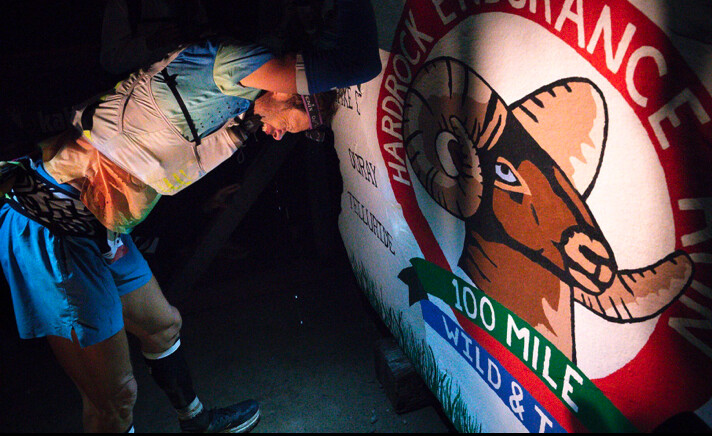
The Hoka-sponsored runner from Prevessin, France, took the lead less than a third of the way into the rugged 100.5-mile clockwise-edition of the course after separating from countryman François D’Haene, the 2021 Hardrock champion and 2022 runner-up, and never looked back. Pommeret progressively chipped away at the course record splits—a course record, mind you, set by none other than Kilian Jornet in 2022—to win this year’s event in 21:33:12, the fastest time in the race’s 33-year history. Jornet set the previous overall course record of 21:36:24, also in this clockwise direction in 2022.
(Pommeret kissed the rock in to complete the course in 21:33:07 at 4:33 A.M. local time, but race officials credited him with the slightly slower official time.)
“It was my dream (to win it),” Pommert told a small collection of fans and media after winning the race at 3:33 A.M. local time. “I was just asking ‘when will there be a nightmare?’ But finally, there was no nightmare. Thanks to my crew. They were amazing. And thanks to all of you. This race is, uh, no word, just so cool and wild and tough.”
On Friday, July 12, 146 lucky runners embarked on the 2024 Hardrock 100. Run in the clockwise direction this year, it was the “easy” way for the course with a staggering 33,000 feet of climbing and an average elevation over 11,000 feet thanks to the steep climbs and more tempered, runnable descents.
Combined with relatively cooperative weather (hot during the day on Friday, but no storms) and a star-studded front of the pack headlined by Courtney Dauwalter and D’Haene, the tight-knit Hardrock 100 community was on course record watch.
And the event delivered—along with a whole lot more.
On the men’s side, the front of the race took a blow before the gun even went off when Zach Miller, last year’s Ultra-Trail du Mont Blanc runner-up, was denied entry after undergoing an emergency appendectomy the weekend before.
Despite the heartbreak of being forced to wait another year to participate in this hallowed event, Miller was very much a presence in the race, most notably for slinging fastnachts (Amish donuts) from his van in Ouray for race supporters and fans.
Such is the spirit of this event, deemed equally as much a run as a race.
The men’s race was further upended when D’Haene, in tears surrounded by his wife, three children, and friends, dropped from the race at the remote Animas Forks aid station (mile 58). An illness from two weeks before proved insurmountable for the challenge ahead. That blew the door wide open for the hard-charging leaders ahead.
Pommeret had built a 45-minute lead over Jason Schlarb, an American runner who lives locally in Durango, and Swiss runner Diego Pazosby, the time he had left the 43.9-mile Ouray aid station amid 85-degree temperatures. His split climbing up and over 12,800-foot Engineer Pass (mile 51.8) extended his lead to more than an hour over Schlarb and nearly 90-minutes at the Animas Forks aid station.
“I thought it was great. To run off the front like he did, and then just hold that all day and get the overall course record is pretty awesome,” Miller said. “When Killian did it, two years ago, it was a, it was a track race between him, Dakota, and François, after they got some separation from Dakota, it was Kilian and and François, all the way to Cunningham Gulch (the mile 91 aid station) and then Kilian just torched it on the way in. So yeah, it was super, super impressive for Ludo to do that. That’s a very impressive effort.”
The sleepy historic mining town of Silverton, Colorado was unusually hectic at 6 A.M. on Friday. In the blue hour before the sun poked over the San Juan Mountains looming above, 146 runners toed the start line of the Hardrock 100, marked by flags from the countries represented by competitors on either side of the dirt road.
With the sound of the gun, runners jogged off the start line—their caution a tacit sign of respect for the monumental challenge of what was to come. As the runners passed through town to the singletrack wending its way up to Miner’s Shrine, group of men headlined by D’Haene, Ludovic Pommeret, Diego Pazos, and Jason Schlarb quickly took command of the front, the bright yellow t-shirt of Courtney Dauwalter was easy to spot just behind, along with Katharina Hartmuth and Camille Bruyas.
If they weren’t awake already, runners certainly were after crossing the ice-cold Mineral Creek two miles into their journey before starting the grunt up to Putnam Basin. At the top of a sunny, grassy Putnam Ridge (mile 7) 1:34 into the race, the lead pack of men remained, while Dauwalter had made a statement solo just three minutes back from the men and four minutes up on Hartmuth.
Dauwalter was smiling and chatty when she reached the KT aid station at mile 11.5, in 2:24 elapsed. By Chapman (mile 18.4), four hours in and 10 minutes under her own course record pace, she was pouring water on her head under the blazing sun. Things were heating up—in more ways than one.
When Pommeret galloped into Telluride (mile 27.7) after 5:37 of elapsed time in the lead, he was right on Jornet’s course record pace. One minute, some fluids and restocking later, and he was gone.
But wait, it was still a close race! D’Haene charged into Telluride just two minutes later and hardly stopped before continuing on through downtown before busting out the poles and starting the steep, steep 5,000-foot climb up Virginius Pass to the iconic Kroger’s Canteen aid station nestled into a notch of rock at the top at 13,000 feet.
Not to be outdone, the women’s race proved equally thrilling coming into Telluride. Bruyas bridged the gap up to Dauwalter, and the two ran into town together in 6:25 elapsed. Both took three minutes in the aid station, although that must have been enough social time for Dauwalter, as she pulled ahead marching up the climb, poles out and head down. A bouncy Bruyas alternated between hiking and jogging just behind.
But time again again, Dauwalter’s long, powerful stride simply proved unparalleled. By Kroger’s (mile 32.7) Dauwalter had reestablished her lead by five minutes over Bruyas and 17 ahead of Hartmuth in third. She’d built that gap to 10 minutes in Ouray at mile 43.9, but she left that aid station in less than two minutes with a stern, serious look on her face. But as she crested Engineer Pass at the golden hour, wildflowers blanketing the vibrant green hillsides basking in the setting sun, she enjoyed a 30-minute lead in the women’s race and was knocking at the door of the men’s podium.
While Dauwalter forged ahead with her unforgiving campaign for a third straight win, the men’s race started to rumble. Like Dauwalter, Pommeret continued to blaze the lead looking strong as he trotted down Engineer to the Animas Forks aid station at mile 57.9 in 11:39 elapsed. He hardly stopped before continuing on to Handies Peak, which at 14,058 feet marks the high point of the race. He had blown the race wide open.
An hour and 15 minutes later, Schlarb, looking a bit more beleaguered, ran into Animas Forks with his pacer, where he sat down and changed his shirt while receiving a pep talk from his partner and son. But he made quick work of the time off feet nonetheless, and three minutes later he was back at it, seven minutes before Pazos appeared.
While D’Haene arrived just 10 minutes later, he did so in tears, holding the hand of his youngest son. After a considerable amount of time sitting in the aid station, surrounded by his family and crew, he called it quits. The lingering effects of an illness from just 10 days before proved too much to overcome as the hardest miles of the race loomed ahead.
While D’Haene pondered his fate, Dauwalter blitzed into Animas Forks in 13:26 with that same look of determination, 16 minutes ahead of course-record pace. She briefly stopped to prepare for the impending night, picking up her good friend and pacer Mike Ambrose to leave the aid station in fourth overall. Bruyas maintained her second place position 30 minutes back, with Hartmuth in third about 20 minutes behind her.
Pommeret continued charging ahead solo, increasing over Schlarb and Pazzos by more than two hours late in the race. When Pommeret passed through the 80.8-mile Pole Creek aid station at 10:44 P.M., it shocked the small group of race officials, media and fans watching the online tracker from the race headquarters in Silverton. Based on that split, it was originally calculated that Pommert could arrive as early as 2:34 A.M.—which would have been a finishing time of 20:34—but he didn’t run the final 20 miles quite as fast as Jornet did in 2022.
Behind him Pazos caught Schlarb to take over second place before Pole Creek and increased the gap to four minutes by the Cunningham aid station (mile 91.2).
Pommeret, who develops training software for air traffic controls in Geneva, Switzerland, didn’t break into ultra-trail running until 2009 when he was 34 years old. He was third in UTMB that year—behind a 20-year-old Jornet, who won for the second straight year—the first of seven top-five finishes in the marquee race in Chamonix. (He was third in 2017 and 2019 and fourth in 2021 and 2023.) He also won the 90-mile TDS race during UTMB week in 2022, and the 170-kilometer Diagonale des Fous race (Grand Raid La Reunion) on Réunion Island in the Indian Ocean in 2021 and placed sixth in his first attempt at the Western States 100 in California in 2022.
Last year, Pommeret placed 13th overall in the Western States 100 and nine weeks later finished fifth at UTMB behind Jim Walmsley, Miller, Germain Grangier, and Mathieu Blanchard.
“We know Ludo is a beast, but to be a beast for so long, for so long is so impressive,” Miller said. “He’s 49, which by all means is a capable age in this endurance world. But I think anytime someone 49 does something like that, it’s gonna turn some heads because that would’ve been a really good performance for anyone. To have the track record he’s had—winning Diagonale des Fous, UTMB and Hardrock, that’s pretty impressive.”
Courtney’s Final
By the time Dauwalter was pushing her way up Handies Peak, she had a smile on her face and engaged in playful conversation with media and spectators on the course. She had good reason to smile: she was feeling good and she had increased her 10-minute lead at Ouray to more than 60 minutes. Dauwalter went through the Burrows aid station (mile 67.9) in less than a minute, while Bruyas came in an hour later and spent four minutes refueling before heading out again.
Three hours after Pommeret had passed through the Pole Creek aid station (mile 80.8), Dauwalter arrived at 1:54 A.M., still in fourth place overall about 50 minutes behind Pazos and Schlarb. She took a little more time there, but was back on her feet in four minutes and running strong again and still on record pace. Bruyas walked in to Pole Creek at 3:08 A.M. in sixth overall, but the gap behind Dauwalter continued to widen.
Dauwalter was in and out of the Maggie aid station (mile 85.1) in two minutes and blazed through the Cunningham aid station (mile 91.2) even faster. The race seemed to be in hand at that point with Bruyas more than 90 minutes behind (in fact, someone updated Wikipedia and declared her the winner not long after Pommeret finished), it was just a matter of how fast she could finish.
Login to leave a comment
Running 300,000 Vertical Feet In a Year: Noble Goal or a Fool’s Errand?
Arbitrary goals are nonsensical. They also can be the source of great joy.In the pursuit of any goal, we all face a moment of questioning ourselves, sometimes out loud.The first week of last December, I had that moment, a question as I power-hiked up an icy trail, listening to my own labored breath:The answer, of course, was: No, it was not necessary. I had a cold, or enough remnants of a cold that I should have been at home resting instead of semi-vigorously exercising outside.
But I had a goal. Or, rather, I had committed to a goal, with a deadline: 300,000 feet of uphill human-powered movement, in the year 2023. Before I started hiking uphill that day, I had logged 289,476 feet of climbing via running, hiking, ski touring, and cycling. I had 10,524 feet left to climb, and 24 more days to do it. And I wanted to get done early so I could stop worrying about it. So I kept tromping uphill.

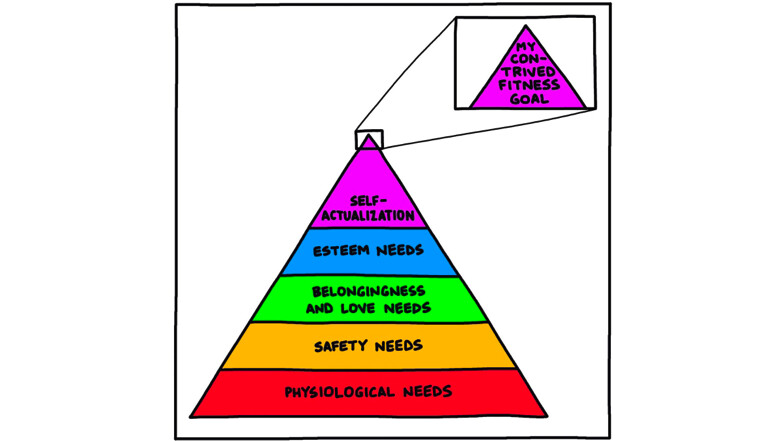
Even though I’d have a hard time convincing anyone it was “necessary,” in the sense of Maslow’s Hierarchy of Needs.Every year, human beings such as myself and yourself take part in an ancient ritual going back at least dozens of years: We decide how we are going to become a different person than we were the year before.
Sometimes we become completely different people, finally going to therapy, or deleting all of our social media accounts, or deciding to adopt the extensive and possibly unsustainable morning routine of a person who is an influencer on LinkedIn. Sometimes we just become a slightly different person, by committing to being on time, drinking more water, or meditating for one minute every day.
This probably sounds familiar. You may know it as a “new year’s resolution,” which is a common manifestation of this sort of idea, and also helpful in selling gym memberships. New year’s resolutions work for some people, but I have never had much success with them. Usually I think more along the lines of “what can I do that would make this year interesting/different from previous years?” Which I think is a good place to start, as opposed to “What’s wrong with me that I can attempt to fix or improve this year?” (If you’re asking yourself that same question, let me just say that you’re probably doing great, and at least a few people probably love you just the way you are. But yeah, we could all drink more water and eat more vegetables.)A few years back, a friend of mine mentioned he was going to try to log half a million vertical feet biking and hiking, and I don’t remember if he ended up getting it done, but I think he was probably inspired by a guy named Greg Hill who climbed and skied two million vertical feet in a year in 2010, and Greg Hill was probably inspired by himself, Greg Hill, skiing one million vertical feet in a year in 2005. I’m no Greg Hill. But what about 200,000 feet of ascent in a year? Certainly more doable by a middle-aged dad with a day job? That’s a little under 4,000 feet per week.
So I decided on that. I did a few backcountry ski laps at our local hill, just under 2,000 feet per lap, and hiked/ran up steep trails a couple times a week, trying to log a few hundred feet here or there. If Jay was awake and we had time between naps, I’d put him in the baby carrier backpack and chug up a trail for a few minutes or an hour, the dad version of a weighted training vest. I signed up for a steep 50K trail race, the Tiger Claw, which would get me almost 9,000 feet of climbing in one day, a big chunk.
Then in mid-May, my young friend Torrey, who has not been to my house recently to see my daily life trying to be a present and helpful dad, husband, self-employed artist and writer, said, “200,000 feet? I think you could do 300,000 easy.”
I thanked him for the encouragement by replying, “Fuck you,” and then we argued for a few minutes about who would buy dinner.
And then of course I started doing the math, which really amounted to a big question, How do I want to live my life this year, which is really a series of smaller questions:We’re lucky, as human beings, to have the time and resources to come up with ideas we refer to as “dreams,” and then spend time and resources pursuing those.
Some people put a lot of time and resources into one dream, like thru-hiking the Pacific Crest Trail, or climbing a big mountain halfway across the world, or completing an Ironman triathlon.Since I am a coward, I often tend to shy away from big goals with a high chance of failure, and instead choose to pursue goals with longer timelines, in order to have some flexibility. A bad week of weather can derail a big mountain summit attempt, and an injury can derail a plan to qualify for the Boston Marathon (I guess so could gastrointestinal distress on race day), but an annual goal of a bunch of vertical feet can withstand some bad weather or minor injuries during the year. Or, in my case, catching every communicable disease Jay brought home from daycare in his first six months of attendance, which included something like six colds, and norovirus or something similarly explosive and miserable.
Even with a week off here and there, I kept chugging along. I started a Strava club called 100 Grand, because I thought other people might think it was fun to try to log 100,000 feet of climbing, or 200,000 feet, or 500,000 feet, or whatever, depending on where they lived and how much time they had to devote to it. I know not everyone lives in a mountainous area, or even a hilly place, but I also knew about this group of people in Iowa and Illinois who race to see who can log 25,000 feet of vert the fastest (and in the smallest amount of horizontal distance) every December. I mean, look at this spreadsheet:Almost 2,000 people signed up for the 100 Grand Strava club, despite it launching in the middle of the year, and I’m not sure how much it motivated people, but I’m going to do it again in 2024. As soon as I finish mailing out stickers to everyone who clocked 100K or more in 2023.
As I rolled over 200,000 feet in September, and then 250,000 feet (in early October), I started to reflect on how the 300,000-foot number had changed my year of running. I have never been one to pay attention to my per-mile pace, but it went completely out the window this year, since a typical run for me looked like this:Mt. Sentinel is essentially a straight line two miles from my house and roughly 2000 vertical feet higher than my front door*, so I defaulted to it often this year. I stood on the summit 47 times, often enough that it started to feel quite ridiculous, but also a sort of home. Which is probably how my dad feels about certain holes on his home golf course, or how my brother feels about his favorite fishing spots.Every time I got home from a run, I’d check my yearly total on Strava as it ticked upward—except on the rare days I did a flat run, when I was short on time or had to run Jay to or from day care in the jogging stroller.
Eventually, I had a little less than 2,000 feet to go. Unless something crazy happened, I’d just need to get to the summit of Mt. Sentinel one more time and I could stop obsessing about it. My friend Forest had offered to go with me, but also said he understood if I wanted to go up alone. I decided to keep this one to myself, microspikes on my shoes for the icy sections, trekking poles as insurance to keep myself upright.
The last climb up the steep trail on the south ridge seemed like it was taking forever, and I watched several paragliders take off from near the top, a surprise sunny December day. I jogged through the snowy forest between the south and north summits, and then started the steep hike up the final 100 feet to the top. A figure in an orange jacket was starting down from the summit, headed my way.
The person stopped on the trail when they saw me, and without being able to see quite that far, I knew it was Forest. He started clapping, and then went back to the summit with me. He asked if I wanted to have the top to myself, to process it a little bit, and I said Nah, it’s just the last few feet of my dumb goal for the year. Which was true.
The closer I got to finishing, the more ridiculous it felt, and as much as I’d like to have had some epiphany about life, I know sometimes you just need a new motivation to get out the door and experience something, even if you end up on the same mountaintop *checks notes* 47 times. But as ridiculous as it was, I still followed through with it, which has some sort of meaning, maybe.
You don’t need to go far these days to find inspirational quotes about pursuing your goals, and I think everyone is looking for something different. The older I get, the more I think about a line from the late, great, philosopher and restaurateur Kenny Shopsin, in the 2004 documentary I Like Killing Flies:
by Outside Online
Login to leave a comment
Who Is Courtney Dauwalter’s New Ultramarathon Partner? It’s Her Mom.
Here‘s how the Dauwalter duo completed a dream of crossing a finish line together
The last loop was quiet beneath the full moon. Their shuffling feet on the packed, pebble-tossed singletrack punctuated the sleeping Sonoran Desert as the duo moved through shadows of saguaro cactus and prickly pear. Millions of white pinpoints began to appear in the dark sky.
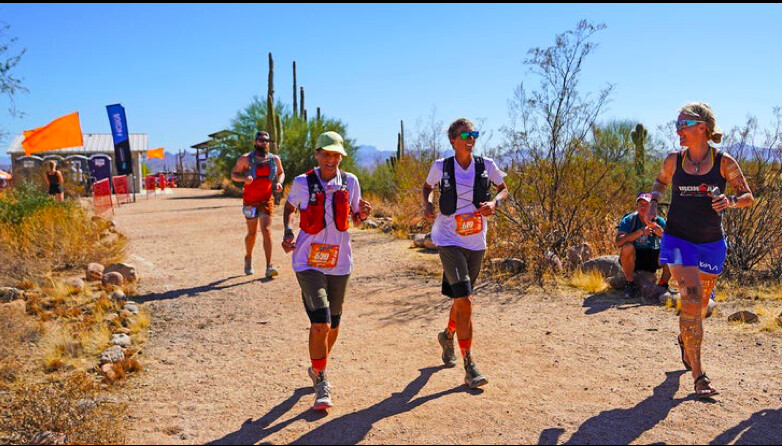

That’s when 66-year-old Tracy Dauwalter, mother of ultrarunner Courtney Dauwalter—who was coming off of historic back-to-back-to-back 100-mile wins of the 2023 Western States 100, Hardrock 100, and UTMB, including two course records—started resharing doubts with her daughter, who kindly reminded Tracy many times throughout the last 13 hours, “that’s not useful thinking, so let’s not think it.”
Occasionally, Courtney would redirect their attention, pointing out this unique section of the course that they’d been past twice before. This time, she built a 60-second container to stuff all those fears inside.
“Tell me all of your doubts and frustrations. You have one minute,” Courtney told her mom. “Once you finish, you can’t complain out loud anymore. It’s not serving us to get to this finish line.”
Tracy spewed all of her negative thoughts, from her rolling stomach to her aching muscles, which was an important reset to get out of the whirlpool of heavy thoughts. I signed up for this, Tracy humbly reminded herself. Nobody’s making me do this.
A dedicated team, the pair was running three loops side-by-side in matching long running shorts, white baggy tees, Salomon hydration vests, and cactus-themed socks, at the Halloween-themed Javelina Jundred 100K race. The ultrarunning event is held the closing weekend of October in the McDowell Mountain Regional Park, an hour northeast of Phoenix, Arizona. Temperatures can climb into the 90s by mid-morning and dip into the low 50s once daylight disappears behind the McDowell Mountain Range.
Now 38 years old and living in Leadville, Colorado, Courtney had participated in the event once before, in 2016, when she was the race’s outright winner. She set the then-course record for the 100K, one of several performances that drew national attention to her astonishing endurance and athleticism.
Tracy, who’d just recently started trail running, had covered ultra-distances at 12- and 24-hour events across flat gravel, but had never before run this far on a trail. They selected Javelina’s rolling 100K with 3,924 feet of vertical gain. The majority of the climbing is packed into the gradual ascent from the Javelina “Jeadquarters” aid station, which serves as the start and finish of the race and basecamp, to the far side of the loop, Jackass Junction.
It was exactly here, at this midway point, after slogging up the final climb over rolling hardened granite and sandy washes, where Tracy had a sticking point. Fortunately, Courtney was there to fill up her water bottles and point out all the tasty options when they reached the runner’s buffet.
“Please keep eating,” she said, as the electronic dance music bumped. A few hours earlier, they enjoyed a surprise pick-me-up of McDonald’s cheeseburgers, delivered by crew masters Dick Dauwalter, Courtney’s dad, and Kevin Schmidt, her husband. But one of the biggest highlights during the race for Tracy was watching Courtney interact and commune with so many people in the trail running community.
“Courtney does this amazing sport, but even more, I adore the person she is. It’s one of my favorite things to watch the love that’s out there for Courtney, and the way she responds. To be in that world with her was really special,” Tracy said. “She was also really kind to me, even when I was frumping and I’d fall down, she’d help pick me up.” Courtney let out a laugh.
“Mom, you only fell one time!” said Courtney, laughing.
“I know, but it was embarrassing,” Tracy said.
While Javelina was the mother-daughter’s debut trail ultra finish, side-by-side, the experience wasn’t their first race together. When Courtney was in high school, the duo finished a rollerblade marathon together in St. Paul. (Rollerblading is a major pastime in Minnesota, where Tracy grew up and still lives today.) Here, she met Dick and raised Courtney, a middle-child to two brothers.
While growing up, Tracy played softball and badminton. In college, she ran cross-country and track. “I’ve always been interested in sports and done them at a level that I could make the team. I was never a star. Being on a team is social and taxes your body while working up a sweat,” she said.
When the kids were interested in soccer, she and Dick organized an adult co-ed squad. Now, she jogs, plays volleyball, and golfs. She and Dick enjoy motorcycle tours, too, like venturing through the Elk Mountains in Colorado. “I’m not great at anything, but I can hold my own, and it’s super fun—I’m willing to do any sport,” she said. The motto was much the same for the kids.
"I thought that it would be so cool to share this sport that I love so much with this person I love so much. I knew she could do it.”
“They could try any activity. But once they committed, they had to see that season through—whether they enjoyed it or not, we were committed. We didn’t miss practices or games. We made sure those were a high priority for them and us. That drove our lives for many years with lots of fun times, but boy, that schedule was crazy—we’d slam-dunk dinner at 4 P.M. so that everybody could get to practice,” Tracy said.
An accountability mindset is one that leads to showing up in other areas of life from work to class to chores, following through on responsibilities and gritting out less desirable tasks. “When things get hard, like college classes, your option is not to quit,” Tracy said. “You dig in a little deeper, get help, and get it done, which is the same with any sport.”
But perhaps their most special ingredient is that the Dauwalters know how to have fun. “Having fun while doing those things is just as important,” Courtney said. “Our family always worked hard, but we play hard, too. All of that combined is what makes life special. Having that be deeply ingrained in who I am helps me in everyday life, but also, for sure, in ultrarunning.”
While watching Courtney grow up, Tracy noticed her daughter had a deep motivation as a person and athlete. One of her earliest memories was two-year-old Courtney, who could barely walk, repeatedly riding a Big Wheel tricycle downhill with a group of kids and insisting she’d wrestle the bike up the hill by herself. As a kid, Courtney and her siblings played soccer, often on the same teams. Later, they ran high school cross-country and track. To fill the winter months, she tried basketball, but she had a propensity to quickly foul out, taking the bench for the remainder of the game.
One day, she came home with a bright idea to Nordic ski instead, which was foreign for a family full of downhillers. They picked up the equipment, Courtney joined a competitive team, and she practiced in nearby school fields. “All she did was wipe out. All the time. Dick and I are thinking, ‘I wonder what this is going to look like?’” said Tracy.
During those foundational years, Courtney would rush home after a Nordic race to report the number of crashes she’d had. “In a 5K, I would be psyched if I only crashed nine times—tripping, planting my poles, tumbling the entire time. I was so bad,” she said.
But Tracy bought a beat-up pair of cross-country skis and started to practice alongside Courtney. “We learned together,” Tracy said. “It was more fun to crash with somebody than to crash by yourself.”
By the time Courtney graduated, she was an all-state runner and had earned All-American honors as a Nordic skier three times. She was a four-time state champion, and her team acquired two national championships. In 2003, Courtney moved west to Colorado, where she raced collegiately on the Nordic ski team at the University of Denver. Three years in, her DU team won 11 meets and the 2005 NCAA Championship.
“Courtney was really good at everything she did, and it wasn’t because she was a natural,” Tracy said. “Anytime she tried a sport, she didn’t have an immediate knack for it, but she hung in there to develop it. She was a hard worker and determined.”
Years later, in 2015, any remaining questions of physical stamina were laid aside—for both Tracy and Courtney, who proved to have a serious knack for endurance. Courtney broke the ribbon at her inaugural ultra race, the 2011 Prickly Pear 50K in San Antonio, Texas, and her curiosity about wanting to run longer continued to grow. The following year, she dropped out of the Colorado’s Run Rabbit Run 100 Mile race at mile 60 with throbbing legs, questioning her ability to cover that much ground in a single push.
Frustrated by not meeting her goal, Courtney registered for her first 24-hour race, the 2013 FANS Ultra Races, a more manageable format than an ultra on singletrack. Her family joined to crew and run laps, providing entertainment and support, including Tracy. They didn’t have much of a background in ultras and were green to any strategy.
Regardless, Courtney wrapped a total of 105 miles on that two-mile gravel loop around Lake Normandale Park in Bloomington, Minnesota, completing her first non-trail century-distance, and gaining confidence. Two months later, she crossed the finish line of the Superior Fall Trail Race 100 Miler in Lutsen, Minnesota, her first 100-mile distance on trail, and stood on the podium for second place.
Moving forward, the FANS Ultra Races became a family tradition. Courtney returned to the 2014 event, besting her first summer with 123.6 miles. Tracy decided, if she was going to crew and run laps with Courtney, she might as well sign up herself.
“She was like, ‘Heck, I’m going to spend the whole day out there anyways. Why not put some time on my feet?’” Courtney recalled.
In 2015, she tallied 109.2 miles while her mom, then 57 years old, covered 66.8 miles. Their annual pilgrimage continued in the 24- or 12-hour format, over the next several summers, coinciding with Courtney’s ultrarunning career picking up steam. She won the 2016 Run Rabbit Run 100 Mile with a 75-minute lead, and along with the title, the world’s largest ultra purse: $12,000.
By the summer of 2017, she retired from her position at the Girls Athletic Leadership School in Denver where she taught science and coached cross-country. “In an interview a few years ago,” Courtney said. “I was asked if I could run an ultramarathon with anyone in the world, who would it be? ‘My mom,’ I said. I thought that it would be so cool to share this sport that I love so much with this person I love so much. I knew she could do it.”
In an interview a few years ago, she was asked, if she could run an ultramarathon with anyone in the world, who would it be? “My mom,” she said. “I thought that it would be so cool to share this sport that I love so much with this person I love so much. I knew she could do it.”
Tracy heard the recording and, despite having never run on trails, she immediately called her daughter. “Let’s do it. I heard you want to run an ultra, so let’s sign up for something,” she said to Courtney. “If someone puts a challenge in front of me, it can even be pretty insane, and I’m a sucker for trying to rise to that challenge.” In addition to the competitive spark, the invitation felt sentimental.
Committed to doing an ultra together, they accepted that it might be a winding road to get there. The two picked the 2022 50-mile Superior Fall Trail Race in Lutsen. Mid-route, they missed the cut-off. Tracy shrugged and shook her head recounting the unfinished event. Courtney refused to let the DNF be a negative thing. “You learned so much in that first summer, mom,” she told her. “Dialing in all of those pieces helped immensely this year. And we decided, we’re not done. We still need a finish line together.”
As soon as registration opened in January, the duo signed up for the 2023 Javelina Jundred 100K. “I was nervous coming into this race because I was bouncing off of that epic fail of the first 50-miler we tried, which was a wake-up call. You have to prepare yourself,” said Tracy.
“It was not an epic fail,” Courtney countered.
That winter, Tracy clocked workouts on a treadmill. From April onward, she ran outside four or five days a week for 10 to 20 miles. Courtney researched singletrack trails around Lone Lake, which her mom became excited to explore. One of the biggest challenges of learning to run on trails is her tendency to shuffle and trip, Tracy confessed. Building confidence, she finished the Willow 20 Miler in May and Afton Trail Run 50K in July. Like her daughter, Tracy didn’t keep a close log of her mileage, and her training was not systematic.
Courtney’s advice, true and simple, rang in her mind: Spend time on your feet.
“People asked me if I coached her. Absolutely not,” Courtney said. “I did try to be helpful—harping on testing nutrition, wearing a pack so that her body gets used to one, and hiking uphills—so her race day could be much better. She was the one putting in the work and figuring out routes where she could do laps or get on hills. I admired from afar.”
“It helped that Courtney kept reminding me, ‘This was our run together, our race, and it could look however we could make it.’ If I crawled, that wouldn’t be disgusting. It got ugly, then it got not ugly,” Tracy added.
Staying lighthearted, Courtney countered, “It never got ugly. There was never a doubt that we would make it to the finish.”
Fortunately, the elation did come around. Next to her daughter, Tracy crossed the finish line of Javelina Jundred 100K in 17 hours and 38 minutes with a smile in the glowing lights, after staying up into the night running, eating, and sharing pain—but mostly, laughing—with her daughter. They’d gone full circle together, both on the circuit they’d traveled in the desert as well as in life.
“I think you beat me by, like, a half-second, mom,” Courtney said.
“I know,” Tracy bantered back. “I think I was really needing to be done, so I rushed with a half-second sprint.”
by Outside Online
Login to leave a comment
Isai Rodriguez, Sam Chelanga capture gold and silver for U.S. in men´s 10,000 meters at Pan American Games
Isai Rodriguez and Sam Chelanga made history Friday at the Pan American Games, becoming the first American teammates to take the top two spots in the men’s 10,000-meter final at Julio Martinez Pradanos National Stadium in Santiago, Chile.
Rodriguez, an All-American at Oklahoma State, and Chelanga – the collegiate 10,000 record holder from 2010 at Liberty – became the first pair of teammates from any country since 1979 and only the third tandem in meet history to secure gold and silver in the event.
Rodriguez prevailed in 28 minutes, 17.84 seconds, the fastest Pan Am Games winning performance since 2007, and Chelanga clocked 29:01.21, with Guatemala’s Alberto Gonzalez earning bronze in 29:12.24.
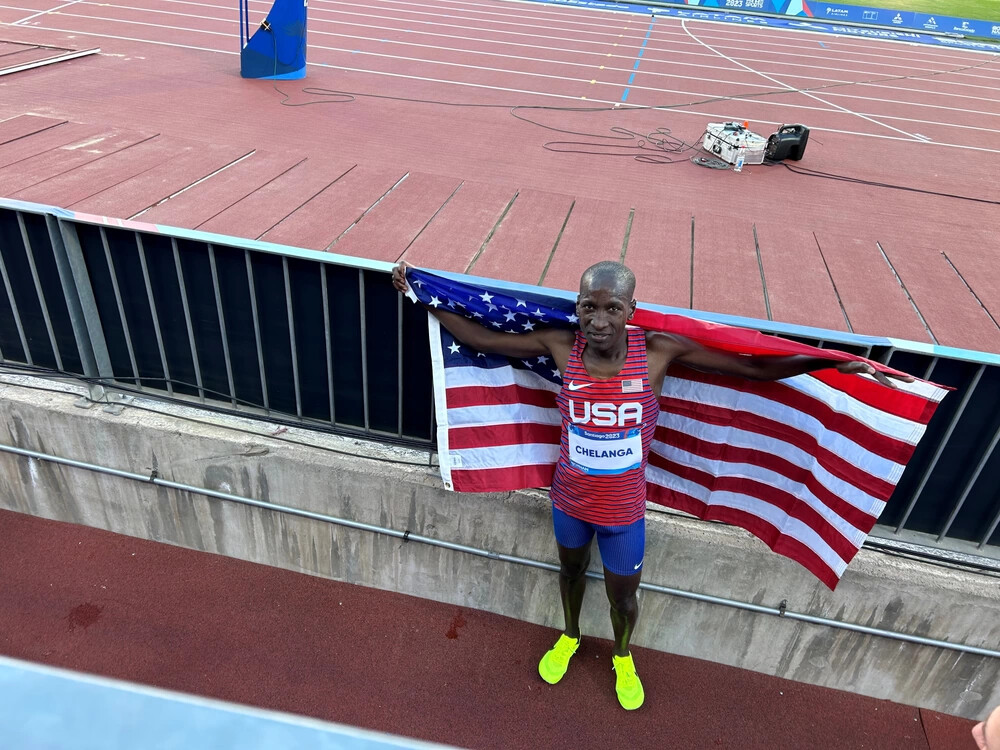
Rodriguez and Chelanga joined Mexico’s Rodolfo Gomez and Enrique Aquino in 1979, along with Luis Hernandez and Gomez in 1975 as the only teammates to sweep the top two spots in the men’s 10,000.
Rodriguez secured the first 10,000 gold for the U.S. since Bruce Bickford triumphed in 1987 in Indiana.
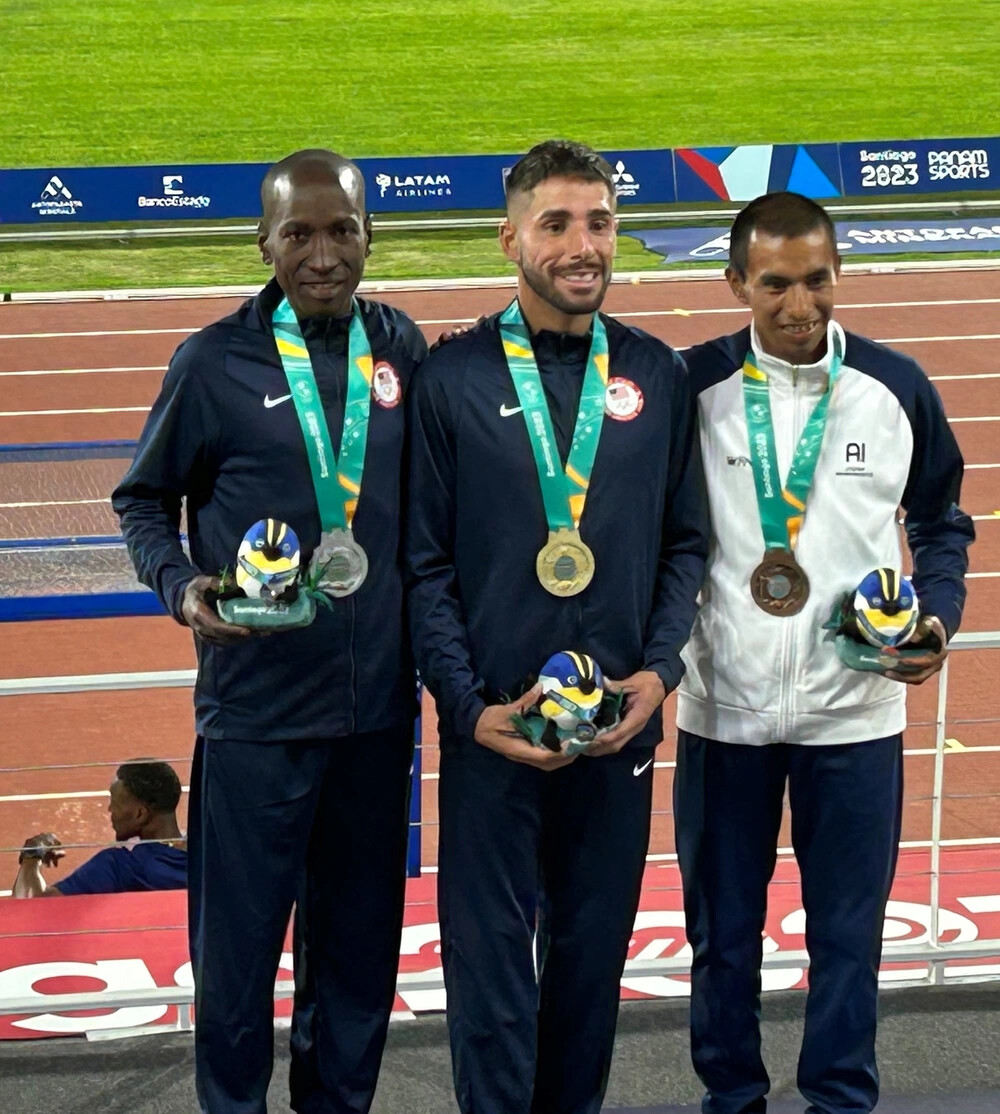
It marked the second straight Pan Am Games that the Americans had two athletes on the 10,000 podium, with Reid Buchanan and Lawi Lalang achieving silver and bronze in 2019 in Peru. The U.S. also had a pair of 10,000 medalists in 1967 in Winnipeg.
The Americans added bronze medals in the women’s 1,500-meter final and javelin throw competition, in addition to the men’s shot put, taking the lead with 19 overall medals entering the last day of the track and field schedule.
Brazil leads with seven gold medals and is second behind the Americans with 18 overall medals.
Darlan Romani triumphed for Brazil in the men’s shot put with a fifth-round effort of 70-1 (21.36m).
Mexico’s Uziel Aaron Munoz secured silver at 69-4.75 (21.15m), with former Arizona standout and NCAA Division 1 champion Jordan Geist edging fellow American athlete Roger Steen for bronze by a 67-4.25 (20.53m) to 67-3.50 (20.51m) margin.
Colombia’s Flor Denis Ruiz won the women’s javelin gold medal with a throw of 207 feet (63.10m) on her opening attempt.
Nebraska teammates Rhema Otabor, representing the Bahamas, and American competitor Maddie Harris captured silver and bronze, respectively. Otabor had a mark of 198-7 (60.54m) and Harris produced a throw of 197 feet (60.06m).
Venezuela’s Joselyn Brea completed a sweep of the women’s 1,500 and 5,000 titles, clocking 4:11.80 to edge Cuba’s Daily Cooper (4:11.86) and American athlete Emily Mackay (4:12.02).
Gianna Woodruff believed she had become the first female athlete from Panama to capture a Pan Am Games gold medal in any event, clocking 56.44 in the women’s 400-meter hurdles.
But Woodruff was later disqualified as a result of Rule 22.6.2, which states that an athlete is penalized after “knocking down or displacing any hurdle by hand, body or the upper side of the lead leg.”
Brazil’s Marlene Santos, who ran 57.18, was elevated to the event winner, with Daniela Rojas from Costa Rica earning silver in 57.41 and Montverde Academy of Florida senior Michelle Smith, representing the U.S. Virgin Islands, taking bronze in 57.53.
Jamaica’s Jaheel Hyde emerged victorious in the men’s 400-meter hurdles in 49.19.
Brazil’s Matheus Lima earned silver in 49.69 and Cuba’s Yoao Illas was the bronze medalist in 49.74.
Cuba’s Luis Enrique Zayas cleared 7-5.25 (2.27m) on his third attempt to prevail in the men’s high jump final.
Puerto Rico’s Luis Joel Castro achieved a 7-4.25 (2.24m) clearance on his first opportunity to capture silver, with Donald Thomas of the Bahamas grabbing bronze after achieving the height on his third try.
Cuba added two more medals in the men’s triple jump final, with Lazaro Martinez winning on his first attempt with a 56-4.75 (17.19m) performance.
Brazil’s Almir Dos Santos secured silver at 55-6.25 (16.92m) and Cuba’s Cristian Napoles took the bronze medal at 54-8 (16.66m), holding off American athlete Chris Benard and his fourth-place mark of 54-1 (16.48m).
by Erik Boal
Login to leave a comment
Pan American Games
The Pan American Games (also known colloquially as the Pan Am Games) is a continental multi-sport event in the Americas featuring summer sports, in which thousands of athletes participate in a variety of competitions. The competition is held among athletes from nations of the Americas, every four years in the year before the Summer Olympic Games. It is the second...
more...World Athletics provides equipment to support Ukrainian athletes
World Athletics President Sebastian Coe has met with members of the Ukrainian team and newly elected World Athletics Council member Nataliya Dobrynska in Budapest to deliver much-needed equipment provided by the Ukraine Fund.
The fund – which was established by World Athletics, together with the International Athletics Foundation (IAF) and Members of the Diamond League Association, last year and renewed in May – was created to support elite athletes affected by the conflict in their home country.
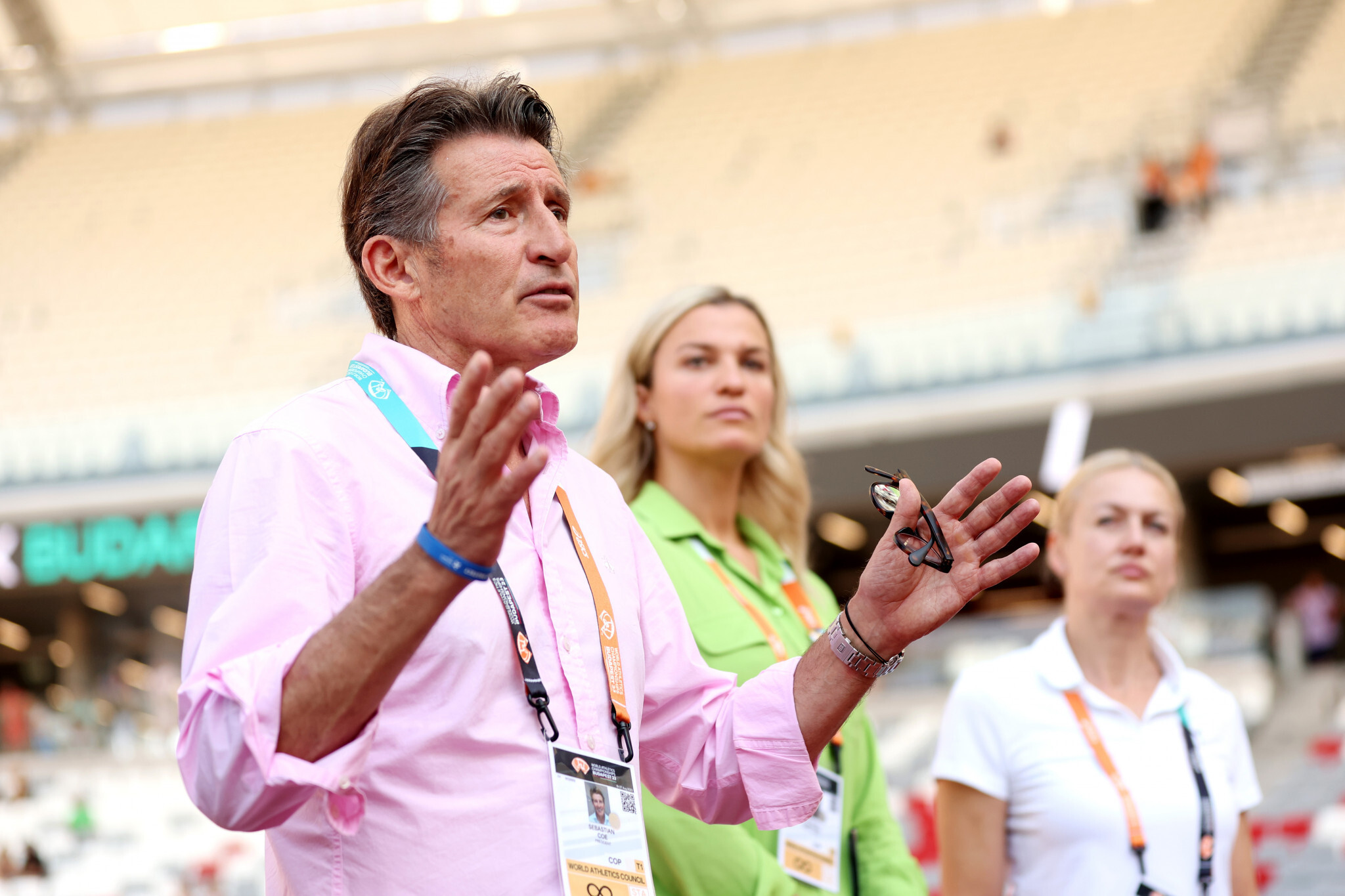
Its primary purpose is to ensure that Ukrainian athletes can continue to train, qualify for and participate in World Championship events, following Russia’s invasion of Ukraine last year. A team of 29 Ukrainian athletes is currently competing at the World Athletics Championships in Budapest.
The fund has USD$190,000 available this year to assist the athletes, their immediate family and key support personnel. As well as paying for travel and accommodation for elite athletes at training camps, and for non-quota officials and athletes at World Athletics Series events, support also included purchasing equipment – particularly for the pole vault – to replace items that have been destroyed during missile attacks.
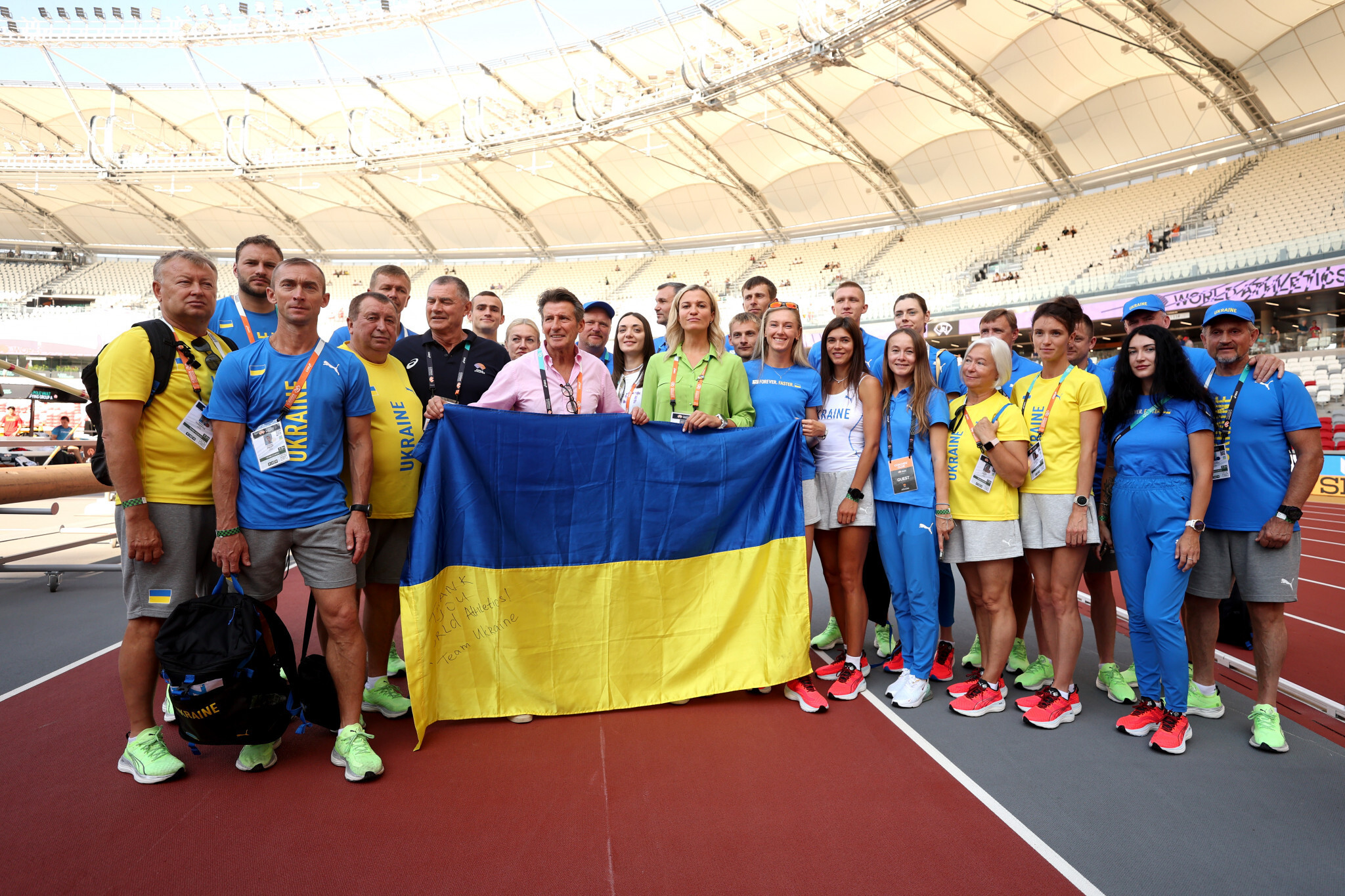
On Thursday (24) Ukraine marks its 32nd anniversary of independence and, meeting with the athletes the day before that anniversary, Coe said: “I am grateful you are here competing at this 40th anniversary of the World Championships.
“I know how hard it has been for you emotionally and physically. I have spoken to many of you since Russia invaded Ukraine in February last year. And I want you to know that World Athletics will continue to support you as long as you need help.”
The equipment provided includes pole vault poles, as well as mats.
“This year, we have heard your request to provide athletics equipment destroyed by the war, and support for summer camp training and preparation for Budapest,” Coe added. “And this is where we have focused our efforts. We have the poles, and I am delighted they are being used. The mats will follow.
“Thank you, all of you – the athletes, the coaches and the federation – for keeping our sport alive in Ukraine.”
Dobrynska said: “Today, we come together to express our huge gratitude to World Athletics, led by President Sebastian Coe, for being a pillar of support during these challenging times in Ukraine.
“In a world that sometimes feels divided, you remind us of the power of unity. You should know that all of Ukraine appreciates your commitment and involvement in what our athletes are trying to achieve under very difficult circumstances.”
It is expected that up to 100 members of the Ukrainian athletics community may require some financial support this year.
Also on Wednesday, Ukrainian 400m hurdler Anna Ryzhykova, Athlete Refugee Team (ART) member Perina Nakang, ART coach Janeth Jepkosgei and World Athletics ambassador David Rudisha met with refugees families, including those from Ukraine, currently living in Hungary.
The refugee families, who are being assisted by the UN refugee agency UNHCR and Hungarian agency Menedek, were provided with tickets to attend Wednesday morning’s session of the World Athletics Championships before meeting with the athletes.
They came together at the WCH Budapest 23 Green Zone, which is hosting sustainability awareness-raising activities and meet & greets with athletes over the course of the championships.
by World Athletics
Login to leave a comment
What to pack for long-distance trail runs
Renowned ultrarunner and adventurer Ray Zahab shares his advice on packing for multi-day hikes, emphasizing the importance of traveling light while carrying the essential items.
Embarking on a long-distance trail run can be exhilarating, but before you set foot on the trails, these runs require careful preparation to ensure a successful and safe experience. One critical consideration is deciding what to pack for the journey. From essential gear to nourishing fuel and hydration, the right items can make all the difference. Whether you’re a seasoned trail runner or heading out on your first hike, knowing what to pack can help you stay prepared and safe on your run.
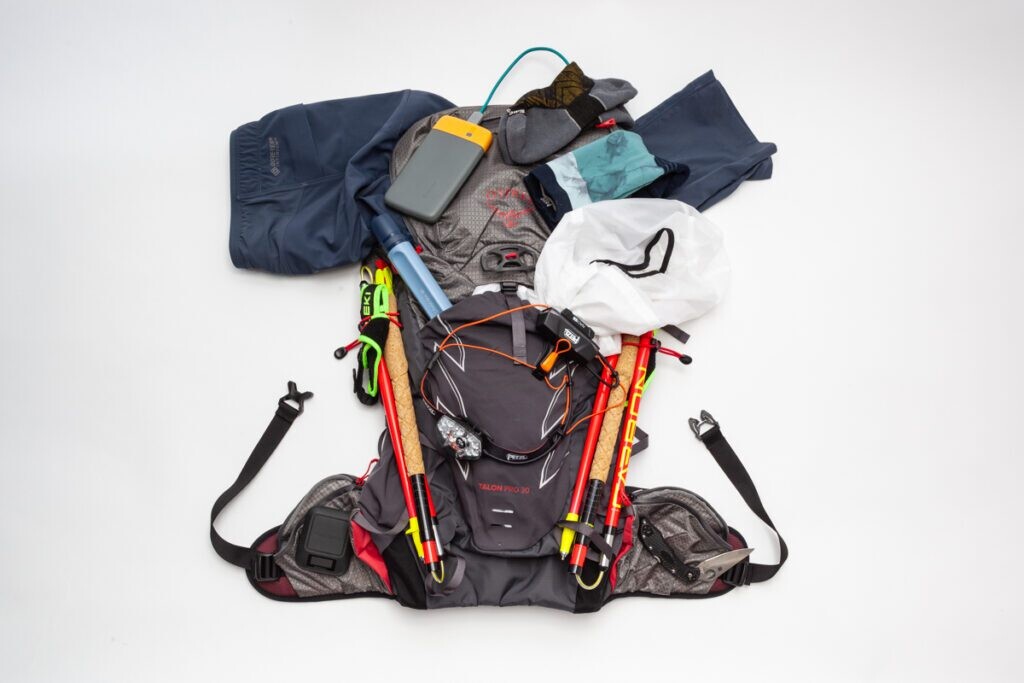
Canadian ultrarunner and adventurer Ray Zahab has been a part of some incredible endurance feats, challenging the world’s toughest landscapes and terrains that humans had never crossed. Zahab’s most notable accomplishment is his successful completion of the Sahara Desert Crossing in 2007. Alongside two other runners, he covered a distance of approximately 7,500 km (4,600 miles) in 111 days, running the equivalent of two marathons per day.
Zahab has gained international recognition for his achievements and is an expert when it comes to packing for long-distance trail runs. With numerous expeditions under his belt, Zahab knows that the right gear can make or break your adventure.
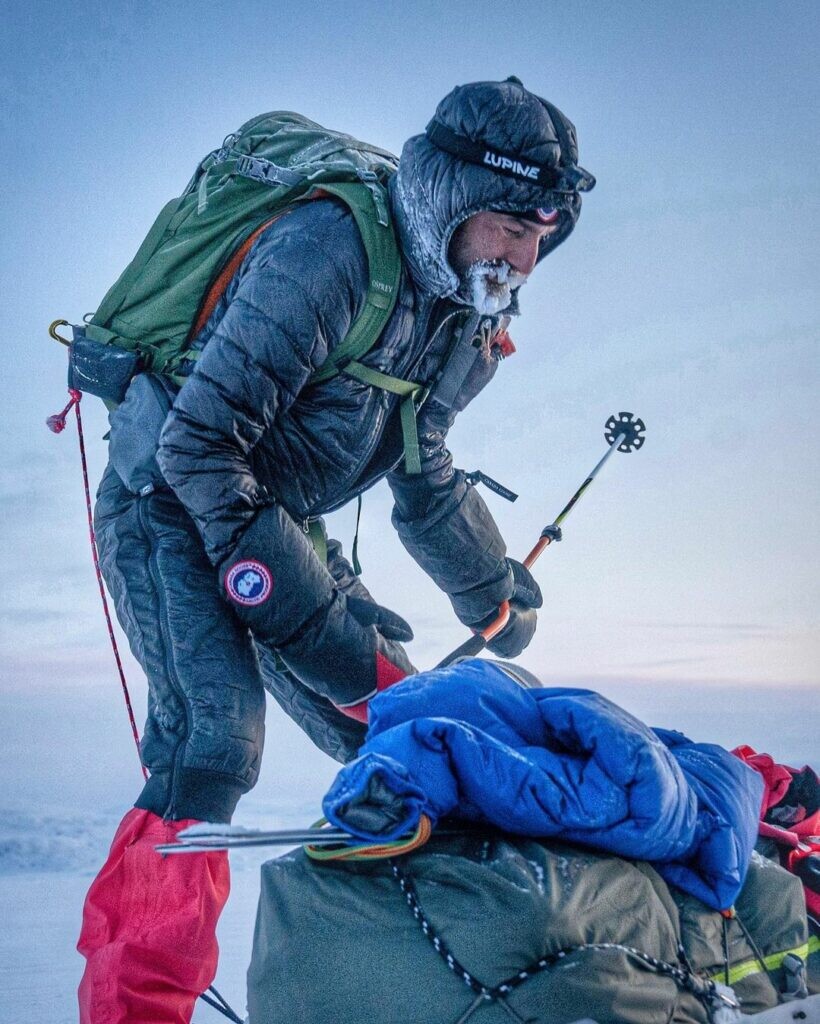
Six hours or less
When packing for short trail runs where you’re not going to be out overnight, Zahab focuses on efficiency, carrying only the essentials. But while the distance may be relatively short, the need for preparedness and comfort on the trail is just as great as for longer trips.
Zahab suggests starting with a hydration pack like Osprey’s Duro 6L to ensure proper hydration. Osprey’s Duro 6L is Zahab’s favourite choice for daily trail runs, and its 1.5-litre water reservoir is perfect. “Staying hydrated is crucial regardless of the distance, and having a convenient way to carry water allows for easy access and quick sips along the trail,” he says.
He also advises packing moisture-wicking clothing to keep you dry and comfortable, along with a lightweight, breathable jacket in case of unexpected weather changes. “In case you run out of water or encounter an emergency, it’s great to pack a LifeStraw water filter, a small first aid kit, and a small multi-purpose pocket knife,” adds Zahab. For nutrition, he suggests carrying easily digestible snacks like energy gels, bars, or trail mix. These portable options provide a quick boost of energy when needed and are convenient to consume during short breaks on the trail.
Six to 24 hours
If you’re out on the trails for a day-long hike, packing extra safety essentials and food is crucial. “Packing for medium-length runs can be tricky,” Zahab points out. “You want to pack the essential items but keep the load manageable.”
Similar to shorter trail runs, you can limit your nutrition to easily digestible snacks like energy gels, bars, or trail mix. You’ll want to pack weather-appropriate clothing for the warm afternoons and damp or cold evenings, including lightweight, breathable layers and a jacket or shell for rain.
In addition to the previous essentials, you should bring navigation tools like a map, compass or GPS device. “I bring my Garmin Inreach with me everywhere,” says Zahab. “It’s good to have a fully-charged mobile phone for emergencies, but if there’s no cellular signal, the Inreach can still communicate.” Other essential items are a small first aid kit, sunscreen, a headlamp, a pocket knife and safety gear, like a whistle and an emergency blanket.
With more items, you’ll need a bigger vest pack to hold it all. The Osprey Duro 15 is designed for your most committed trail-running pursuits. As the miles pass and support fades further into the background, you need a reliable pack that’ll go the distance. With its 2.5-litre water reservoir and ample room for food and gear, yet a slim and stable design, the Duro 15 was designed to push the limits. The pockets are conveniently located on the hip and harness areas to give you easy on-the-move access to your snacks and gear without sacrificing your pace.
Over 24 hours to multi-day
Despite being out there for a longer duration, Zahab still believes in packing light. If you are travelling solo or in a group, you’ll need a compact and weatherproof tent or shelter and a warm and lightweight sleeping bag.
Zahab recommended packing nutrient-dense food such as energy bars, dehydrated meals and trail mix. “These food options are designed to be portable and lightweight, making them easy to carry during the run without adding excessive weight to your pack,” says Zahab. Also, pack a LifeStraw water filter or other water purification system to ensure you stay well-nourished and hydrated on the trail.
“No matter your time out there on the trail, it’s good to pack appropriate clothing for various weather conditions, including quick-drying layers, a waterproof jacket, insulated layers, and, most importantly, several pairs of socks,” stresses Zahab. Some other necessities in Zahab’s multi-day pack are a multi-use tool, a headlamp for nighttime navigation and hiking poles to help with stability.
“Other items that many of us don’t think to carry are personal items like sunscreen, insect repellent, sunglasses, a hat, toiletries, a lightweight towel and a portable wireless phone battery,” Zahab says. “Packing efficiently and prioritizing the essentials for longer hikes, you will ensure you have the necessary equipment to tackle the challenges of a multi-day hike.”
For multi-day adventures, Zahab’s go-to pack is the Talon Pro 30 from Osprey, which has 30 litres of storage for all your essentials and even extra room for additional gear for that overnighter. The Talon Pro is a lightweight pack that prioritizes comfort and dynamic movement during longer hikes on technical terrain.
by Running Magazine
Login to leave a comment
Six tips for hitting the trails, follow these tips to help you succeed as a trail runner
There’s no reason you shouldn’t add trail running to your training schedule every now and then, but before you hit the trails, there are some things you should consider. We’ve compiled a short list of tips and suggestions that will help you succeed in the realm of off-road running, whether you plan to pursue the sport seriously or simply want to train on the trails once or twice a week.
1.- Eyes on the trail
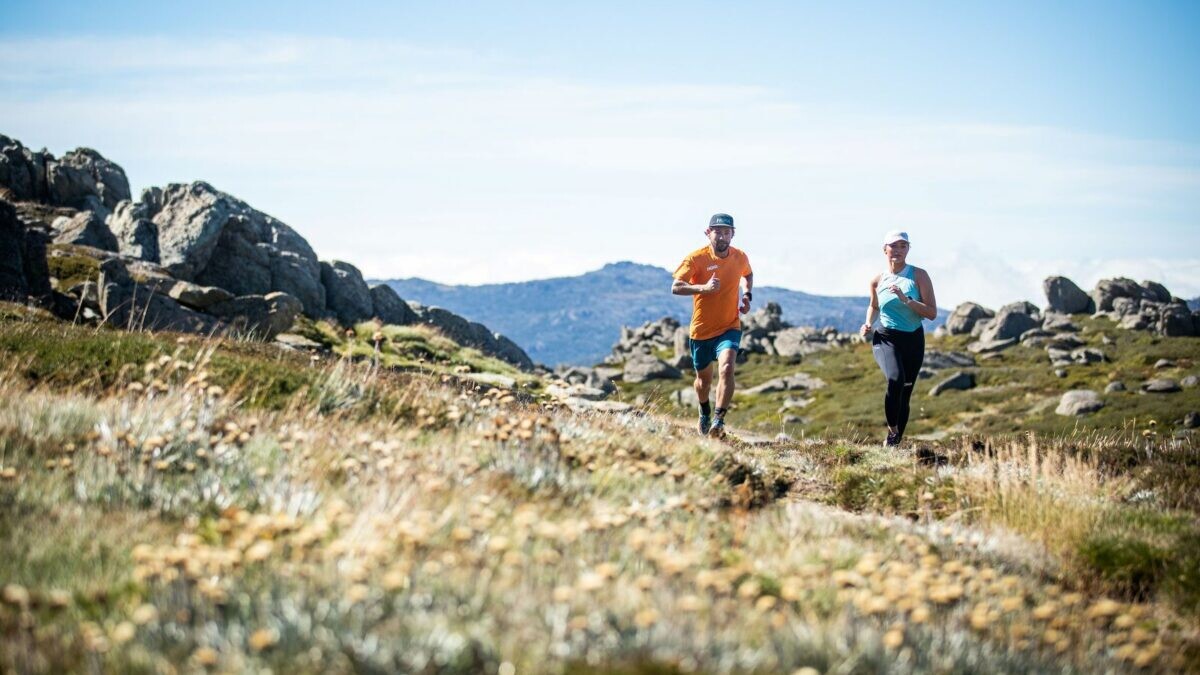
On the road or track, you can look wherever you want and you’ll probably be OK; for the most part, your runs are smooth and without obstacles. But when trail running, rocks, roots and anything else in nature could trip you up if you’re not looking for them. Keep your eyes on the trail. Otherwise, you might take a tumble.
2.- Bring a map
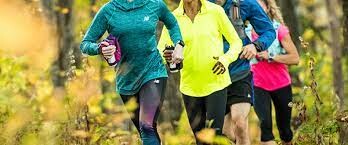
If you don’t know the area, bring a map. No, you don’t have to carry a fold-up paper map into the forest with you, but it’s a good idea to have a map or GPS on your phone. It’s so easy to get lost in unfamiliar territory, and sometimes you can even get disoriented in forests you thought you knew well. Having your phone or GPS watch to help get you back to civilization is a nice safety net.
3.- Get trail gear
If you’re going to really give trail running a go, you need to invest in the proper gear. This could just be trail-specific running shoes (which have lugs on the outsole for better traction on dirt, sand or mud), but if you plan to run longer distances, you may want to get a hydration vest and poles. Really, it’s up to you to decide how invested in the sport you want to become.
4.- Lower your expectations
You’ve got your shiny PBs from the road and the track, but none of that matters when you hit the trails. Oh, you’re running a 5K trail race? Odds are you’re not coming close to your road PB. You plan to run 40 minutes hard in the woods for your next workout? That’ll be a good effort, but don’t be upset when you check your distance and it’s nowhere near last week’s 40-minute workout on the road. Trail running is hard, so lower your expectations when it comes to pace.
5.- Jump into a race
Racing is fun. Trail running is fun. So, it only makes sense that racing on the trails would be fun, too. Enter a race. Don’t set a certain time expectation, just go out and have fun.
6.- Take food and water
When you’re running on the roads, you’re rarely too far from either home or somewhere that you can get water or some nutrition. If you bonk on the trails, you could have a long slog back to your car. Carry a gel and bring a water bottle. You’ll thank yourself later when the effort and the heat starts to get to you.
by Ben Snider-McGrath
Login to leave a comment
Ultramarathon man Dean Karnazes attacked by coyote during 150-mile race
Acclaimed ultrarunner and author Dean Karnazes, 59, can boast some of the wildest accomplishments in endurance sports, but a coyote attack mid-race was a first for him.
The California-based athlete has raced (and won) some of the most legendary ultras in the world, run to the South Pole, and completed 50 marathons in 50 consecutive days in 50 different states. He’s even been attacked by a shark–but never a coyote. The athlete shared his experience mid-race on Instagram on Friday, calling it “terrifying.”
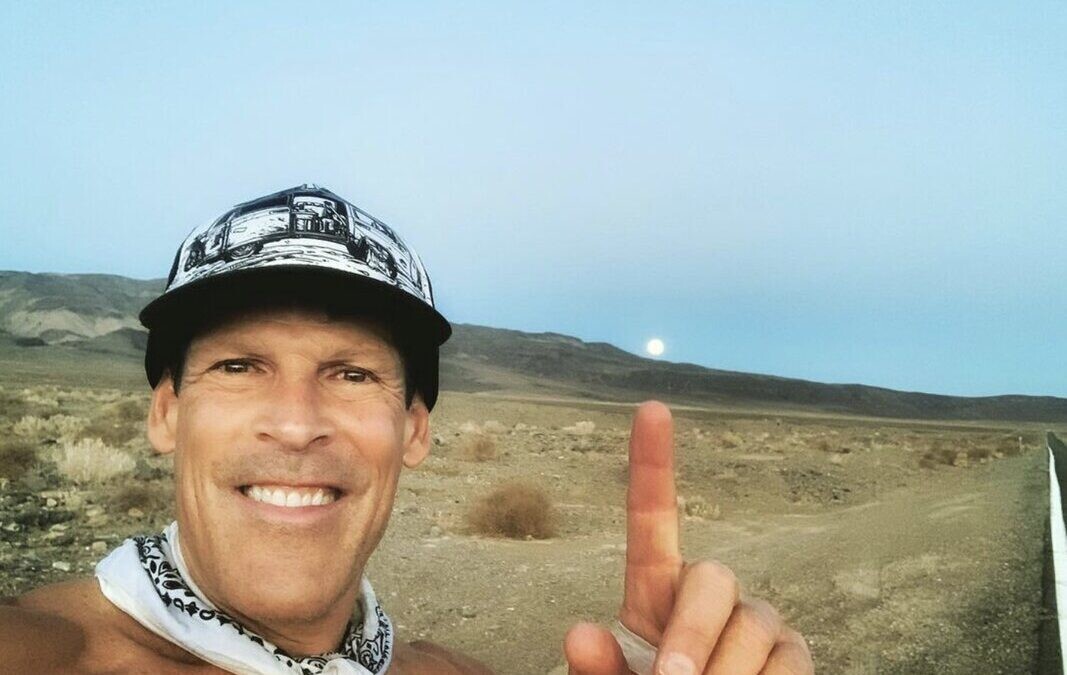
Karnazes was running Headlands 150-mile Endurance Run, a race held in Sausalito, Cali. It’s an event he has returned to over the years of his lengthy career. Headlands Endurance Run hosts everything from a marathon distance trail-race to the 150-miler.
Prior to the animal attack, Karnazes shared a video to Instagram of the night lights along the Golden Gate Strait and San Francisco Bay area. “I’m running the Headlands 150-mile foot-race in Marin County, and if you’re wondering why anyone would do such a thing, maybe this view this will give you part of the answer,” Karnazes said.
Shortly afterward, a bloodied and clearly shocked Karnazes shared his coyote debacle. “I was attacked by a coyote, that was a first,” Karnazes said. “It knocked me over; I was running with poles, thankfully, and I whacked it and it ran away.”
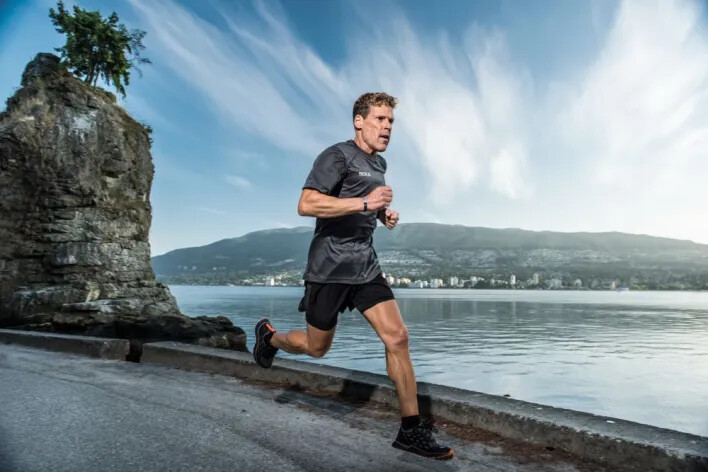
Karnazes said he wasn’t sure what he was going to do, but that he thought he had better keep going or “it might come back for me.”
Karnazes posted to his Instagram story a few hours later explaining that the coyote won the battle. With no result for his race on Ultrasignup, it appears the accomplished athlete may have had to drop out. If there’s ever a valid excuse for a DNF, a coyote attack is undoubtedly it.
by Keeley Milne
Login to leave a comment
Five reasons runners should try cross-country skiing
Running in the winter is hard (and sometimes near impossible), which is why many runners turn to cross-training when the weather gets frosty. If you’re in a part of the country that’s blanketed in snow from now until April, cross-country skiing is an ideal way to use the winter to your advantage and improve your fitness before the spring.
Cross-country skiing mimics running without the pounding
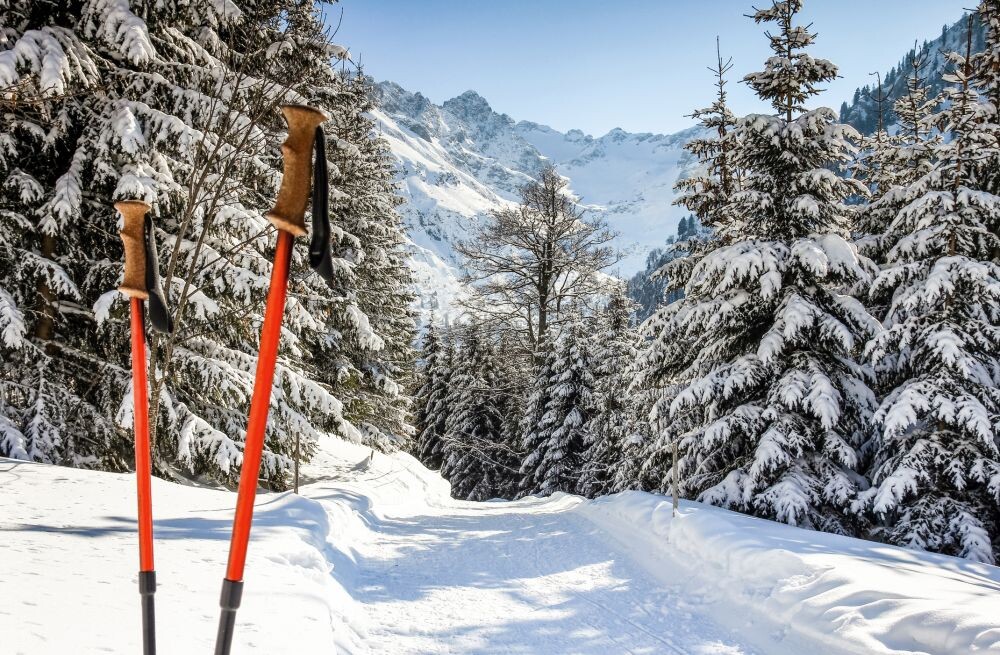
XC skiing (sometimes referred to as Nordic skiing) mimics the movement of running in a way that no other form of cross-training does, but the best part is, it does so with little to no impact. If you’ve been beating yourself up all spring, summer and fall training for goal races, swapping your shoes for some skis is a great way to ease up on the pounding associated with running while still staying in great shape. This will decrease your risk for injuries going into the spring and fall racing seasons.
It improves your aerobic capacity
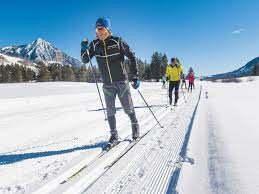
Cross-country skiers have higher VO2 maxes than any other athletes, and there’s a reason. Because skiing engages your upper body as well as your lower body, your rate of oxygen uptake is much higher, which means that even the fittest runner could see an improvement in their aerobic capacity through cross-country skiing.
Cross-country skiing is an upper body workout, too
Like we said, your entire body is engaged when you’re skiing. Because you use poles to help you along, you’re working your arms, back, shoulders and core along with your legs and glutes. This improves your form and overall strength, which makes you a stronger runner come the spring.
It improves your balance
Both classic and skate-skiing strengthen your core and all of the small muscles involved in balance, making you a more injury-resistant runner. In particular, skiing works your gluteus medius (the muscles on the upper outside of your butt) a lot more than running because you spend even more time in a single-leg stance. Having strong gluteus medius muscles helps your knee track properly when you’re running, which can prevent many common running injuries.
It’s fun!
Let’s face it — having to high-step through snow or carefully shuffle across ice during the winter takes a lot of the fun out of the sport we love. Cross-country skiing, on the other hand, was made for winter conditions and is much more enjoyable this time of year. If you have access to skiing equipment and facilities, now’s the time to take advantage of them. It’ll make exercising in the winter much more pleasant, and will help you become a stronger, faster runner.
by Brittany Hambleton
Login to leave a comment
Last Minute Halloween Costumes For Trail Runners
Need something for your kiddo's trick-or-treating? Mandatory office Halloween soiree? First post-covid social engagement? Try one of these easy-to-assemble trail running Halloween costumes!
Basic Trail Bro: Don a Ciele hat, and rock some bright Goodr's with a confusingly non-technical button-up shirt and jorts if you're feeling spicy. BYOB - a super dank IPA (the hazier, the better) swaddled in a coozy you got in a race swag bag. You're probably from Boulder. Or Flagstaff. (Portland variation: add a rain jacket and a slightly better beer.) Make sure to track your trick-or-treat excursion on Strava and don't stop talking about your podcast.
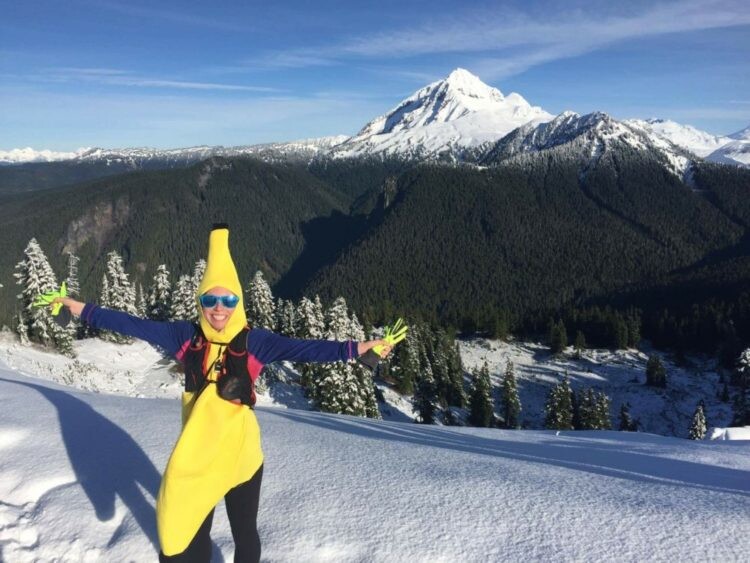
The Courtney: Throw on a tee-shirt and your comfiest basketball shorts and BYO candy corn. Nachos optional.
The Ultra Ultra Runner: Grab your trekking poles, headlamp, gaiters, neck gaiter, waist-light, UPF hat with sunshade, taped-seam windbreaker, sunglasses, clear glasses, 12-liter vest, hip-belt, flasks, bladder, body glide, ramen noodles, gels, spare socks, spare shoes, space blanket, sunscreen, arm sleeves and wind pants. Though you may be dressed like you're about to run the Marathon Des Sables, you could also just be out for a casual jog. You're a human drop-bag: ready for anything.
The Crewmate: Same as above, but carry everything around in your arms the entire night and try to hand everybody you see quesadillas and Skratch.
The Emelie: Grab your S/O and dress entirely in S/Lab, or skimo suits with a babybjorn. Still be faster than everyone.
The Rookie Trail Racer: Grab some long shorts, a sleeveless Nike shirt, and blast the tunes in your Beats By Dre headphones (around your neck, so everyone can hear). Forget the hydration pack, just bring a good ol' Gatorade bottle and be sure to ask everyone "How many miles is 25k????".
The Harvey: Just circle your block 354.2 times while trick-or-treating
Sexy Minimalist Trail Runner: Just split shorts and a handheld. That's it.
The Influencer: This costume is #Sponsored. Flip up the brim of your colorful hat, and snap a pic with your favorite beet-based energy bar or isolated cricket protein, preferably while gazing out at the ocean, or from a summit. Keep your phone and significant other at the ready for any potential photo ops. Bonus points if you have a cute dog who knows a TikTok dance. Make sure all product logos are visible at all times.
Sexy IPOS: Nothing but a gravel bike and KT tape.
The Media Mogul: POV: Your YouTube channel is just about to go viral. Grab your go-pro and lace up your trail runners, because you're about to get a lot of B-roll. Wear a Sony TX90000 BD around your neck, and be sure to periodically change lenses for no particular reason. You're a human steady-cam who'll do anything to get the shot.
The Local Legend: To embody the low-key vibe of the frustratingly-fast unsponsored hometown hero, pull on a of worn-out trail runners and tattered shorts. Wait, is that a Team USA Shirt? Who is this runner? How many FKT's do they have? OOOPS! Someone just stole your CR!
by Trail Runner Magazine
Login to leave a comment
ADNOC Abu Dhabi Marathon 2021 now extended to family members aged 6 to 70
All family members aged six to 70 years old are now permitted to participate in the ADNOC Abu Dhabi Marathon on 26th November, with organizers Abu Dhabi Sports Council (ADSC), and race title sponsor, the Abu Dhabi National Oil Company (ADNOC) today confirming the newly expanded age categories.
Oragnisers said the much awaited and one of the most popular fixtures of the Abu Dhabi sporting calendar is back bigger and better for a third edition. With the expanded age categories, families are encouraged to participate in the 2.5KM or 5KM runs. There is of course the more challenging 10KM, full 42.2KM marathon races and new for 2021, the Marathon Relay for teams of two. Whatever the distance, all participants will run along the picturesque corniche of the UAE’s iconic capital as part of a special day out.
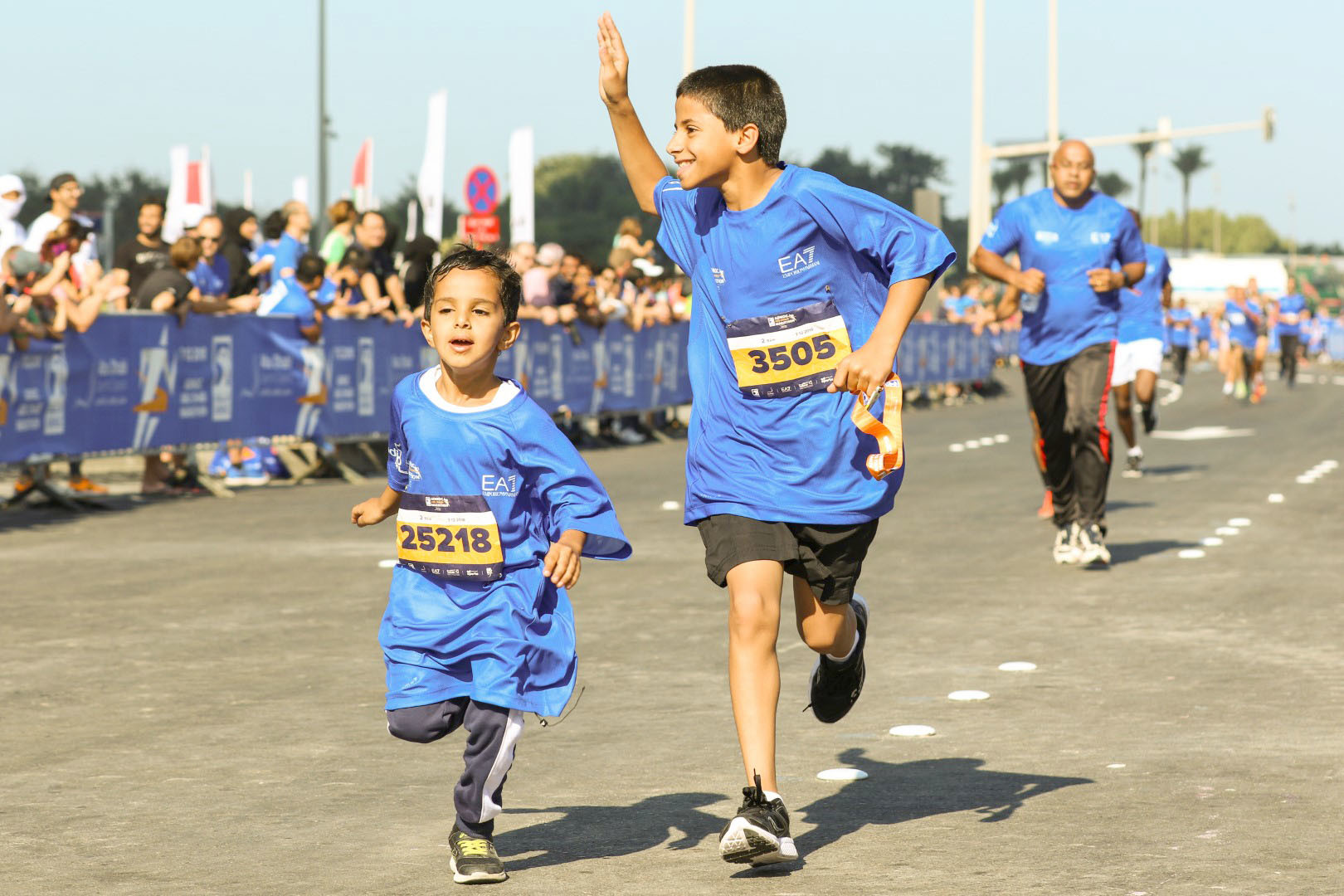
Whether participants run or walk the 2.5KM, 5KM and 10KM races of the ADNOC Abu Dhabi Marathon 2021, all runners will start at 18th Street then head out along the Corniche and loop around Qasr Al Hosn, one of Abu Dhabi’s oldest and most beautiful historical stone buildings. Runners will then pass the Emirates Heritage Village, home to one of the tallest flagpoles in the world, before making their way behind Marina Mall and up and down King Abdulla Street, before returning to the Corniche for a final loop of Qasr Al Hosn.
ADSC continues to prioritize the health and welfare of all participants and spectators in coordination with the relevant government agencies to ensure a successful and safe event. The marathon will take place with robust safety precautions in place, requiring participants over 16 years old to show proof of a full COVID-19 vaccination and a negative PCR test taken within 48 hours of the event. Those under 16 years old will need to show a negative PCR test taken within 48 hours of the event.
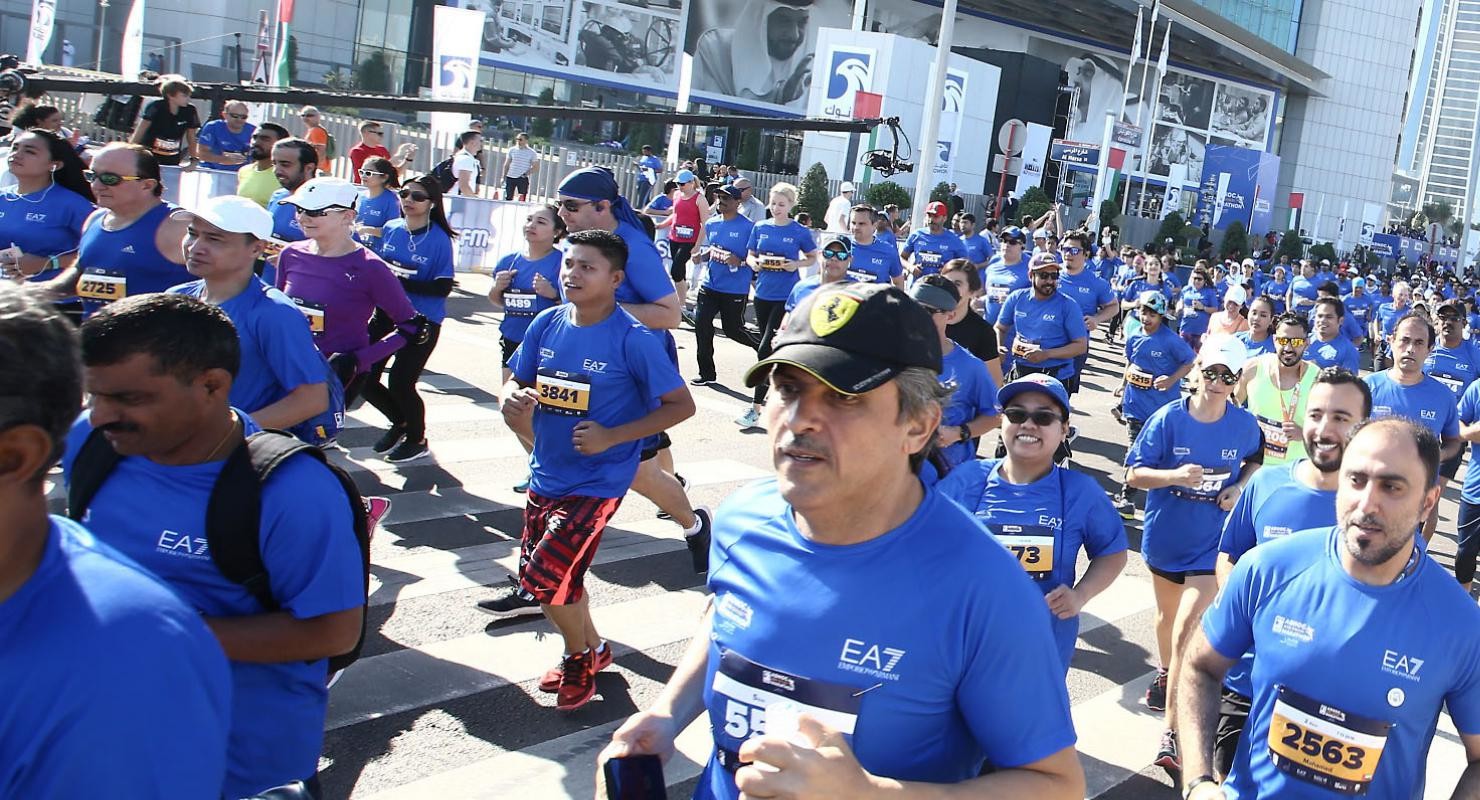
Runners who registered to take part in the 2020 event shall be automatically registered for the 2021 event, at no additional cost. No further action will be required and runners will be contacted to confirm their participation.
With limited slots available and already over 4,000 registered participants, runners are encouraged to sign up at the earliest for any of the available entries across all categories, including the Marathon (AED 350), Marathon Relay – Teams of 2 (AED 550), 10KM (AED 150), 5KM (AED 75) and 2.5KM (not-timed, AED 50). To register, please visit:https://www.adnocabudhabimarathon.com/register-now/.
by Hassan Bashir
Login to leave a comment
ADNOC Abu Dhabi Marathon
The Abu Dhabi Marathon is shaping up to being first class marathon for both elite runners and average runners as well. Take in the finest aspects of Abu Dhabi's heritage, modern landmarks and the waters of the Arabian Gulf, at this world-class athletics event, set against the backdrop of the Capital's stunning architecture.The race offered runners of all abilities the...
more...Abu Dhabi Marathon makes return with $303,000 up (Dhs1.11 million) for grabs
Organizer, Abu Dhabi Sports Council (ADSC), and race title sponsor, the Abu Dhabi National Oil Company (ADNOC), have announced the race routes, prize purse and official T-shirt design for the third edition of the Adnoc Abu Dhabi Marathon, set to take place on Nov.26 (Friday).
The announcement took place during a press conference held at the ADNOC Business Center on Sunday, and was attended by Aref Hamad Al Awani, General Secretary of Abu Dhabi Sports Council, Andrea Trabuio, Adnoc Abu Dhabi Marathon Race Director and Kinan Abou Hamdan, Marketing Director of Nike Middle East and Gulf Marketing Group.
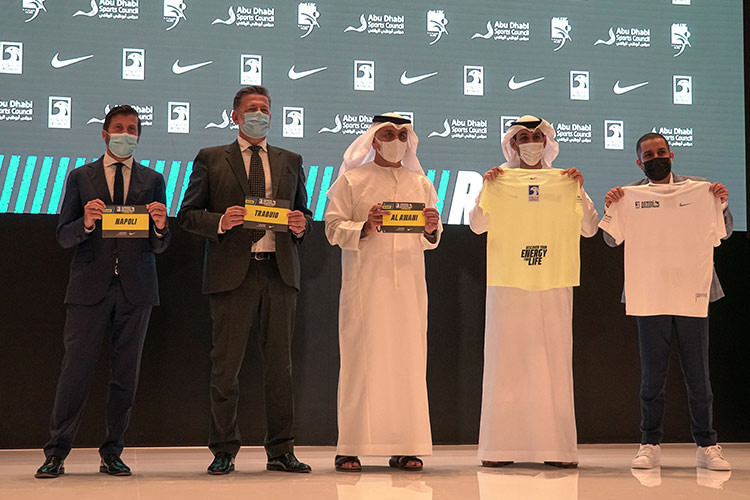
There are several race categories available for runners to choose from, including the individual 42.2KM marathon distance, a marathon relay for teams of two, 10KM, 5KM and 2.5KM, as well as a wheelchair race category.
As title sponsor, the marathon reinforces Adnoc’s commitment to elevating the health and wellbeing of the community as the company continues to support the UAE’s efforts to promote healthy lifestyles and achieve UN Sustainable Development Goal #3.
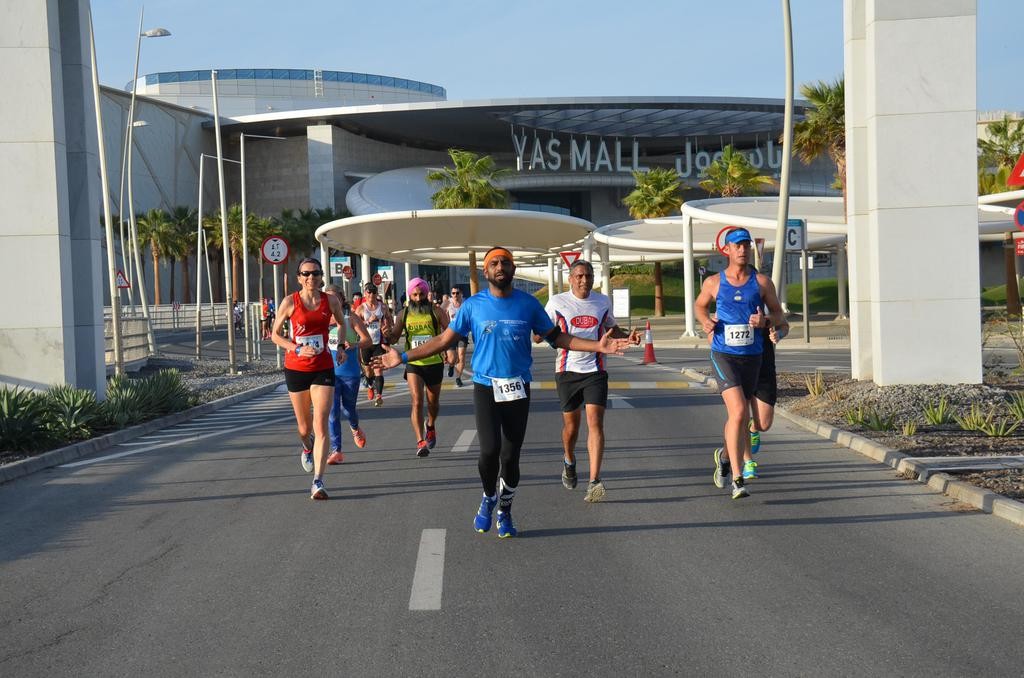
The total prize fund for the 2021 Adnoc Abu Dhabi Marathon is worth $303,000 (Dhs1.11 million) and will be shared across the various categories, with both elite male and female marathon winners taking home $50,000 (Dhs183,500) each.
A bonus cash of $30,000 is also being awarded, should they break the current course records of 2:04:40 and 2:21:01 for the male and female races respectively. Cash prizes of $ 8,500 and $ 11,000 will be awarded to winners of the wheelchair and 10 KM categories respectively.
Awani said: “The third edition of the Adnoc Abu Dhabi Marathon is witnessing a great turnout of more than 4,000 participants, despite the challenges posed by the pandemic. It’s an indication of the keenness and interaction of the Abu Dhabi community to participate in the event and express the extent of the growth and increase of runners in Abu Dhabi in particular, and the UAE in general.
“And with the launch of the upcoming event, Abu Dhabi once again proves its pioneering role in the sports industry, by hosting a large number of sporting events and earning praise for its organisational capabilities and infrastructure.
“We are delighted with the partnership with Adnoc which already embodies its corporate identity and its strategy through its sponsorship and support for the marathon and all global and community sporting events.
“We are also thankful for the presence of the sports brand Nike among the list of sponsors of the Adnoc Abu Dhabi Marathon, as well as for the support of the Department of Community Development, General Command of Abu Dhabi Police, Department of Municipalities and Transport, Tadweer and Al Ain Water.
“Last but not the least, the authorities that worked to uphold all precautionary measures in order to ensure the safety of all participants.” Yaser Saeed Almazrouei, Adnoc Upstream Executive Director, added: “The unveiling of the race routes and prize fund for the third edition of the Adnoc Abu Dhabi Marathon marks an important milestone as we prepare for the return of this unique community event. The size of this year’s fund is testament to Adnoc and the Abu Dhabi Sports Council’s commitment to attracting world-class athletes to the event and encouraging community participation. The marathon is a perfect example of how Adnoc is focused on making a positive and lasting contribution to the wellbeing of our community, through a diverse and integrated program of health and fitness initiatives.”
The 2021 Adnoc Abu Dhabi Marathon will start in front of the iconic Adnoc headquarters, offering direct views of the Founder’s Memorial, while runners participating in the 2.5KM, 5KM and 10KM races will begin in 18th Street.
Following the start gun, runners will head out along the Corniche and loop around Qasr Al Hosn, one of Abu Dhabi’s oldest and most beautiful historical stone buildings.
Participants will then pass the Emirates Heritage Village, home to one of the tallest flagpoles in the world, before making their way behind Marina Mall and up and down King Abdulla Street before returning to the Corniche for a final loop of Qasr Al Hosn.
Marathon runners will cross the finish line in the event village, located in the South Plaza of the Adnoc headquarters Campus, while all other participants will finish in 18th Street, opposite the Adnoc Welcome Center.
Login to leave a comment
ADNOC Abu Dhabi Marathon
The Abu Dhabi Marathon is shaping up to being first class marathon for both elite runners and average runners as well. Take in the finest aspects of Abu Dhabi's heritage, modern landmarks and the waters of the Arabian Gulf, at this world-class athletics event, set against the backdrop of the Capital's stunning architecture.The race offered runners of all abilities the...
more...Sprint stars Shelly-Ann Fraser-Pryce and Andre De Grasse will headline the Kamila Skolimowska Memorial in Poland
On Sunday 5, a World Athletics Continental Tour Gold meeting, while there will also be a wealth of champions in action in the field events, including a fond farewell to a legend of Polish athletics in Piotr Malachowski.
Fraser-Pryce will race her specialist event, the 100m, where she will face stiff opposition from compatriot Shericka Jackson. However, the two-time Olympic 100m champion should prove tough to beat, having clocked a PB of 10.60 in Lausanne last week.
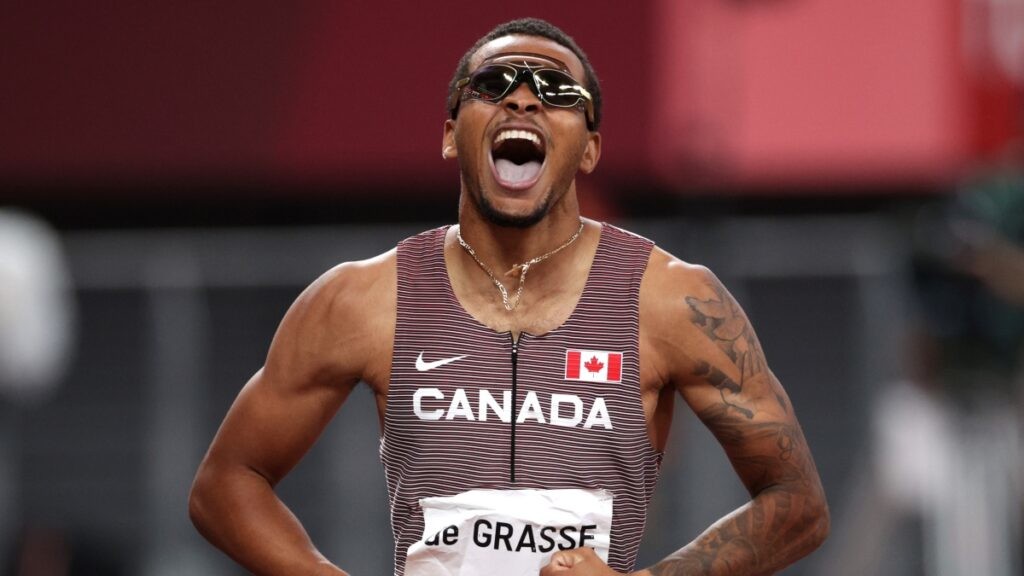
De Grasse will line up in the 200m, the event in which he’s the Olympic champion, having clocked a Canadian record of 19.62 to take gold in Tokyo, which he backed up in fine style with a wind-assisted 9.74 (2.9m/s) to win over 100m at the Eugene Diamond League. Also in the field are Italy’s Filippo Tortu, Turkey’s Ramil Guliyev and Britons Nethaneel Mitchell-Blake and Reece Prescod.
Another Olympic champion will be in action in the men’s 110m hurdles, with Jamaica’s Hansle Parchment looking to back up that Tokyo win against a formidable US duo in Devon Allen and Daniel Roberts.
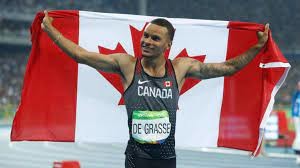
Brazil’s Alison Dos Santos, who took bronze in Tokyo in a South American record of 46.72, should prove tough to beat in the 400m hurdles. Fellow Olympic finalists Yasmani Copello of Turkey and Rasmus Magi of Estonia should be his closest pursuers.
US pair Michael Cherry and Vernon Norwood will be big contenders in the men’s 400m along with Botswana’s Isaac Makwala, while Poland’s Karol Zalewski, Kajetan Duszynski and Jakub Krzewina should mount a strong challenge on home turf.
The favourite for the women’s 400m is Marileidy Paulino of the Dominican Republic, who backed up her Olympic silver medal with recent wins in Lausanne (50.40) and Paris (50.12). Britain’s Jodie Williams will also be in the reckoning following her PB of 49.97 to finish sixth in the Olympic final, while the home charge is led by Justyna Swiety-Ersetic and Anna Kielbasinska, the latter in sparkling form following a PB of 50.38 in La Chaux-de-Fonds last month.
Nigeria’s Tobi Amusan, who clocked 12.60 to finish fourth in the Olympic final, should be tough to beat in the 100m hurdles, though US pair Sharika Nelvis and Christina Clemons will put it up to her along with Britain’s Cindy Sember.
The women’s 400m hurdles features a clash between the fourth-, fifth- and sixth-place finishers in the Olympic final: Janieve Russell of Jamaica along with Anna Ryzhykova and Viktoriya Tkachuk of Ukraine.
There will be a string of local heroes in action across the field events, with Olympic champion Wojciech Nowicki headlining the men’s hammer field, which also includes four-time world champion Pawel Fajdek and the man who split the Poles on the podium in Tokyo: Eivind Henriksen of Norway.
All eyes will be on Piotr Malachowski in the men’s discus as the 38-year-old performs in front of his home crowd for the last time before bringing the curtain down on a career that has included one world title, two world silver medals, two European golds and two Olympic silvers.
“Over 20 years of training, effort and sacrifice are now behind me,” said Malachowski. “It was a great time, full of joy. It is now times to say goodbye. I am retiring, bidding farewell to the fans, thanking them for the invaluable support they have given me over the years.”
Also in the field are Jamaica’s Fedrick Dacres, Slovenia’s Kristjan Ceh and Lithuania’s Andrius Gudzius.
Poland has a typically strong hand in the men’s pole vault where Piotr Lisek and Pawel Wojciechowski take on Olympic silver medallist Chris Nilsen and world champion Sam Kendricks.
The men’s shot put will be a must-see event, reuniting the top four finishers from the Tokyo Olympics: USA’s Ryan Crouser and Joe Kovacs along with New Zealand’s Tom Walsh and Brazil’s Darlan Romani.
Johannes Vetter is the star attraction in the men’s javelin, the German looking to put his Tokyo disappointment firmly behind him as he takes on Olympic silver medallist Jakub Vadlejch of the Czech Republic.
Italy’s Gianmarco Tamberi will take star billing in the men’s high jump where the Olympic champion takes on Olympic bronze medallist Maksim Nedasekau, while the women’s high jump features Ukraine’s Yaroslava Mahuchikh, Yuliya Levchenko and Iryna Herashchenko along with Poland’s Kamila Licwinko.
Poland’s Maria Andrejczyk will be a popular presence among fans, not only due to her Olympic silver in Tokyo but due to her decision to auction off that medal to raise money for a Polish toddler’s heart surgery. Polish convenience store Zabka won the auction and returned the medal to Andrejczyk, who said that she believes “the good we do comes back to us.” In Silesia she will take on world champion Kelsey-Lee Barber of Australia.
Poland’s Malwina Kopron will take on France’s Alexandra Tavernier in the women’s hammer, the woman she beat to the bronze medal at the Tokyo Olympics, while fellow finalist Joanna Fiodorow is also in the field. Portugal’s Auriol Dongmo is the leading entrant in the women’s shot put.
Olympic 10,000m champion Selemon Barega of Ethiopia and 3000m steeplechase champion Soufiane El Bakkali of Morocco are the star attractions in the distance races, the two squaring off over 3000m in a field that includes rising star Tadese Worku of Ethiopia, the world U20 champion, and Abel Kipsang, who finished fourth in the Olympic 1500m final.
by World Athletics
Login to leave a comment
Jamaican women win gold in womens 4x100m final
The Jamaican women brought out the big guns for the final of the 4x100m relay, and it paid off. Briana Williams ran the lead leg, handing off to Shelly Ann Fraser-Pryce, then Elaine Thompson-Herah and Shericka Jackson (who also ran in the heats) for the win in a national record of 41.02. They edged out the USA, who took silver in a season’s best 41.45, anchored by Gabby Thomas (with a lot of ground being made up in the third leg by Jenna Prandini).
Great Britain came through for bronze in 41.88. It was the third time in four Olympics that these three nations have stood on the podium in this event, in various configurations of gold, silver and bronze.
There were a few moments of doubt over whether the Jamaicans might have been out of position in the first hand-off, but ultimately the result stood, and the team started celebrating. Switzerland ran well, with 100m finalists Ajla del Ponte and Mujinga Kambundji racing hard to put their team on the podium, but ultimately it wasn’t enough. Team Netherlands fumbled the handoff from lead Nadine Visser to Dafne Schippers, and their race was done.

Miller-Uibo gets gold in 400m final
The women’s 400m final netted another gold for defending gold medallist Shaunae Miller-Uibo, who also won five years ago in Rio, in a personal best and area record of 48.36, after some doubt about whether the schedule would allow her to double. (Miller-Uibo also ran the 200m, but didn’t make the final.) Marileidy Paulino took silver in a national-record-setting performance for the Dominican Republic of 49.20. Allyson Felix, who won silver in this event in Rio, earned the bronze in 49.46, her fastest time yet this year and an unbelievable 10th Olympic medal for the American.
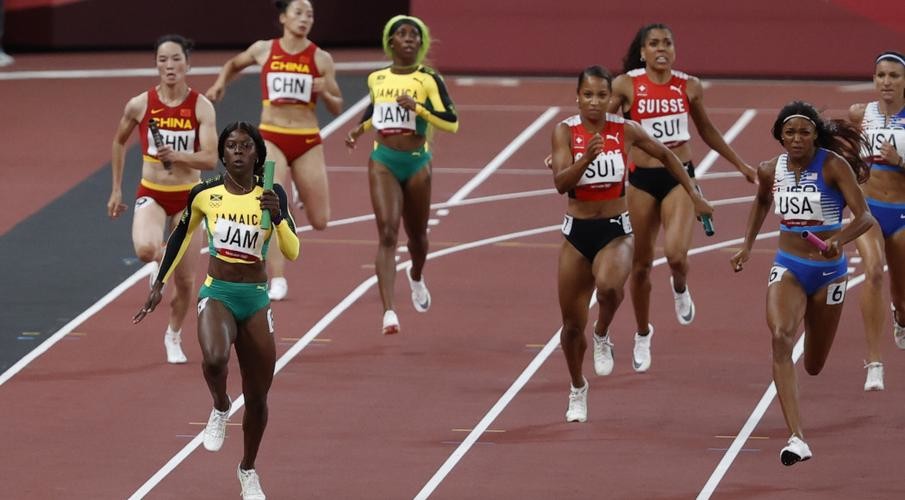
Team USA redeems itself in the men’s 4x400m relay heats
The first heat of the men’s 4x400m was fast and furious, with Team USA running well after its disastrous 4x100m performance. Anchor Michael Norman crossed the line first, in 2:57.77, followed by Botswana (who ran their fastest man, Isaac Makwala, as their lead leg, a strategy that paid off for them) and Trinidad and Tobago as the last auto-qualifier from this heat. Italy and the Netherlands, in fourth and fifth, had to wait and see if they would advance, but both qualified through to the final in the end. All five saw times under three minutes, and this heat produced three national or area records – for Botswana, the Netherlands and Italy.
The second heat was almost as fast, producing two national records (but in the fourth and fifth finishers, India and Japan, who did not advance). Poland and Belgium dominated, with the Poles crossing the line first in 2:58.55. Jamaica finished third, all of them running under three minutes. Going through to Friday evening’s final are USA, Botswana, Trinidad and Tobago, Poland, Belgium and Jamaica.
by Anne Francis
Login to leave a comment
Poland makes history with Olympic mixed 4x400m win
Poland’s first gold medal of the Tokyo Games came with a special bonus: a place in the Olympic history books.
Kajetan Duszynski raced to the front down the final straight and powered across the line to give his country the first gold medal in the inaugural Olympic mixed 4x400 relay on Saturday (31).
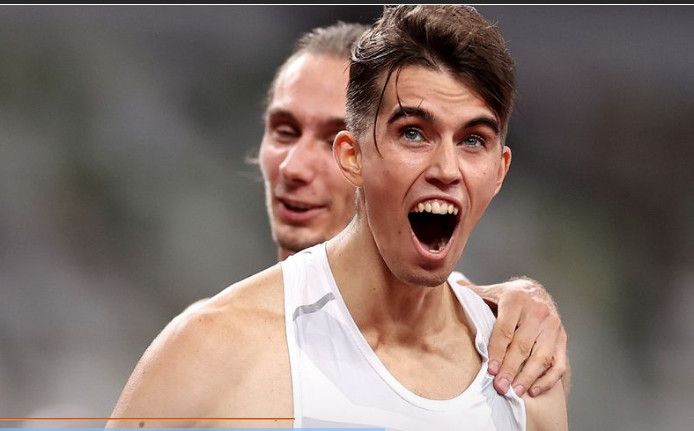

The Polish quartet of Karol Zalewski, Natalia Kaczmarek, Justyna Swiety-Ersetic and Duszynski clocked a European – and now Olympic – record of 3:09.87 to claim the title ahead of the Dominican Republic and the United States.
It was also Poland’s second Olympic gold in an athletics relay, coming 56 years after the Poles won the women’s 4x400m relay at the 1964 Games, which also happened to be held in Tokyo.
“We all believed we could manage to win the medal,” Zalewski said. “We were not sure if it was going to be gold or something else, but we knew that we could win something. We all left our hearts on the track.”
Duszynski, who ran the final leg in 44.38, held his arms outsretched wide as he crossed the line, then pulled his singlet over his head in celebration before being mobbed by his teammates.
"In the last 150 metres I felt I had a lot of strength still,” Dusynski said. “I'm that type of endurance athlete. It is my strength to run the first 200 metres slowly and then to attack towards the finish line. So I knew that I could make it. It's my strategy and it worked for me."
The Dominican Republic quartet of Lidio Andres Feliz, Marileidy Paulino, Anabel Medina Ventura and Alexander Oganda claimed the silver, with Paulino clocking a 48.7 split for her second leg. The bronze went to the US team of Trevor Stewart, Kendall Ellis, Kaylin Whitney and Vernon Norwood.
Oganda outleaned Norwood at the line to clinch the silver in 3:10.21, just 0.1 ahead of the US.
“It is so exciting to come here and run the first mixed relay at the Olympic Games, and to come out with a medal feels great,” Ellis said. “It feels like a win for us."
The race capped an eventful 24 hours for the US and Dominican teams. They had been disqualified after the qualifying rounds on Friday but were reinstated on appeal in time for the final.
The USA replaced their lineup from the heats, which was made up of Lynna Irby, Taylor Manson, Bryce Deadmon and Elija Godwin. The members of Saturday’s team said the controversy over the disqualification and reinstatement should not take away from their bronze-medal performance.
“It was events outside our control and we as a team stand behind our teammates and the United States, who we are proud to represent and bring home a medal for us,” Whitney said.
The mixed relay made its Olympic debut two years after being contested at the World Athletics Championships for the first time in Doha.
While teams can choose any order they want for the relay, all teams in Tokyo opted for the conventional order of man-woman-woman-man.
The Dominicans built up a large lead on the third lap until 21-year-old Dutch 400m and 400m hurdles star Femke Bol reeled them in going into the anchor leg.
Duszynski timed his kick perfectly, surging to the front after the final turn and pulling away down the home stretch. Norwood moved into second place and seemed poised to secure the silver for the US but was edged out by Oganda on the lean.
The US team did not include Allyson Felix, who had helped the USA win the mixed relay in Doha and was eligible to run the event in Tokyo.
It means that Felix, competing in her fifth Olympics at the age of 35, will have to wait a bit longer to bid for her 10th career medal. That would make her the most decorated woman in Olympic athletics history and equal Carl Lewis for the most medals by a US track and field athlete.
Felix, who holds six gold and three bronze medals, will run in the 400m and possibly the women's 4x400m relay.
by World Athletics
Login to leave a comment
Tokyo 2020 Olympic Games
Fifty-six years after having organized the Olympic Games, the Japanese capital will be hosting a Summer edition for the second time, originally scheduled from July 24 to August 9, 2020, the games were postponed due to coronavirus outbreak, the postponed Tokyo Olympics will be held from July 23 to August 8 in 2021, according to the International Olympic Committee decision. ...
more...World record-holder Joshua Cheptegei shares his passion for running
My passion for running started from the age of 10 or 11. I remember my brother and I would put some poles around a grass field as markers, and we’d race friends and neighbours six or seven times around the poles.
Even back then, running brought me great joy and immense happiness. Running was in my blood from a young age. It was my passion.
I soon started competitive running at primary school. Back then I competed just for the glory of my school. It was never for commercial gain. The glory of competing for my school is what motivated me. Sometimes I finished second, sometimes third, I didn’t always win but I was grateful and happy.
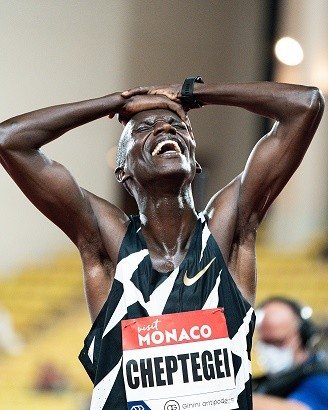
It was while at high school in 2012 I first dreamed of being a professional runner. But even later, once I started training full time, my passion for running has remained.
I’m at my happiest running the tempo runs. I love it. Those long speed sessions where you have to try to hold the same pace for a long time. It brings me immense joy – especially those sessions when you finish and you still feel like you can push some more.
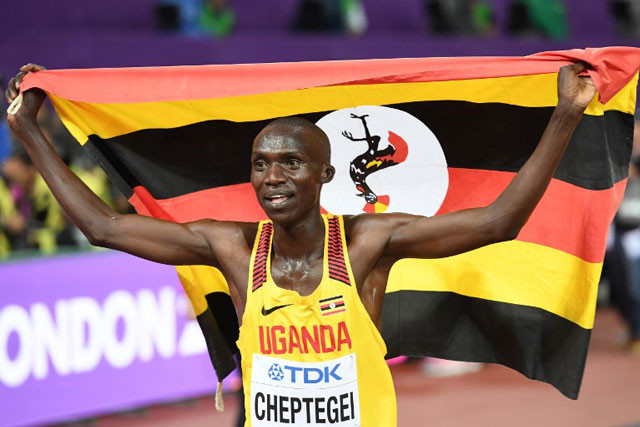
It is never a good day when, for whatever reason, I can’t run – especially if I’m injured or ill. I love to wake up every morning and go for a run.
I would say there is immense value in running. Success starts with a healthy body and a healthy mind, and when we run we are nourishing both. This will then allow us to be more productive and achieve our best results, no matter the profession.
Running brings with it great freedom and health. And even after I’m retired from professional athletics, I look forward to the thought of going for a run every day.
by World Athletics
Login to leave a comment
Betsy Riley and NBC's Olympics Production Team Are to Thank for the Peaking Track Coverage
The network’s Olympics production team is peaking at the right time—thanks, in part, to Betsy Riley, its first female producer.
Track and field reporter Lewis Johnson is live on NBC during the third day of the Olympic Track Trials in Eugene, Oregon—and he’s perched on the steeplechase barrier in front of the water jump.
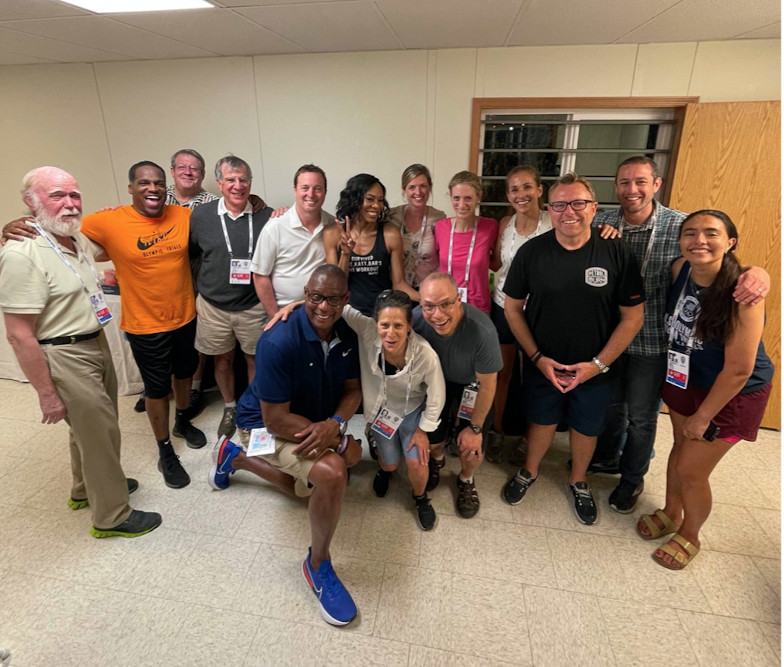
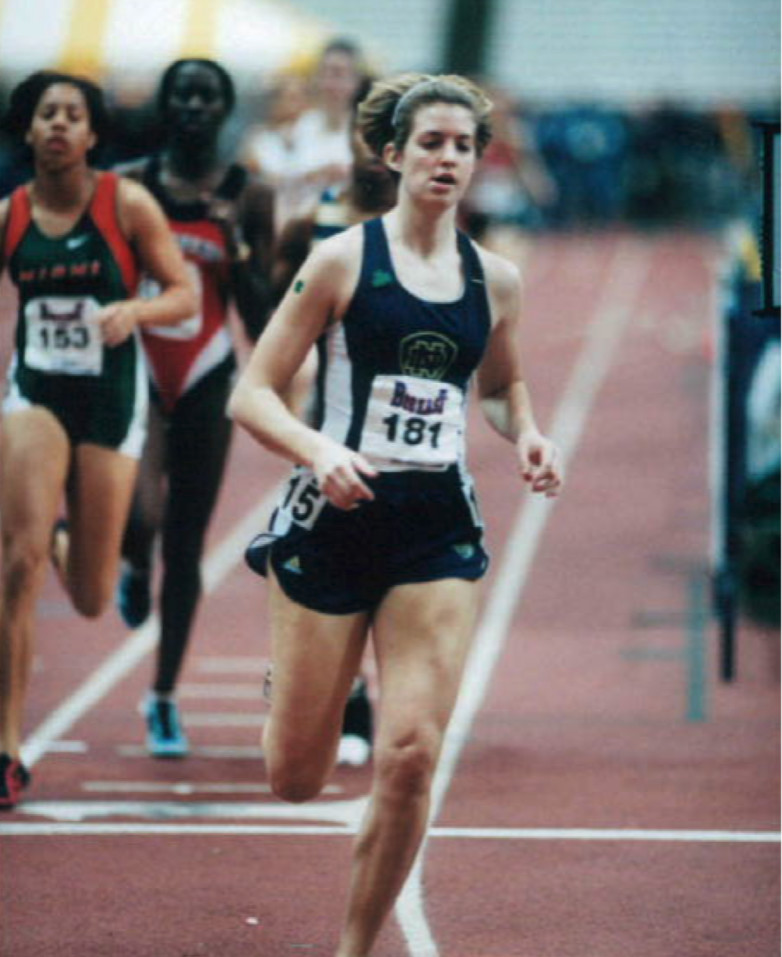
He explains the origins of the event, from the 1800s in England. Graphics flash on the screen, showing the specifics of the modern-day version of the steeplechase, 28 barriers over a 1.86-mile race. Johnson describes how the barriers don’t move as he tries, unsuccessfully, to hip check the one he was just sitting on.
Then the segment takes a whimsical turn. He walks around to the water side of the jump, kicks off a pair of green Nikes, and wades in. “Oh, that feels so good, Diff,” he says, talking to Leigh Diffey, the lead announcer at the Trials.
As Johnson gets to the deepest portion of the pit, the water is lapping at the bottom of his khaki shorts. He sits down at the edge. “Throw me a towel, man,” he says, before the broadcast cuts to the 17 women lined up at the start of the first heat of the women’s steeplechase.
It’s effective television: In one minute and 17 seconds, the segment has entertained and informed viewers—those who might not know the first thing about one of track’s quirkiest events as well as those who understand the basics of steeple but have never gotten close.
The idea for the segment? That came from the Trials producer, Betsy Riley.
Riley has implemented dozens of changes to NBC’s track broadcasts. Some are obvious improvements, like bringing on two-time Olympian Kara Goucher as a commentator, or using double boxes to keep a camera focused on track action during commercials. Others are behind-the-scenes, out of sight of viewers, but which contribute to better coverage.
The result is that long-suffering track fans, who for decades from their recliners have made a secondary sport of complaining about the way track is aired, suddenly find themselves with little to carp about. In fact, anecdotally at least, they’re happy to tune in, whether it’s on their TVs or phones or tablets, and watch running and field events.
That’s largely because Riley is one of them, a true believer and competitor with a lifelong love of track and field.
A pair of firsts
Riley will make TV history this month when she becomes the first woman to produce track and field at an Olympics for NBC. Network brass plan their coverage of the summer Games around swimming, gymnastics, and track—these three disciplines are the “tentpoles” that anchor the coverage—and in fact, Riley is the first woman to produce any of the sports for NBC at the Games.
“We’re so proud of her,” said Molly Solomon, who is the executive producer for the summer Games, also a first for a woman at NBC. “The fact that she’s producing an ‘A’ venue, track and field, at the Olympics, one of the big three. It’s a huge accomplishment.”
But Riley brushes this aside. While other people are making a big deal out of it, she is not, deflecting attention to the great role models she’s had at NBC, including Solomon, and the team of experts she has around her.
A pair of firsts
Riley will make TV history this month when she becomes the first woman to produce track and field at an Olympics for NBC. Network brass plan their coverage of the summer Games around swimming, gymnastics, and track—these three disciplines are the “tentpoles” that anchor the coverage—and in fact, Riley is the first woman to produce any of the sports for NBC at the Games.
“We’re so proud of her,” said Molly Solomon, who is the executive producer for the summer Games, also a first for a woman at NBC. “The fact that she’s producing an ‘A’ venue, track and field, at the Olympics, one of the big three. It’s a huge accomplishment.”
But Riley brushes this aside. While other people are making a big deal out of it, she is not, deflecting attention to the great role models she’s had at NBC, including Solomon, and the team of experts she has around her.
From there, she raised her hand for anything, filling any role, on coverage of surfing, golf, horse racing, college football, college basketball. And always the Olympics and Olympic sports. These days, she’s also Michele Tafoya’s sideline producer on Sunday Night Football.
Amid the long hours that TV requires, Riley met her husband and got married, and they have two children, ages 4 and 1 1/2. In a year when talk of mothers and motherhood has dominated track and field, Riley has her own story to rival them all.
It was 2017, she was 35 weeks pregnant, and she had just finished producing the Prefontaine Classic, a Diamond League track meet in Eugene. On her flight home to Baltimore, somewhere over the Midwest, her water broke. When the plane landed, she took a cab straight to the hospital, and met her husband there. A few hours later, they welcomed a son—who had jumped the gun by more than a month.
Infinite possibilities
Track and field is among the most complex sports to broadcast, and Riley strives to replicate for viewers at home an experience that would be similar to what happens when spectators are watching live, in the stadium. They can choose to watch running on the track or look to the infield for one or more field events happening simultaneously. How do you get that same sense of the action on screen?
On June 26, the penultimate day of Trials competition, Riley sits in the cramped NBC production truck, staring at 30 different screens displaying various camera angles. On her headset she hears the voices of seven on-air commentators. Riley has field events producer Scott Karpen a few feet to her left and director Charlie Dammeyer inches to her right, so close you could barely hold a discus between them. A countdown until the live show begins. Four minutes. Two minutes.
Into her headset, Riley says in a low voice, “Have a great one, everyone.”
From there, Riley is making constant decisions for the next two hours from an infinite combination of elements: which replays to show, when to air a graphic, when to go to a field events package on the women’s hammer throw that happened earlier in the evening, how much time to devote to Sydney McLaughlin walking toward the track while leaving Diffey enough time to voice the element.
Riley, Dammeyer, and Karpen trust one another completely, which makes Riley’s job easier as she decides which family members and coaches to show, when to go to live interviews with happy athletes who just made the Olympic team (and what to do when one lets an expletive slip, as Elle Purrier St. Pierre did after winning the 1500 meters). Karpen describes the role of producer as “the ultimate multitasking job.”
Her background helped make Riley great, observers say, because she grew up in sports television, filling every position, from the entry level production associate calling graphics to working in the videotape area to being in charge of the tape area. She’s been in the front of the truck as the associate director who assists the director and producer in timing.
“If you do those jobs, when you are promoted to producer, you understand what everyone is doing,” Solomon said. “You understand what they need from their leader. You can synthesize all of it. It’s an amazing skill, but you can have six voices in your headset and hear the right ones at the right time. It’s orchestrated chaos.”
A different person might be ruffled by the pressure, but Riley’s steady demeanor is one of her hallmarks.
“I always admire her measured style in the heat of battle,” Solomon said. “She’s very calm, cool, and collected, but she knows what she wants, and she’s direct. That’s what makes great producers—to have a clear head in the middle of the chaos and be able to communicate to the team and lead the team.”
Riley says her faith in the people around her makes it easy. “Our team is incredible,” she said. “It doesn’t happen without every single person contributing, sharing ideas and then pulling in the same direction when we’re on air. In any successful broadcast, you have great teamwork.”
But she has trouble explaining what is going on in her brain during broadcasts, synthesizing all the camera angles and voices, making scores of journalistic decisions every minute. All she can say is that she’s constantly evaluating: What’s the most important right now?
Building team chemistry
None of it happens by accident. Every live broadcast is the result of months of brainstorming, testing, planning, and coaching.
“People at home see the ultimate product,” Karpen explains. “They don’t see the months and years and hours of thought and time she’s put into this. Nothing happens overnight. It’s because Betsy was somewhere in the world thinking, ‘How can we get better?’ And pushing people to think about this. It’s not show up and let’s make TV. This is hours and years to get to that one moment.”
Riley is known for listening at meetings, soliciting input from anyone who wants to contribute, giving serious consideration to all ideas.
“One thing I absolutely respect about her is that nothing is a bad idea,” Dammeyer said. “Ideas come from everywhere. She’s asking everyone, ‘What do you think?’ Everyone has a seat at the table, from Ato [Boldon] to Leigh to the graphics production assistant. Everybody’s voice counts.”
When Goucher first started doing on-air commentary for NBC this spring, Riley gave her extra coaching sessions, telling her what she was doing well and what she needed to improve. On the live broadcast, Riley is in Goucher’s ear.
Goucher remembers watching Abbey Cooper pull away in the early laps of the first round of the women’s 5,000 meters, trying to get the Olympic standard on her own in the Eugene heat. “I was like, ‘This is crazy.’ Betsy was in my ear. ‘Why is this hard? Tell the audience why this is hard.’ She gives me little cues.”
Goucher has been one of the revelations of the track season—a hit with viewers for the passion she brings and the insights she shares, gleaned from her own career as an athlete. But nothing motivates her as much as her producer’s live coaching. “If I do something that she likes, she says, ‘Well done.’ She’ll give you a little feedback as you’re going, which I find super helpful.”
Which isn’t to say that it’s always roses. Boldon has been working NBC broadcasts for 14 years. In 2019, around the time of the Prefontaine Classic, he and the other commentators and members of the production team were summoned to a meeting.
“You know how when a team is playing really badly and you have a players-only meeting?” he said. “Right. We had one of those. The chemistry wasn’t right, the flow wasn’t right. It was watching a team of really good players play badly because they can’t play with each other.”
In Boldon’s telling, Riley led the meeting and didn’t mince words with her assessment of what needed to improve. The message? “Swimming and gymnastics get the baton and we have to bring it home for NBC,” Boldon said. “Everyone in that room was as serious as a heart attack. She came with receipts. She came with video—she had put together a whole package. ‘Look at this. What’s wrong with this? Can we do better here?’”
It was a turning point. “I think the broadcast we did from the Eugene Trials was the best Trials broadcast I’ve ever been a part of,” he said.
A network’s core values
NBC coverage—no matter who the producer is—focuses on two things, according to Riley. First, getting the sport right. And second, storytelling.
“Sometimes people think of storytelling as a soft human interest story, and that’s possible, but it’s also storytelling about the race itself and the athletic event itself,” Riley said. “Storytelling is part of everything we do at the Olympics.”
Donavan Brazier in a feature about fly fishing before the men’s 800 final? That’s storytelling. Lewis Johnson wading into the water jump pit? Also storytelling. But most important is the race itself. Replays that show Dalilah Muhammad getting out to a fast start in the women’s 400-meter hurdles, or Cole Hocker’s kick to win the men’s 1500 meters are, at their core, about storytelling.
The goal of every sports broadcast is to make the viewer care about who they’re watching. Riley understands this, and she’s not afraid to push the envelope with technology to help viewers better understand track and field.
During the Trials, fans of the distance races rejoiced at coverage that continued through commercials with double boxes. It’s a feature that’s been around for five years, Riley said, but its use is expected now.
“Sponsors are noticing that it’s nice to have action, it’s nice to have people sticking around for those commercials,” she said. “Early on there was definitely an effort to showcase the value of it. Now that we’re five years on, people know that’s expected and what track fans really want.”
Riley has been experimenting with other forms of technology—miles per hour graphics and live leaderboards that show how many meters behind athletes are from the leader. The point, always, is to give the viewer at home deeper understanding.
Heading to Tokyo
On the NBC broadcast in primetime, Riley and her team will make sure track and field is accessible for those who tune into the sport only once every four years. Boldon says Riley has pushed him not to rely on statistics and times. Instead, she’ll be in his ear during broadcasts, urging him along to find a different way to tell stories. “Make me care,” she’ll say. “Make me care.”
But changing technology allows viewers to customize what they see. If hardcore triple jump fans want to watch every minute of triple jump or discus from Tokyo, and not just a highlights package, that’s possible with the cable channels and digital streams.
And that means as the broadcast team heads for Tokyo, they’ve got hours and hours of work ahead of them. For 10 straight days, July 30 to August 8, Riley and the team will be at it, documenting the performances and the emotions they inspire.
“For the TV dorks like we are, our team relishes the opportunity to do lots of TV and cover lots of competition,” Riley said. “That’s really fun stuff.”
by Runner’s World
Login to leave a comment
Getting off on the right foot on snowshoes
Snowshoeing can be a relaxing romp in the woods or a serious workout. You may have to widen your stride to avoid stepping on your own snowshoes, and a pair of trekking poles can help your balance, especially on hilly terrain. But mostly it's just like walking.
Choose the right 'shoes
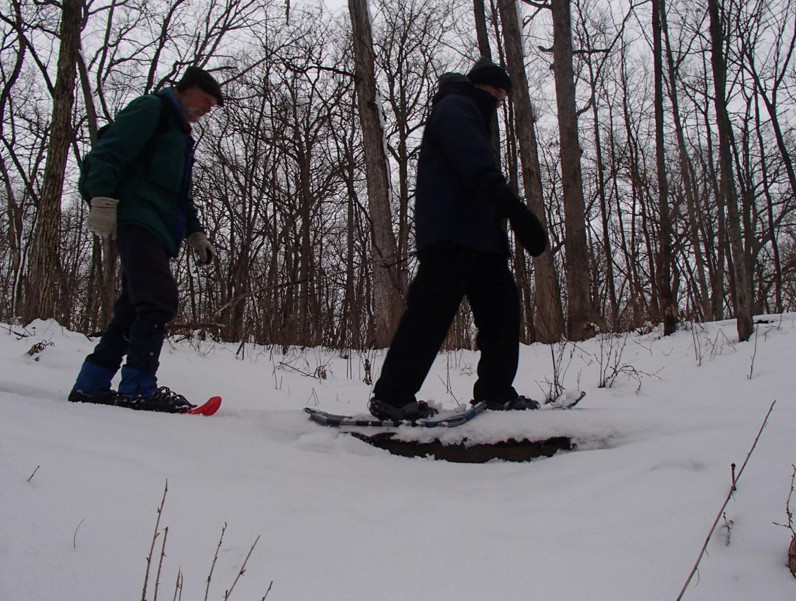
Snowshoes come in different shapes and sizes, even women-specific models. The pair on the left are for deeper snow or heavier people; the pair on the right work best for packed trails or racing. Snowshoes have a weight rating. Consider not only your body weight but the clothes and boots you're wearing and what you're carrying in your pack.
Pack a snack
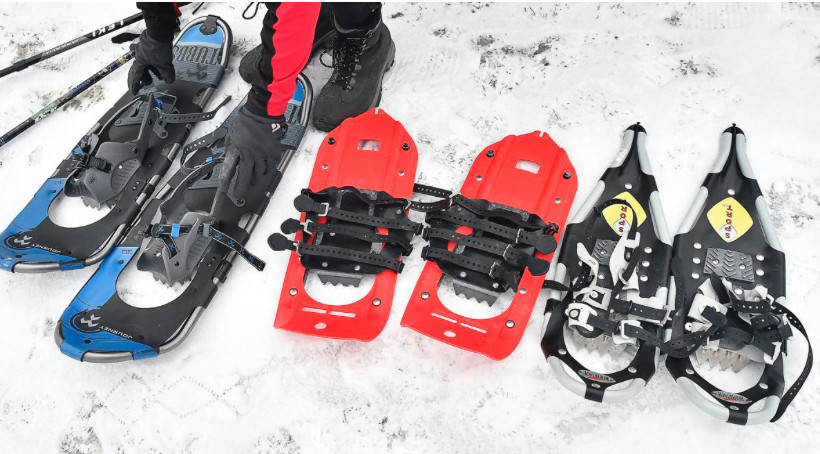
Snowshoeing can burn up a lot of energy. It's also important to stay hydrated. A waist pack is convenient for carrying water and snacks.
Travel with a friend
Although a solo trip can be relaxing and reflective, there is safety in numbers, particularly when outside in cold weather. Juergen Schroeer of Normal and Patricia Carlson of Bloomington travel together on a trail at McLean County's Comlara Park, northwest of Hudson, during a recent winter
Follow the signs
Some places have marked snowshoe trails, such as this one at Rapid River, Michigan, in the Hiawatha National Forest. But regular hiking trails in parks are generally fine for snowshoeing. Even city parks or public golf courses can be a fun options
Stay off of ski tracks
It's common winter courtesy to stay off ski tracks when hiking or snowshoeing. That's true whether its a track left by a skier on their own or a groomed trail, such as this one at Razorback Ridges in Sayner, Wisconsin, which has both ski trails and snowshoe trails
Don't forget to laugh
Login to leave a comment
Do poles make ultra trail running more difficult?
Using poles can increase cardiovascular output
Many trail users have seen fellow exercisers running, walking and hiking with poles. Beyond recreational use, these poles can be seen at major ultra-endurance events like UTMB or the Hardrock 100. Poles are much lighter and more affordable than they used to be, and they’re becoming more prevalent in the trail and hiking communities. While pole usage is truly up to the runner, there’s some research that suggests they could make you work harder – which is fine during training, but not ideal on race day.
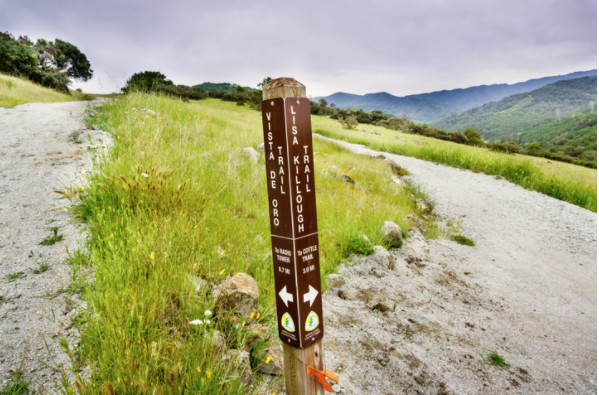
Note: some races don’t allow poles, so double check before making them part of your race plan.
Who should use poles?
A 2020 literature review found that hikers who used poles had an increase in cardiovascular output, but a lower rate of perceived exertion. A runner’s rate of perceived exertion is basically a subjective indicator of how hard they feel they’re working at any given time. This makes sense, as the poles incorporate a person’s upper body more than their natural arm carriage would. If you’re looking for a better whole-body workout, poles seem to be an asset. However, if you’re looking to use as little energy as possible, the poles could be making you work harder to travel the same distance.
Even better news for those looking for a good overall workout (as opposed to a race victory) is that using poles made the subject’s effort feel easier. In a 60-minute uphill trek, pole users saw a significant decrease in their RPE, however, in the downhill trail they saw no difference. So for runners looking to work harder while feeling like their exercise is easier (which is basically everyone’s dream), poles are a great idea. However, if the goal of the day is to win a race, leave the poles at home.
Other considerations
While the research suggests that using poles is more taxing on your cardiovascular system, trail racers should consider the balance assistance that poles can provide. In a study looking at pole usage and balance, it was found that poles improved runners’ stability. While more research needs to be done on long-term pole usage, occasional use seems to help performance.
If you’re considering a particularly gnarly trail race, poles might be to your advantage. For example, in the Hardrock 100, most runners uses poles throughout the race. However, if your race has mostly fairly predictable footing, you can probably go without.
by Running Magazine
Login to leave a comment
Over 4,000 runners in Göteborgsvarvet Virtual Race 21K
This weekend, 15-17 May, you can join a virtual version of one of the largest running events in the world - and support the sport! Make a difference when it matters and support the future of running.
Göteborgsvarvet Virtual Race 21k is also a seeding race before the Göteborgsvarvet Half Marathon 2021. There will be a livestream from the race on Saturday May 16th with one of Sweden´s best runners at the Swedish media channel gp.se, it starts at 12.45 pm CET. The solo runner is Suldan Hassan from a local athletics club in Gothenburg, and he will run after the race leader car, the 100% electric Polestar 2.
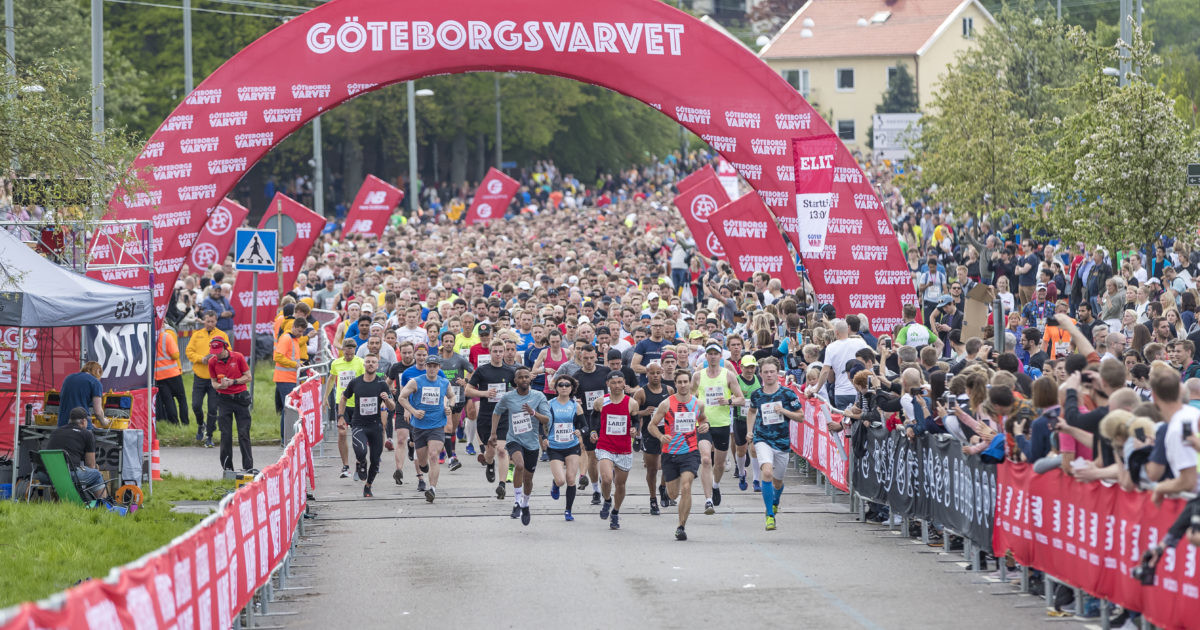
All runners in the race is contributing to the local athletics with their start.
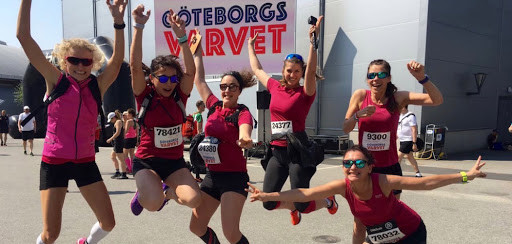
The registration to the Göteborgsvarvet Virtual Race 21k is open until May 17th, and already have 4200 runners from 21 different countries registered to the race.
Main partners to the virtual race are the electric performance brand Polestar, and Garmin, the race is organized in collaboration with the athlete’s app Strava and one of the world’s largest races Göteborgsvarvet Half Marathon.
The 41st annual Göteborgsvarvet Half Marathon takes place on 22 May 2021. (The 2020 years race has been cancelled due to the corona virus). The great half marathon in Gothenburg, Sweden was first held in 1980 and approximately 80,000 runners are usually participating in one of the races during race week of the Göteborgsvarvet Half Marathon.
Göteborgsvarvet Half Marathon is organised by Gothenburg Athletic Association in favor of the athletics clubs in the region and is certified according to the ISO 20121 standards for sustainable events.
Login to leave a comment
Gothenburg Half Marathon
Run through the heart of one of Scandinavia's most beautiful cities. The course will be lined with over 200,000 enthusiastic and sports interested spectators. Gothenburgs central location in Scandinavia makes it easy to reach by plane, boat, train or car. Göteborgsvarvet is an annual half marathon running competition in Gothenburg, Sweden. It is the largest annual running competition in Sweden,...
more...To Run or Walk the Hills, That Is The Question
Those old enough to have learned to drive with a manual transmission were probably told they had to shift gears when the tachometer reached a certain RPM. Once you became proficient at it, you simply knew when to shift, by feel or sound, and didn’t need to look at the gauge much less think about it. The same is true of changing between running and walking uphill, but, surprisingly, it isn’t as simple, involving many variables. In fact, it is so complex that the choice of when to run or walk up a hill was the focus of a mountain runner student’s recent honors thesis.
Jackson Brill, a Salomon-sponsored runner and soon-to-be-graduate of the University of Colorado-Boulder, wrote his thesis on “To Run or Walk Uphill: A Matter of Inclination” toward earning his degree in Integrative Physiology. In researching it, he worked with his advisor, prominent CU faculty member, Dr. Roger Kram, Ph.D., Integrative Physiology, who runs the locomotion lab that did the original Nike 4% testing.
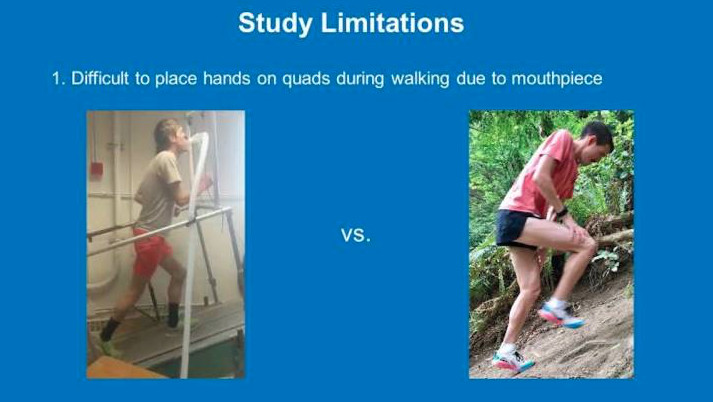
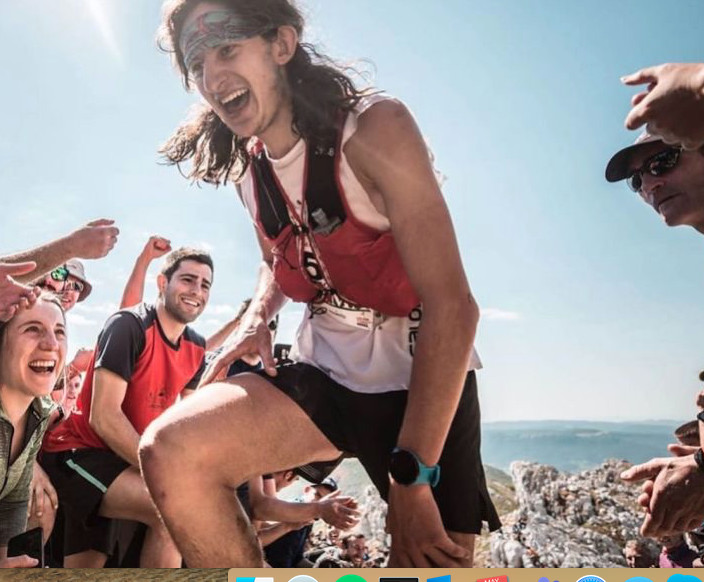
The Study
Brill’s thesis centers on the point at which uphill trail and mountain runners transition to walkers. He measured three different speeds at which this can occur. First is the “Preferred Transition Speed” (PTS), where people prefer to switch—any slower, humans prefer to walk, any faster, they prefer to run. The second is the “Energy Optimal Transition Speed,” (EOTS), where exercise economy — the cost required to maintain a certain speed — indicates transitioning to walking is mechanically better. (Note: Brill shies away from saying “more efficient” as there is no way to truly measure mechanical power in runners.) Finally, there is the heart rate optimal transition speed (HROTS); a third measure that is basically the same idea as EOTS but using heart rate as the efficiency indicator. At HROTS, heart rate is the same between walking and running. Slower than this speed, walking heart rate is lower than running heart rate. Faster than HROTS, vice versa.
Brill’s study set out to examine the effect that incline had on PTS and EOTS, and to determine “how heart rate is influenced by gait selection.” Brill’s hypothesis was that at certain speeds it would be more efficient to walk on steeper inclines and that both speed and incline play into PTS and EOTS. In other words, that both measures would get slower at steeper inclines.
“I thought this would occur because both walking and running are more metabolically demanding at steeper inclines and, thus, there would be greater drive to minimize energetic cost,” he says. “Finally, I hypothesized that HROTS and EOTS would be equal at each incline. I thought this would occur because heart rate generally correlates with energetic cost during steady state endurance exercise.”
Brill based his study on testing ten “healthy, high-caliber, male trail and mountain runners.” He tested the runners in two sessions, one where the treadmill was set at 0 degrees and 15 degrees and a second at 5 degrees and 10 degrees. PTS and EOTS were determined from metabolic cost data for walking and running at three or four speeds per incline near the expected EOTS.
Expected and Unexpected Research Findings
Image Courtesy Jackson Brill
Brill’s study and analysis produced expected and unexpected results. Consistent with prior research, the study showed that at all inclines walking generally required less metabolic power at slow speeds and running required less at faster speeds, and that the transition would arrive at a slower speed on steeper inclines. Also consistent with prior research was that PTS would be less than EOTS at shallow inclines. The reasons we transition sooner than what would be most metabolically efficient is unclear, but theories point to biomechanical factors, such as sparing fatigue on specific muscles.
This changed at a higher incline, however. At 15 degrees, PTS and EOTS were the same. Since this was only on average (not all of the subjects showed this change), Brill is cautious with drawing conclusions “especially because no prior research looked at PTS and EOTS on these steep inclines and, thus, nobody else has validated such a finding,” he says. However, he observes: “There’s physiological plausibility for PTS and EOTS to converge at steeper inclines since the greater intensity of the steeper inclines means that subjects are closer to their VO2 max and energetic cost or oxygen consumption begins to become a limiting factor at higher intensities, unlike lower intensities on the more gradual inclines.”
Unexpectedly, the study determined that HROT did not equal EOTS at all inclines and, accordingly, that heart rate is not a reliable predictor of when a runner will shift to walking. Therefore, athletes and coaches shouldn’t rely on heart rate monitors to govern gait.
Further Questions
As part of Brill’s written conclusion, he states: “Energetic, biomechanical, and neuromuscular factors may influence gait transition, and these should be studied in further detail, especially on inclines commonly experienced by trail and mountain runners, where the question of gait transition has large performance implications.” He says he’d love to delve into the effects of fuel utilization and carb sparing, local fatigue and the relative strength and weakness of specific lower leg muscles.
Image courtesy: Jackson Brill
Brill points out that the study was limited by the fact that the subjects weren’t able to place their hands on their quadriceps or knees to facilitate knee extension during late stance due to the constraints of the mouthpiece and breathing tube that collected expired air. This may have influenced metabolic cost and discomfort, especially at 10 and 15 degrees, and thus artificially distorted the results. Brill’s thesis also recognizes that the limitations of lab-based research eliminated a variety of relevant factors such as the steepness of the incline, length of the climb, ground surface, and the overall duration of the effort, which all weigh on an individual’s gait selection. Those factors are crucial, along with fueling choices, a runner’s unique leg strengths and weaknesses, use of poles or no poles, at what point in the run the incline comes, and, perhaps most importantly, whether there are other runners to pass or be passed by, or observers to cheer or jeer.
Impact of the Study
Brill says he thought this study was “important because many trail and mountain running coaches and athletes believe that deciding whether to walk or run uphill is solely determined by speed or solely determined by incline.” He wants runners and coaches to understand the “nuance and complexity of gait selection.” Additionally, many trail and mountain running coaches and athletes rely on cardiovascular or energetic models in their training—in the sense of VO2 max and anaerobic threshold workouts—and he wanted to determine whether that reliance was well founded. “Furthermore,” he says, “since coaches and athletes often utilize heart rate monitors to approximate cardiovascular stress or energetic cost, I also wanted to learn if this was a useful tool for approximating EOTS.”
Beyond heart rate, Brill says, “The practical importance of this finding is that if someone says ‘I always switch to walking if I’m going slower than 12 minutes per mile’ or, alternatively, ‘I always switch to walking if I’m going steeper than 10 degrees,’ they’re dumb, because ultimately the speed of transition—whether we’re talking PTS, EOTS, or the unknown transition speed that optimizes performance—is a function of both incline and speed, not just one or the other.”
Expected and Unexpected Research Findings
Brill’s study and analysis produced expected and unexpected results. Consistent with prior research, the study showed that at all inclines walking generally required less metabolic power at slow speeds and running required less at faster speeds, and that the transition would arrive at a slower speed on steeper inclines. Also consistent with prior research was that PTS would be less than EOTS at shallow inclines. The reasons we transition sooner than what would be most metabolically efficient is unclear, but theories point to biomechanical factors, such as sparing fatigue on specific muscles.
This changed at a higher incline, however. At 15 degrees, PTS and EOTS were the same. Since this was only on average (not all of the subjects showed this change), Brill is cautious with drawing conclusions “especially because no prior research looked at PTS and EOTS on these steep inclines and, thus, nobody else has validated such a finding,” he says. However, he observes: “There’s physiological plausibility for PTS and EOTS to converge at steeper inclines since the greater intensity of the steeper inclines means that subjects are closer to their VO2 max and energetic cost or oxygen consumption begins to become a limiting factor at higher intensities, unlike lower intensities on the more gradual inclines.”
Unexpectedly, the study determined that HROT did not equal EOTS at all inclines and, accordingly, that heart rate is not a reliable predictor of when a runner will shift to walking. Therefore, athletes and coaches shouldn’t rely on heart rate monitors to govern gait.
Further Questions
As part of Brill’s written conclusion, he states: “Energetic, biomechanical, and neuromuscular factors may influence gait transition, and these should be studied in further detail, especially on inclines commonly experienced by trail and mountain runners, where the question of gait transition has large performance implications.” He says he’d love to delve into the effects of fuel utilization and carb sparing, local fatigue and the relative strength and weakness of specific lower leg muscles.
Brill points out that the study was limited by the fact that the subjects weren’t able to place their hands on their quadriceps or knees to facilitate knee extension during late stance due to the constraints of the mouthpiece and breathing tube that collected expired air. This may have influenced metabolic cost and discomfort, especially at 10 and 15 degrees, and thus artificially distorted the results. Brill’s thesis also recognizes that the limitations of lab-based research eliminated a variety of relevant factors such as the steepness of the incline, length of the climb, ground surface, and the overall duration of the effort, which all weigh on an individual’s gait selection. Those factors are crucial, along with fueling choices, a runner’s unique leg strengths and weaknesses, use of poles or no poles, at what point in the run the incline comes, and, perhaps most importantly, whether there are other runners to pass or be passed by, or observers to cheer or jeer.
Impact of the Study
Brill says he thought this study was “important because many trail and mountain running coaches and athletes believe that deciding whether to walk or run uphill is solely determined by speed or solely determined by incline.” He wants runners and coaches to understand the “nuance and complexity of gait selection.” Additionally, many trail and mountain running coaches and athletes rely on cardiovascular or energetic models in their training—in the sense of VO2 max and anaerobic threshold workouts—and he wanted to determine whether that reliance was well founded. “Furthermore,” he says, “since coaches and athletes often utilize heart rate monitors to approximate cardiovascular stress or energetic cost, I also wanted to learn if this was a useful tool for approximating EOTS.”
Beyond heart rate, Brill says, “The practical importance of this finding is that if someone says ‘I always switch to walking if I’m going slower than 12 minutes per mile’ or, alternatively, ‘I always switch to walking if I’m going steeper than 10 degrees,’ they’re dumb, because ultimately the speed of transition—whether we’re talking PTS, EOTS, or the unknown transition speed that optimizes performance—is a function of both incline and speed, not just one or the other.”
by Podium Runner
Login to leave a comment
A memorial to victims of the 2013 Boston Marathon bombings is taking shape in Boston
Light pillars that form the nucleus of the memorial are being installed Wednesday morning near the finish line on Boylston Street.M
“I think it’s important just to memorialize what happened here, again, it’s about the resilience of Boston and the way this city came together,” said Patrick Brophy, chief of operations for the city of Boston.
For the last several months artist Pablo Eduardo and his team of more than 50 have worked building and molding the pieces.
Twenty-two foot bronze spires are being installed at 755 Boylston St., the location of the second bomb that claimed the lives of 8-year-old Martin Richard and Boston University student Lingzi Lu.
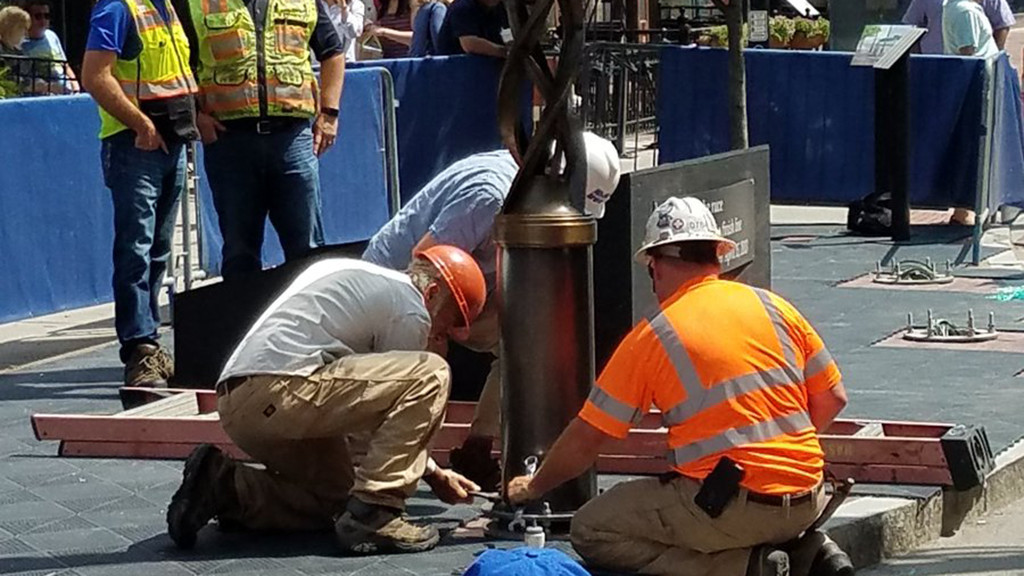
Another set of spires will be placed next week at the second Marathon marker, near the finish line where Krystle Campbell died.
The monument also will incorporate decorative bronze-cast light poles.
Planning began four years ago for the $2 million memorial, which has undergone substantial redesign to satisfy the hopes and expectations of families who lost loved ones.
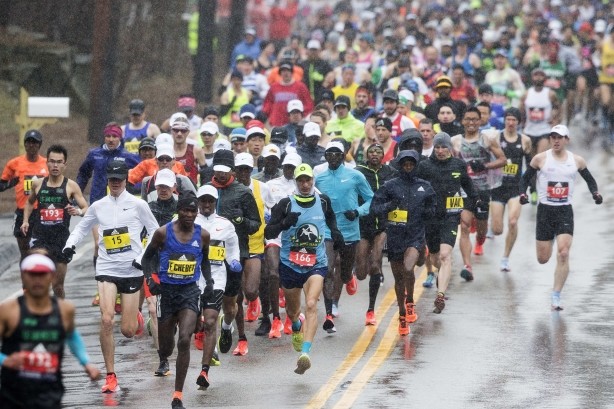
Three spectators were killed and more than 260 others were wounded in the April 15, 2013, attacks, and a Massachusetts Institute of Technology police officer later was fatally shot by the bombers as they tried to steal his gun.
Boston officials also envision a larger monument that will involve input from bombing survivors.
Login to leave a comment
Boston Marathon
Among the nation’s oldest athletic clubs, the B.A.A. was established in 1887, and, in 1896, more than half of the U.S. Olympic Team at the first modern games was composed of B.A.A. club members. The Olympic Games provided the inspiration for the first Boston Marathon, which culminated the B.A.A. Games on April 19, 1897. John J. McDermott emerged from a...
more...Nicky Spinks will lead the way at Trail Skills for Ultrarunners
Scotland-based women’s guided trail running company, Girls on Hills Ltd, have just announced that they will be hosting a ‘Trail Skills for Ultrarunners’ course in Glencoe October 11-13, with the legendary ultrarunner Nicky Spinks the star tutor.
Spinks will be sharing her experiences and coaching women in the essential skills of ultrarunning, including training advice and running with poles. She will be joining an otherwise all-Scottish line-up of other providers, with experts covering areas such as yoga, nutrition, foot-care and self-massage.
For female ultrarunners, there can be no better teacher than Spinks. The inspirational Inov-8 athlete just became the first person to complete double rounds of Britain’s three classic 24-hour mountain running challenges: the Bob Graham Round in England; the Charlie Ramsay Round in Scotland; and now the Paddy Buckley Round in Wales.
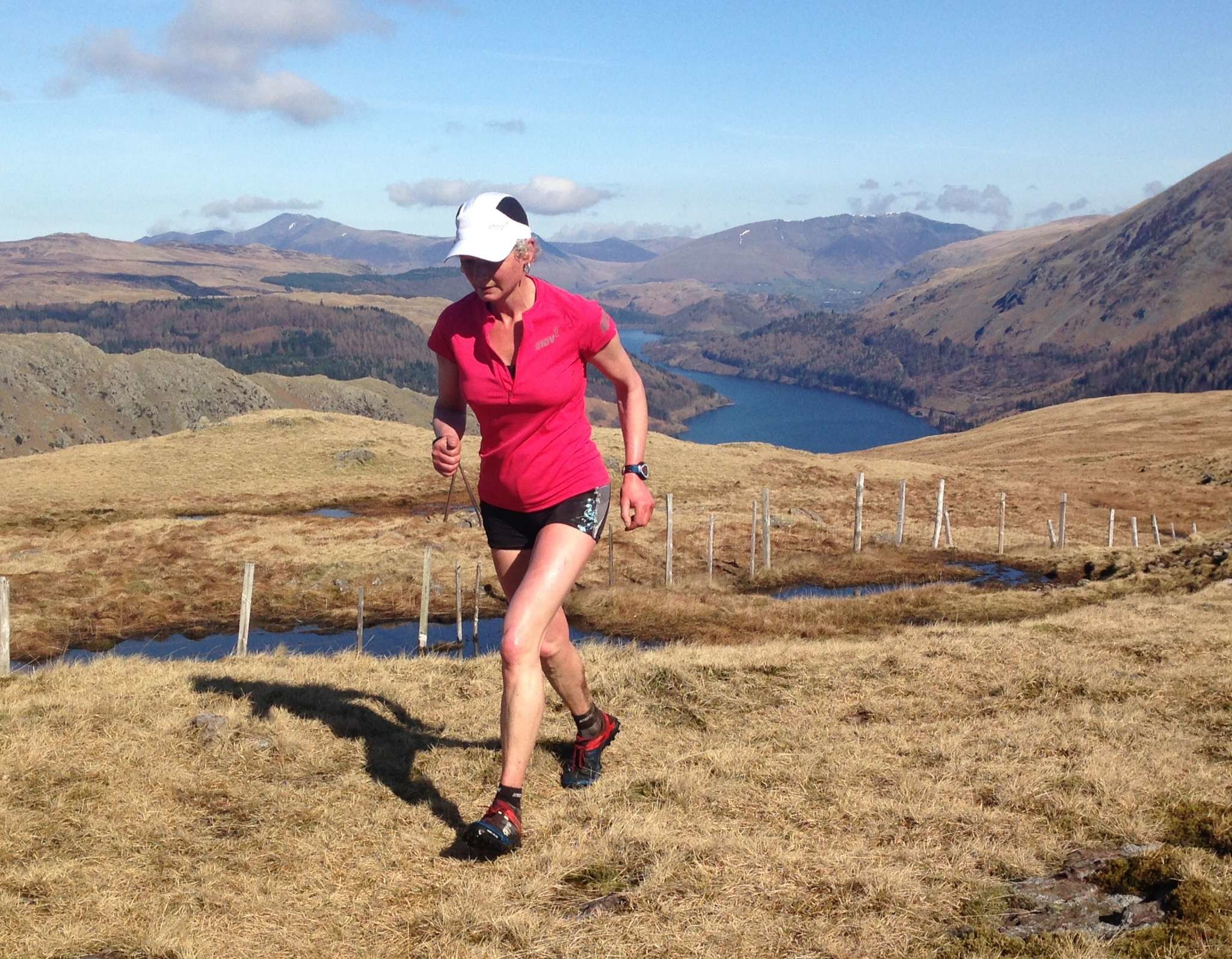
On her two laps of the Paddy Buckley Round circuit last month, Spinks ran 94 peaks and 56,000ft of height gain (almost two times Mount Everest), in 57hrs 27mins to complete the ‘doubles’ and make fell-running history.
Girls on Hills Ddirector Keri Wallace told runABC Scotland online: “Nicky is an incredible woman and an inspiration to so many people, runners and non-runners alike. As a 51-year old, a woman, a farmer and a cancer-survivor, she breaks so many trail-running stereotypes! Who better to join us at Girls on Hills and help coach women in the skills they need to get outside and explore their limits through ultrarunning!”
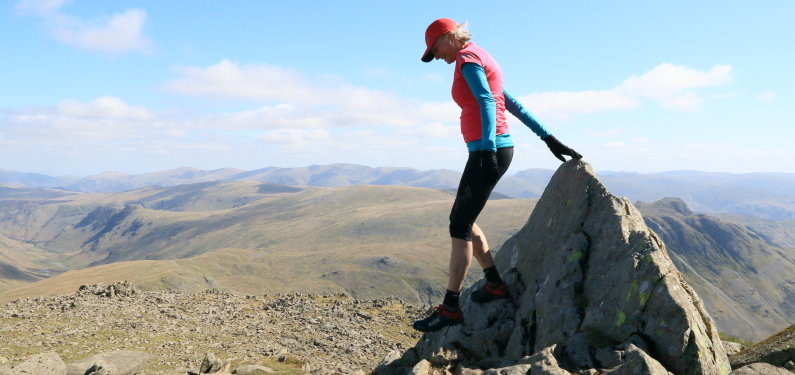
As a company, Girls on Hills Ltd, who are sponsored by Ellis Brigham Mountain Sports and are partnered with Inov-8 clothing, seeks to address the gender gap in participation that exists in trail, fell and skyrunning by increasing the accessibility of off-road running disciplines.
“There are no actual barriers stopping women from running long distances in remote places or exploring the mountains – there are only perceived barriers. We welcome women of all ages and from all walks of life, and surprise them with how much they can achieve!”
Login to leave a comment
I walked with the camels, sat on top of sand dunes, sang songs, mediated and helped Runners through some tough moments at MDS
by Lisa Smith-Batchen
Login to leave a comment
Using Poles can greatly add to a more efficient trail running experience
Login to leave a comment
Here are the Best Poles for Trail and Ultrarunning
Login to leave a comment


